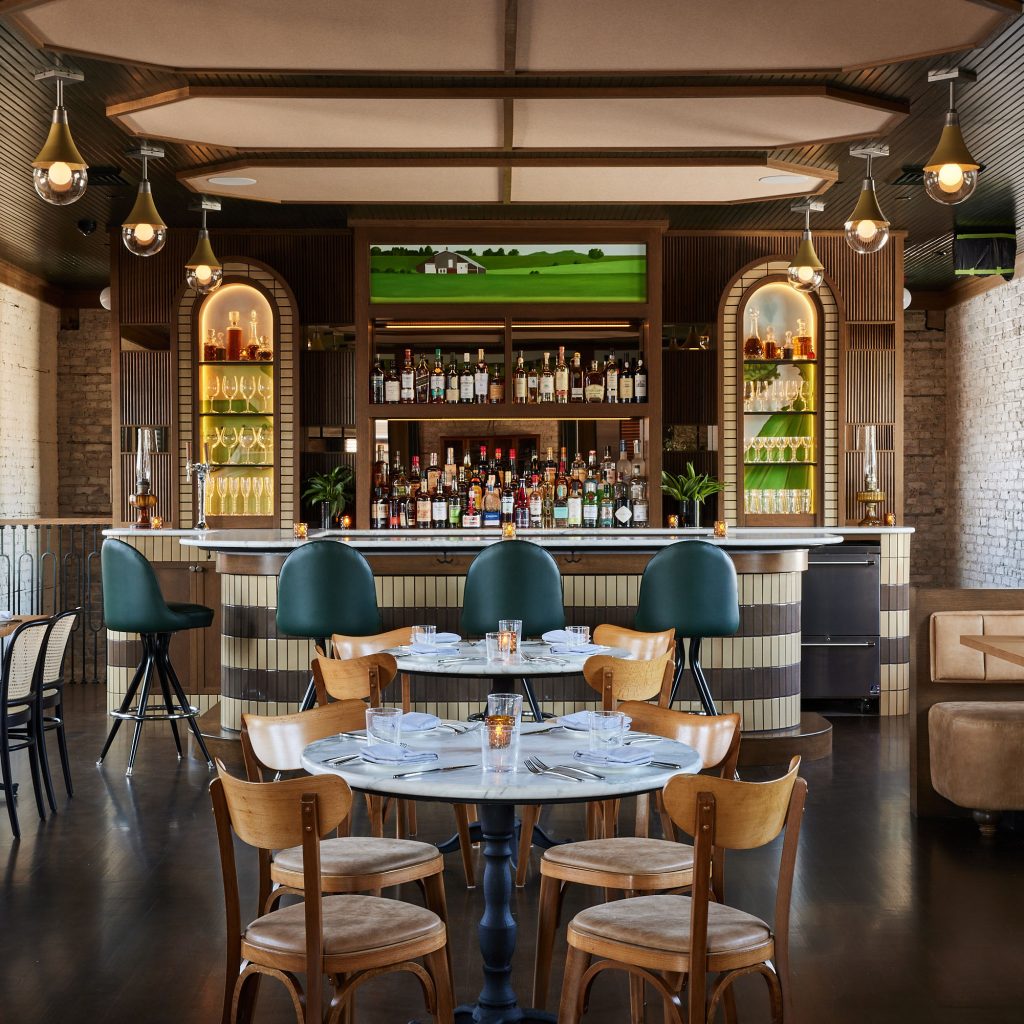Lore Group creates seafood restaurant with "playful sense of nostalgia" within One Hundred Shoreditch hotel
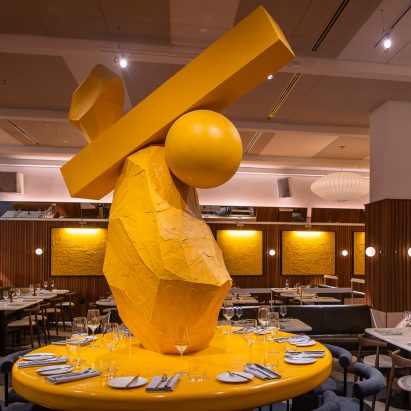
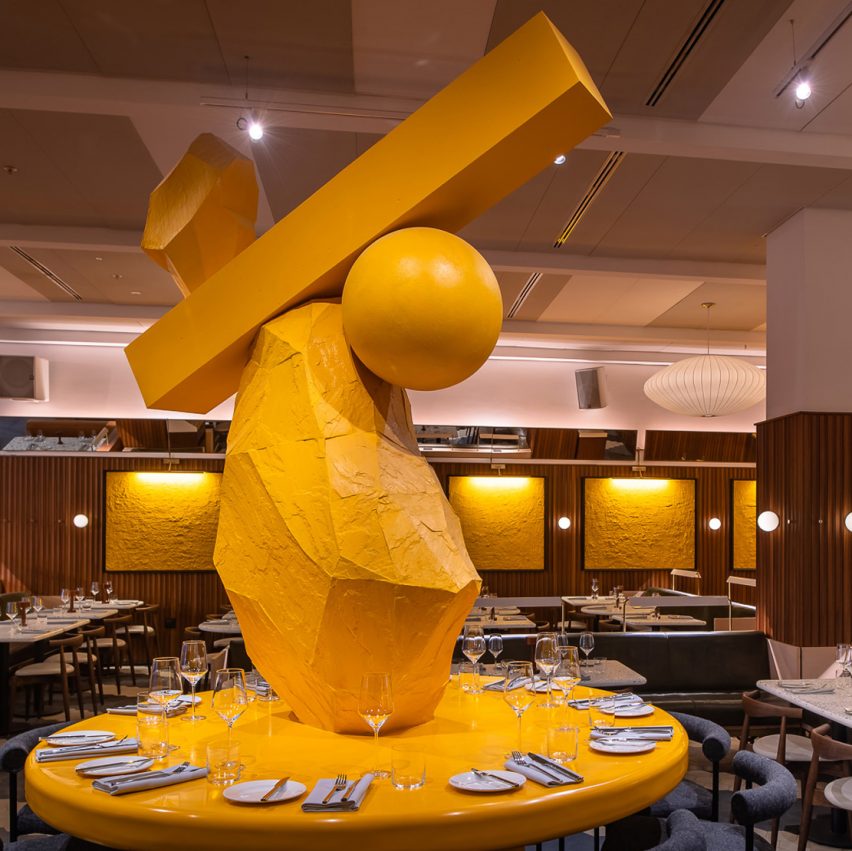
Hospitality chain Lore Group has opened the Goddard & Gibbs seafood restaurant within the One Hundred Shoreditch hotel, which occupies the former Ace Hotel London Shoreditch building.
Lore Group's creative director Jacu Strauss designed the restaurant within the recently opened hotel on Shoreditch High Street, London, to evoke the seaside to be in keeping with its seafood menu.
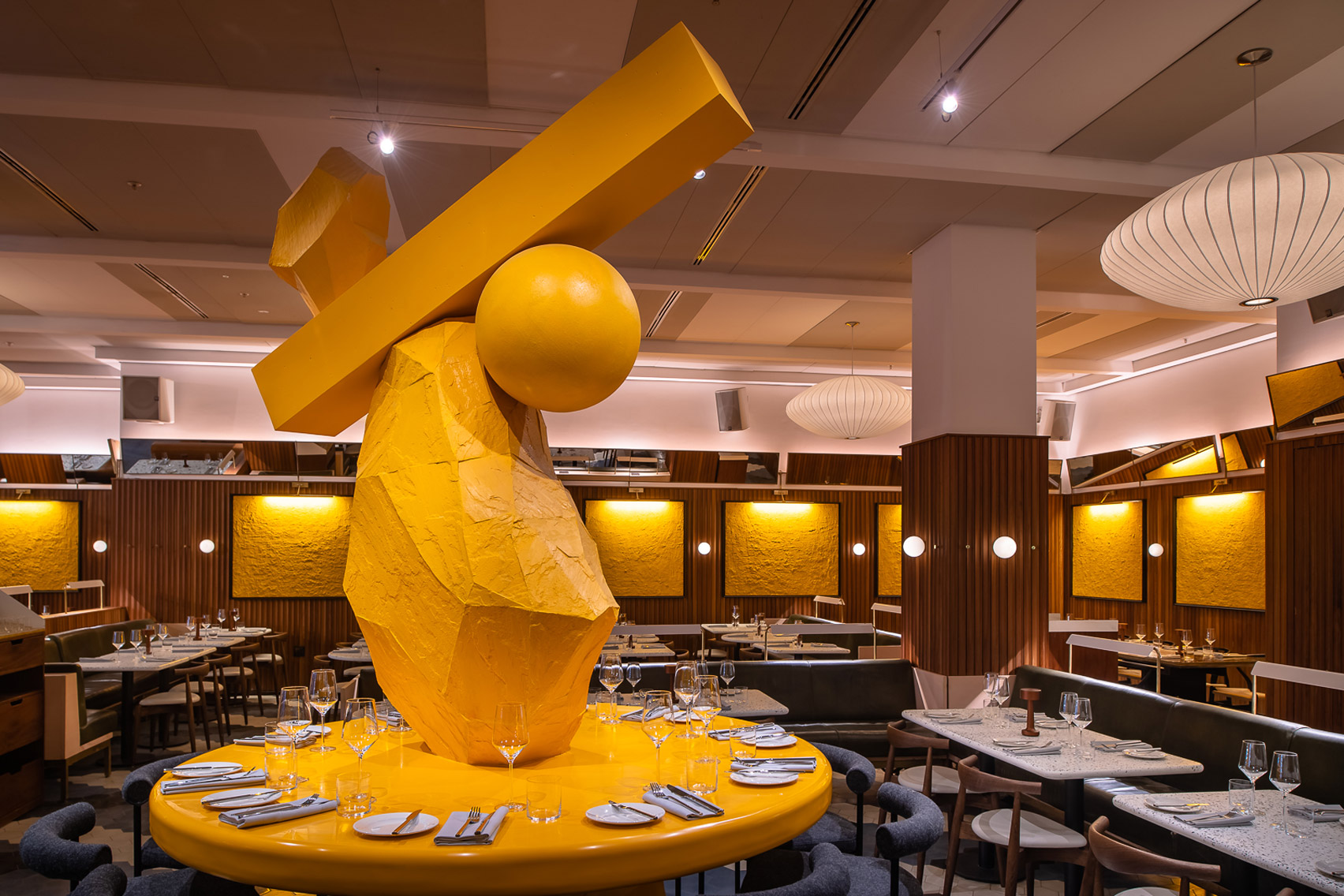 A yellow rock sculpture and sandy artworks give the restaurant a beachy feel
A yellow rock sculpture and sandy artworks give the restaurant a beachy feel
A gigantic yellow sculpture, created from a sketch drawn by Strauss, stands on a table at the centre of the restaurant.
"The sculpture is based on my memories of trips to the seaside as a child and making towers from piles of rocks on the beach," Strauss said.
"I wanted the space to have a playful sense of nostalgia to which our guests could relate."
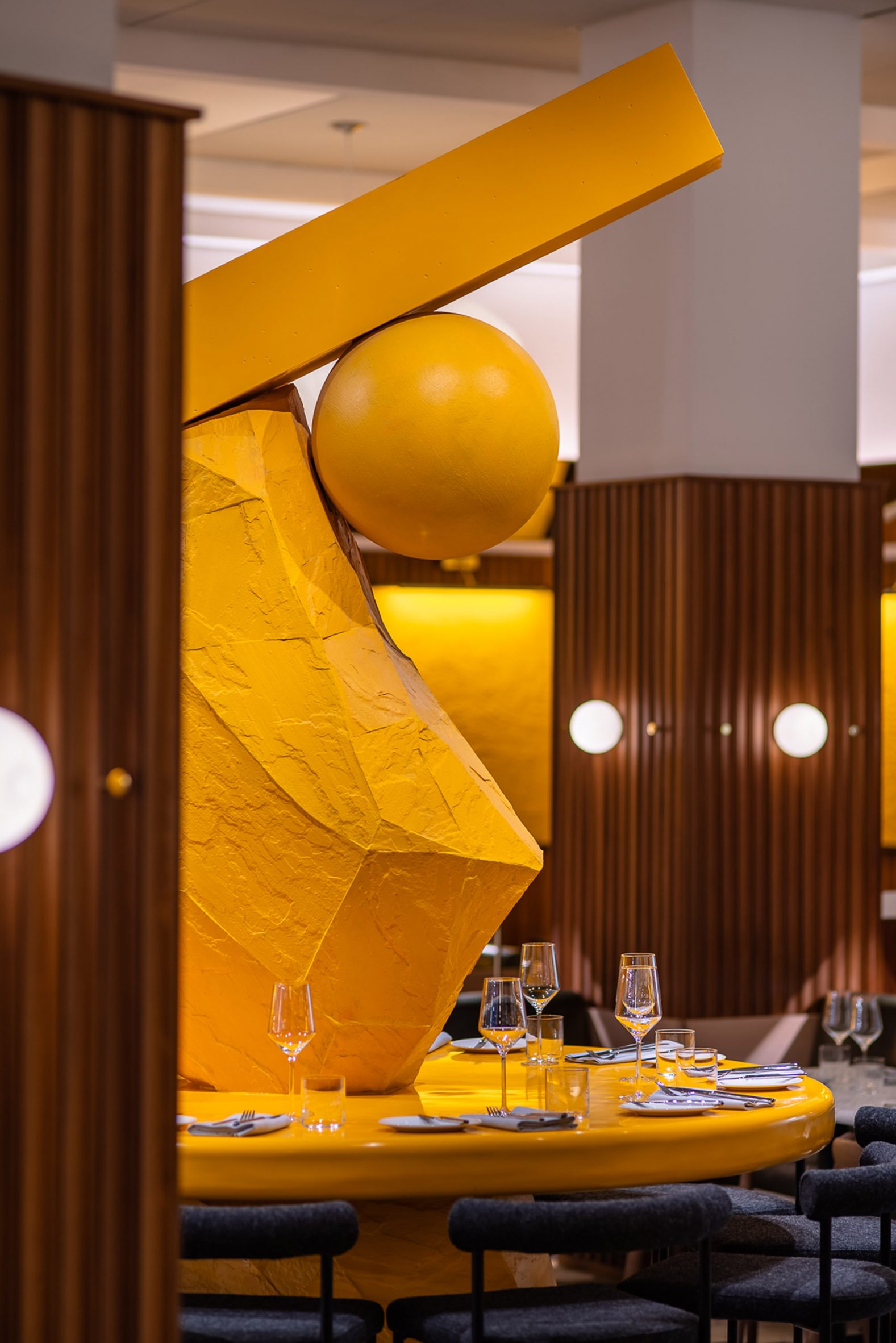 The central sculpture is based on the designer's childhood trips to the seaside
The central sculpture is based on the designer's childhood trips to the seaside
Continuing the theme, wood-panelled walls of the restaurant were adorned with "sandscape" artworks made from sand that have been painted yellow and framed.
Parasol-like pendant lights from Herman Miller hang from the ceiling, alongside pearly spherical bulbs.
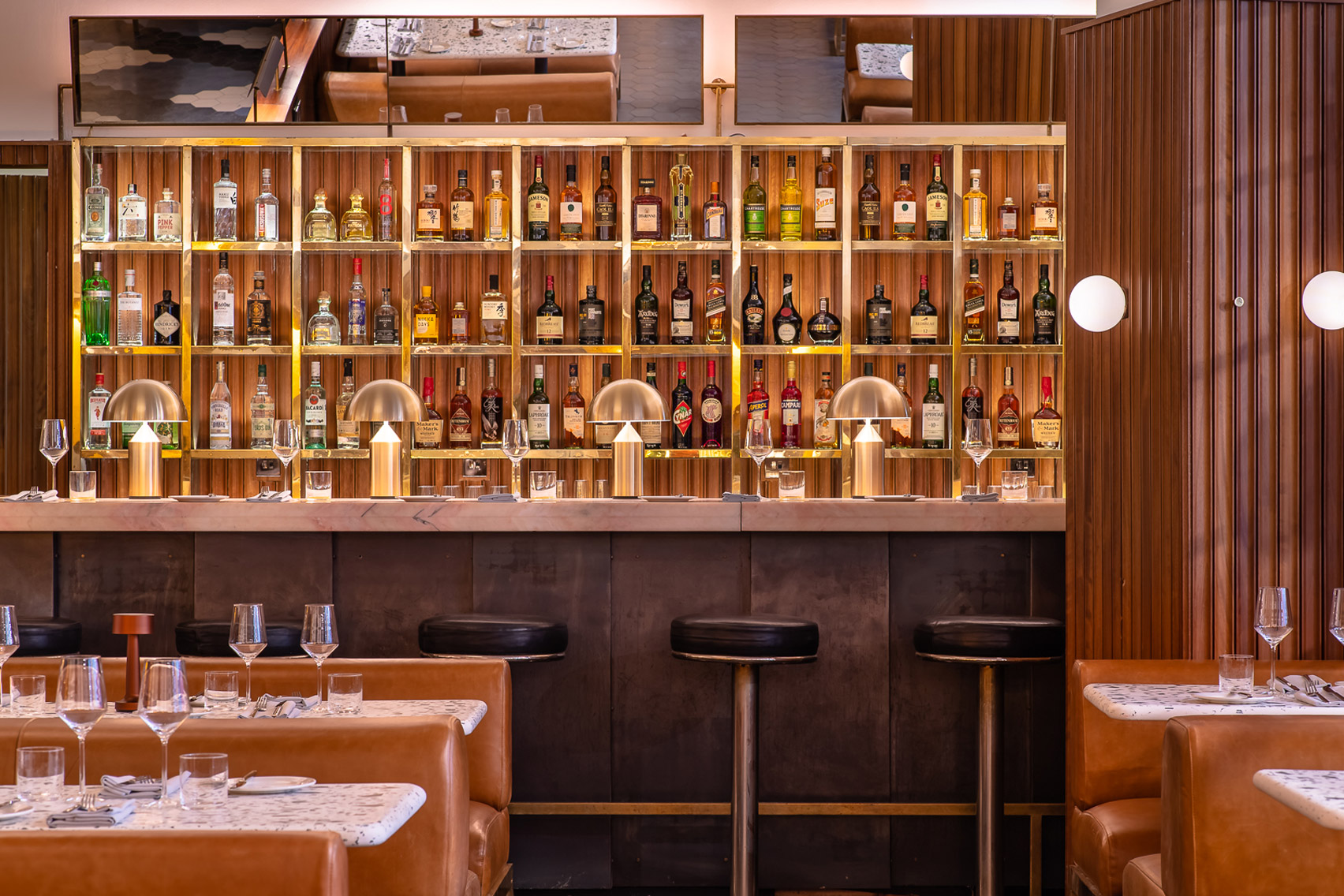 Angled mirrors run the perimeter of the restaurant
Angled mirrors run the perimeter of the restaurant
Angled mirrors around the top of the wall panelling direct attention back onto the central sculpture.
Another bright yellow boulder is stationed in the corner of the room, while seaweed-green banquettes are interspersed among the seating.
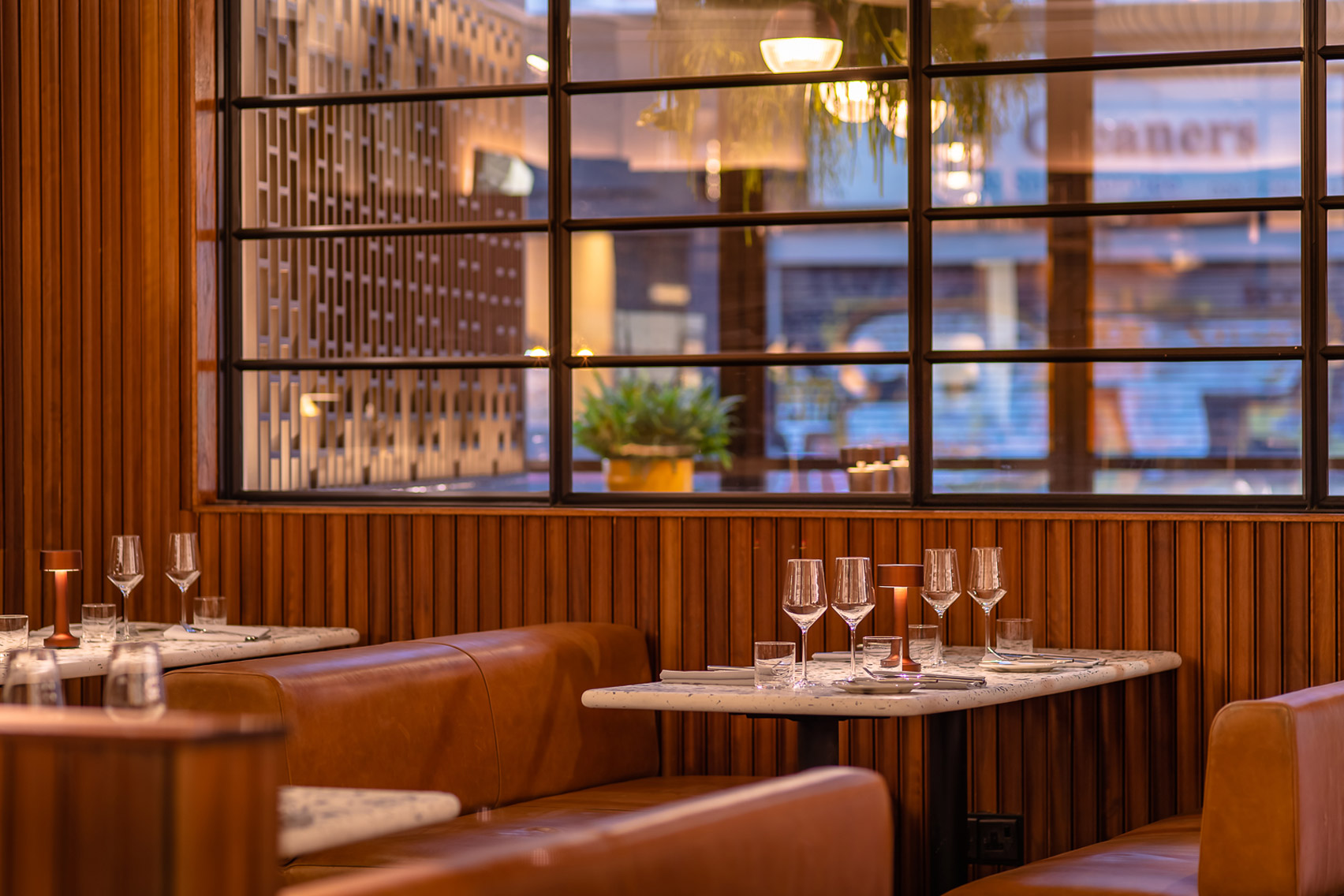 The walls are clad in a strip-textured wood panelling
The walls are clad in a strip-textured wood panelling
The tabletops are fashioned from black and white aggregate terrazzo, with hexagonal tiles making up the floor.
At the entrance to the restaurant from the street, what was formerly a flower shop has been converted into a wine bar characterised by terracotta tiles.
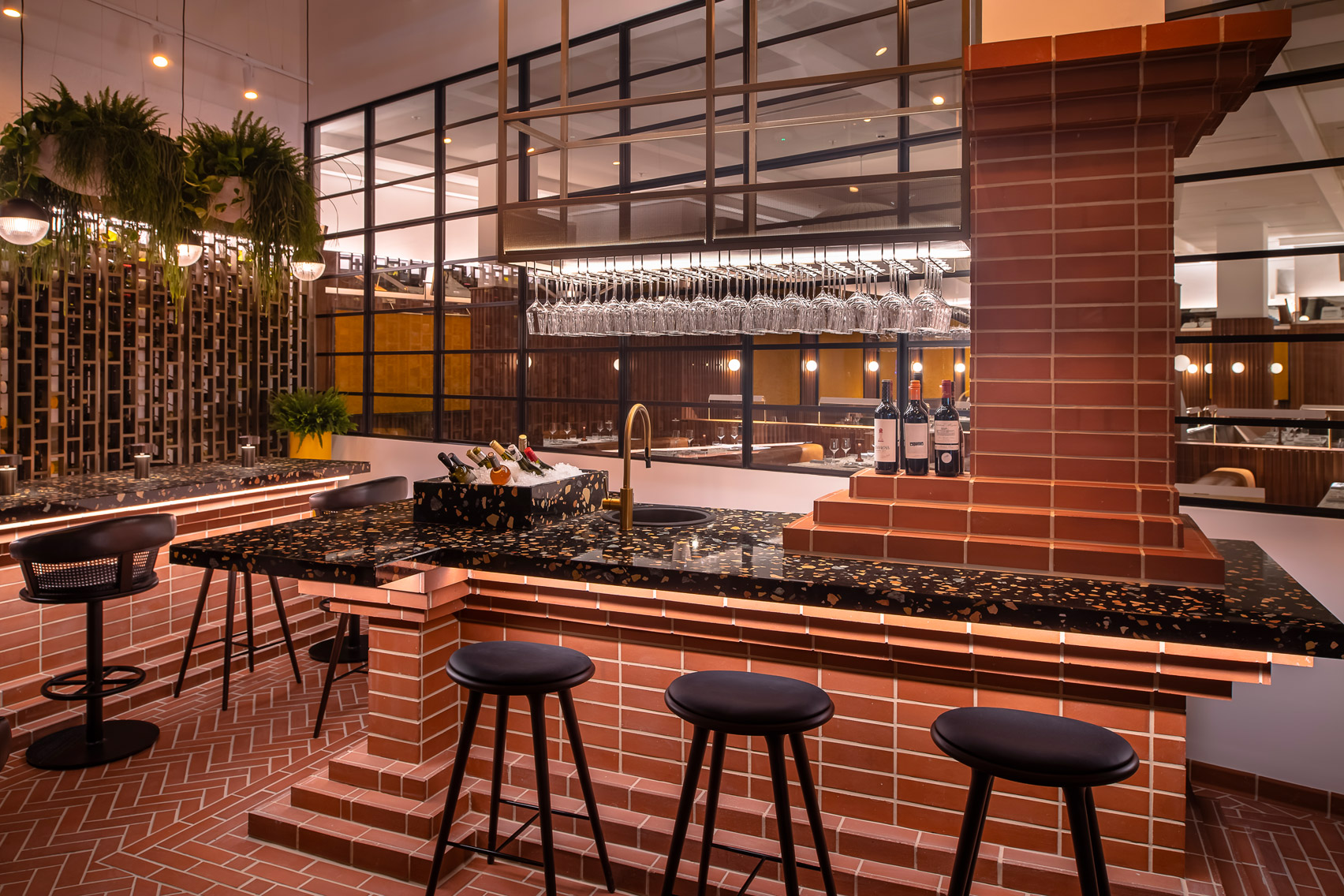 A wine bar area has been set up in the street entrance
A wine bar area has been set up in the street entrance
The restaurant's dishes are intended to reference the fishing villages and seaside towns of the British coastline, with a focus on ethically sourced ingredients.
Goddard & Gibbs opened last week as part of the One Hundred Shoreditch hotel.
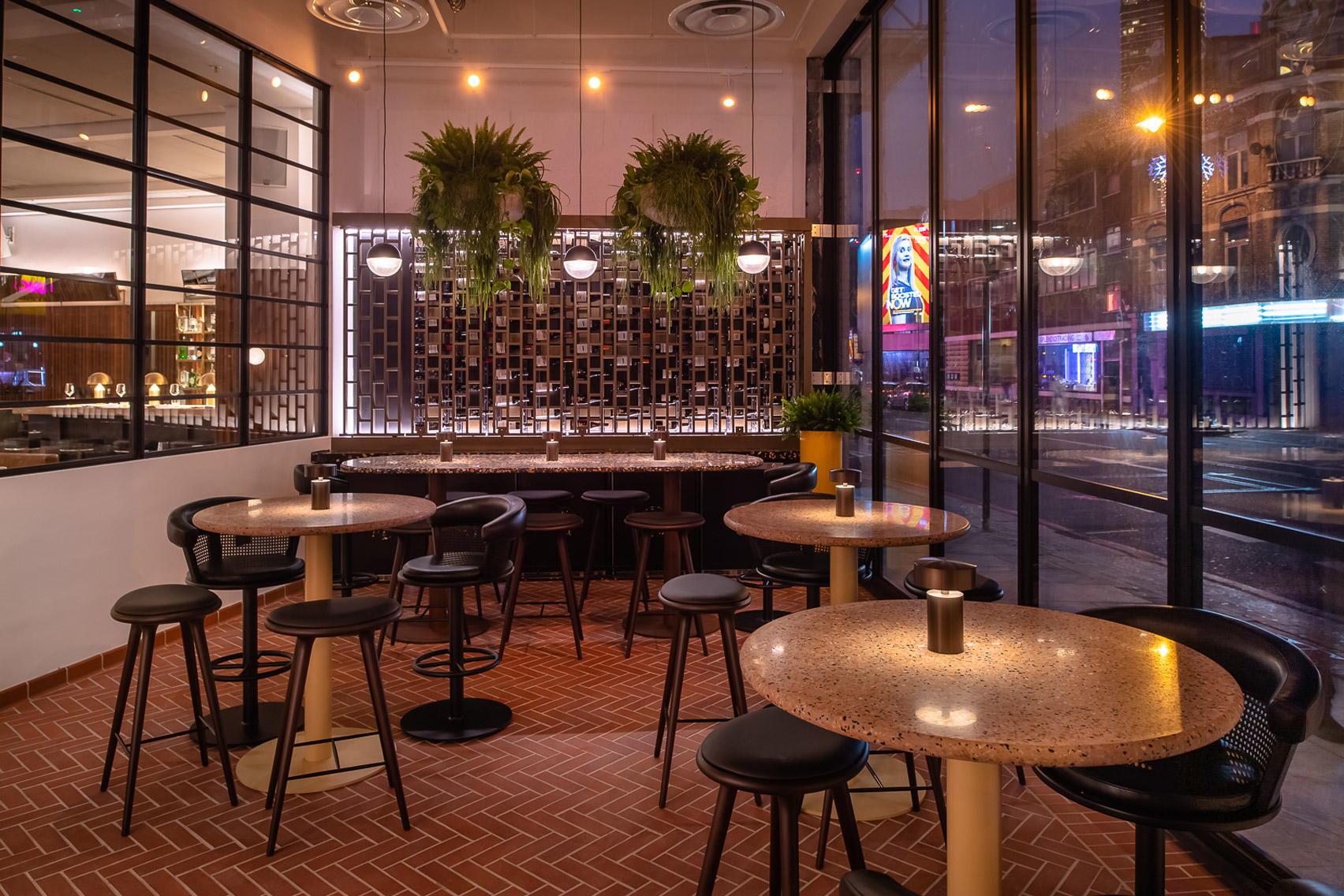 Terrazzo table tops are used throughout the restaurant
Terrazzo table tops are used throughout the restaurant
One Hundred Shoreditch occupies the same building as Ace Hotel's London outpost, which closed in 2020 having been initially shuttered as a result of the coronavirus pandemic.
Lore Group also operates Sea Containers, a hotel on London's Southbank with interiors designed by Tom Dixon, as well as the Pulitzer in Amsterdam and the Riggs and Lyle hotels, both in Washington DC.
With One Hundred Shoreditch it hopes to mirror Shoreditch's "new, grown-up feel while retaining the buzz and vibrance synonymous with the area".
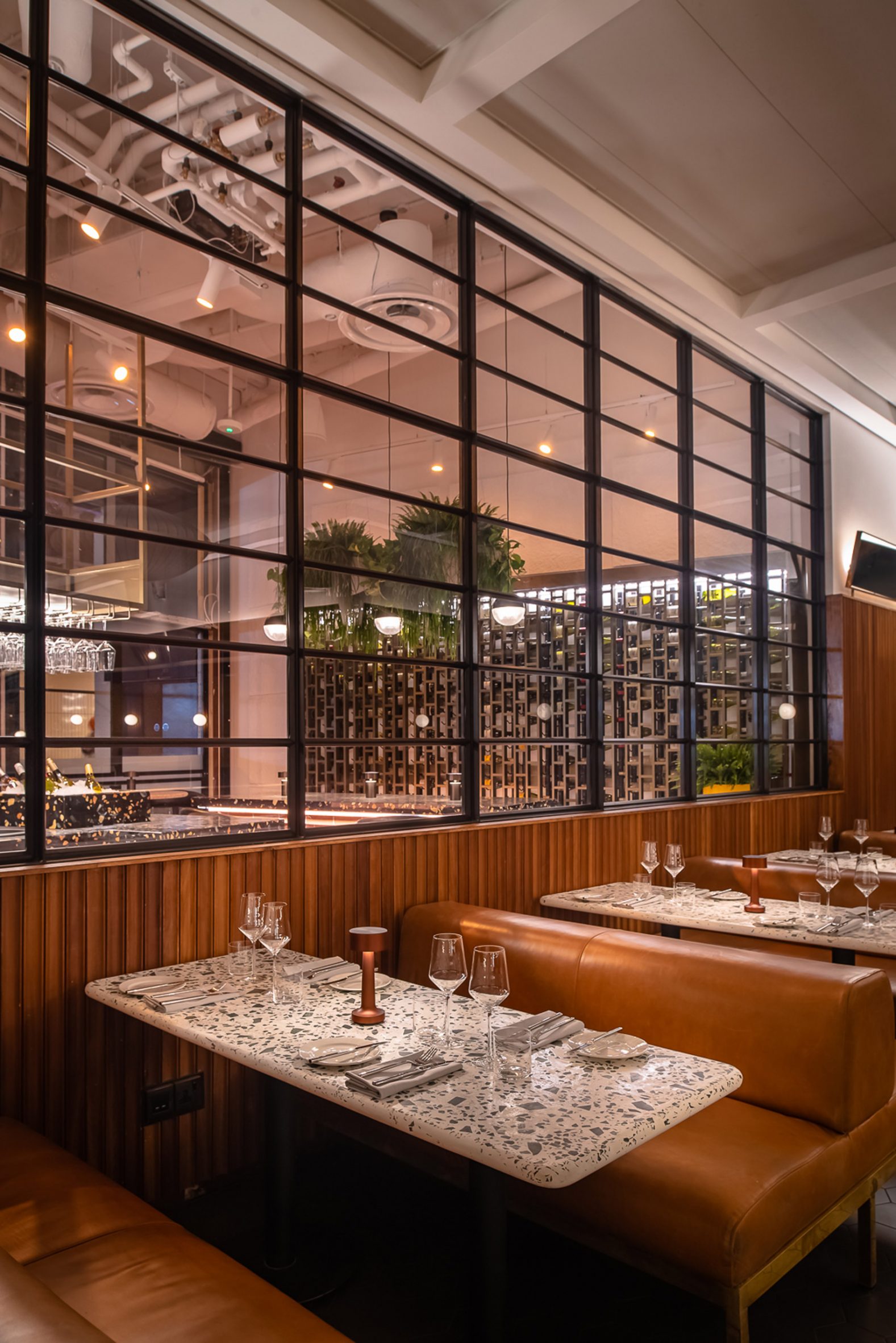 Lore Group has opened the restaurant as part of its new One Hundred Shoreditch hotel
Lore Group has opened the restaurant as part of its new One Hundred Shoreditch hotel
Other recently opened hotels in London include Buckle Street Studios, designed by Grzywinksi+Pons and a Room2 outpost in Chiswick designed by Project Orange, which is claimed to be the world's first whole-life net-zero hotel.
The images are courtesy of One Hundred Shoreditch.
The post Lore Group creates seafood restaurant with "playful sense of nostalgia" within One Hundred Shoreditch hotel appeared first on Dezeen.
#restaurantsandbars #all #interiors #hotels #london #uk #restaurants
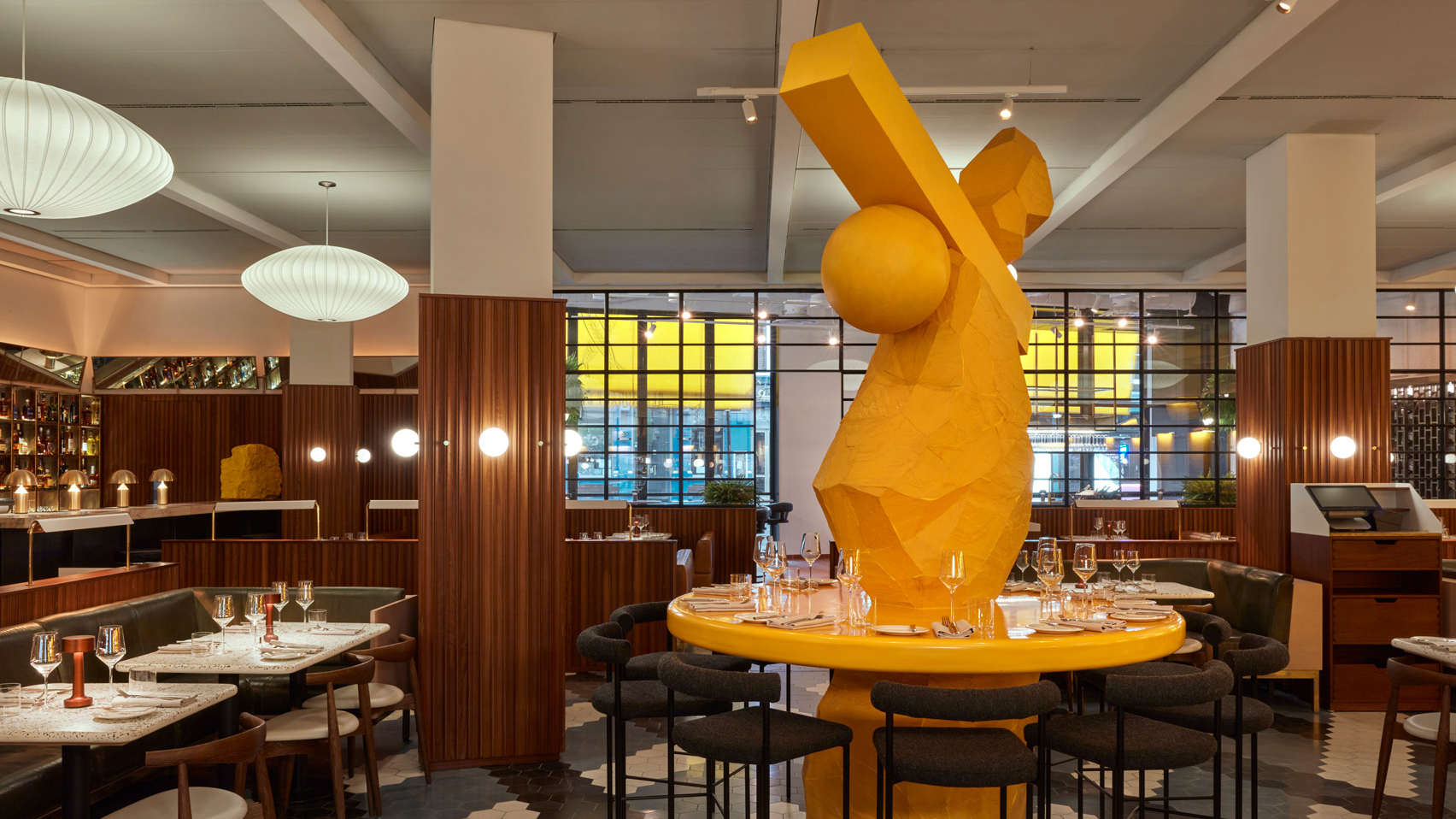
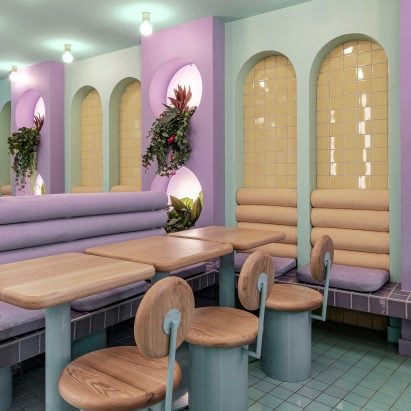
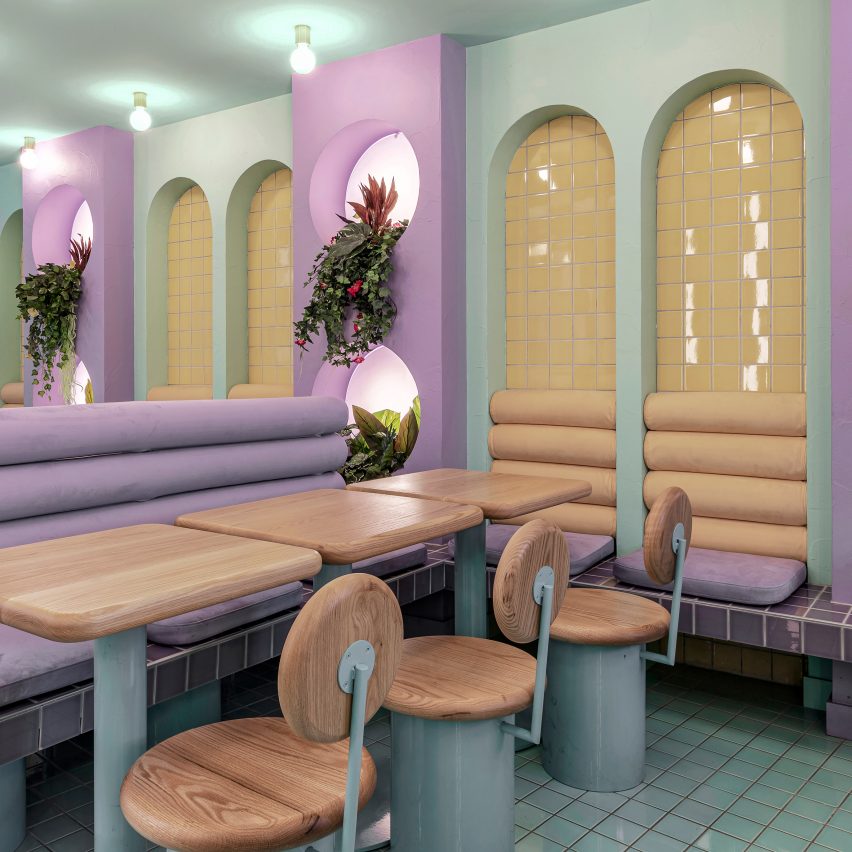
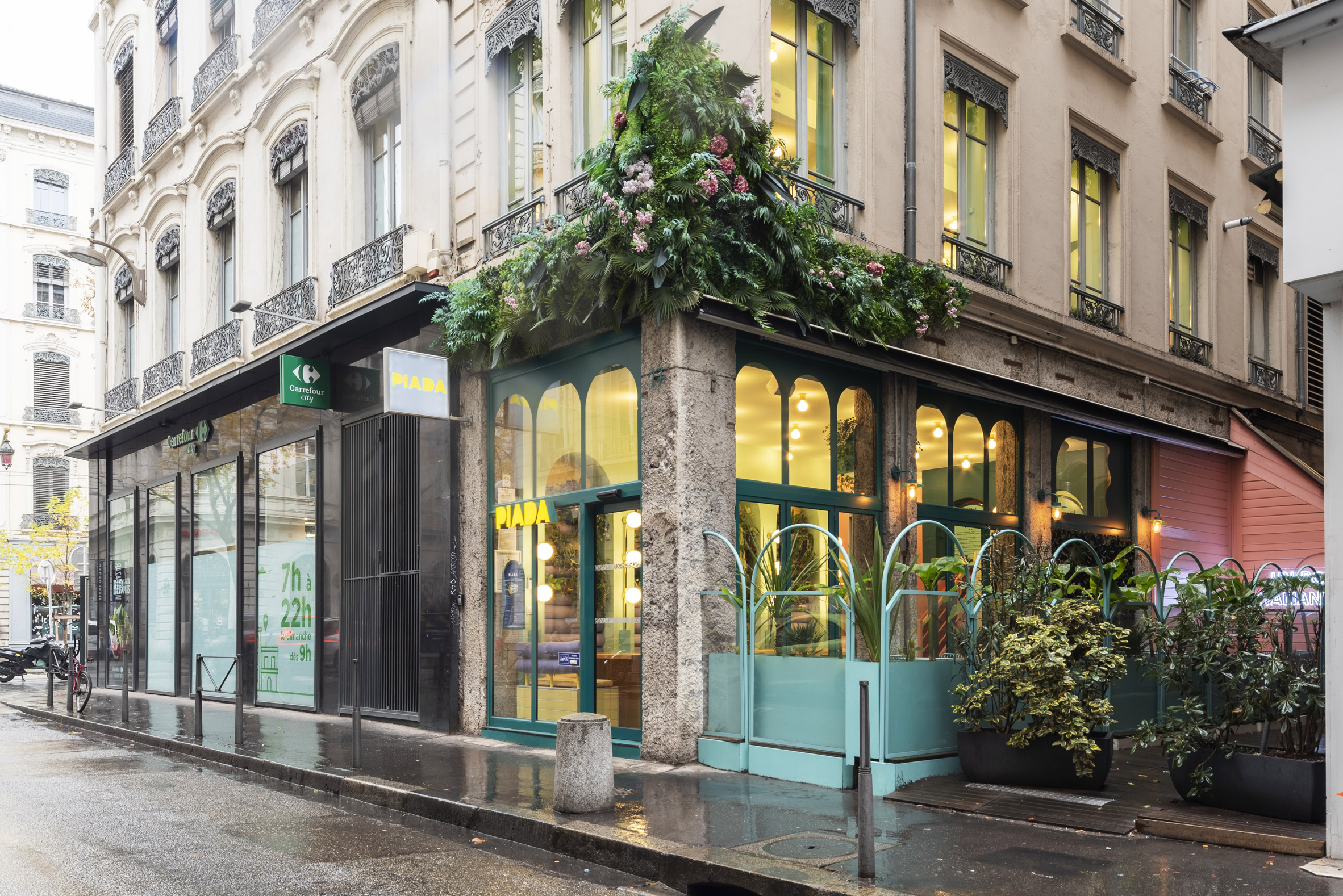 Piada is a restaurant in Lyon
Piada is a restaurant in Lyon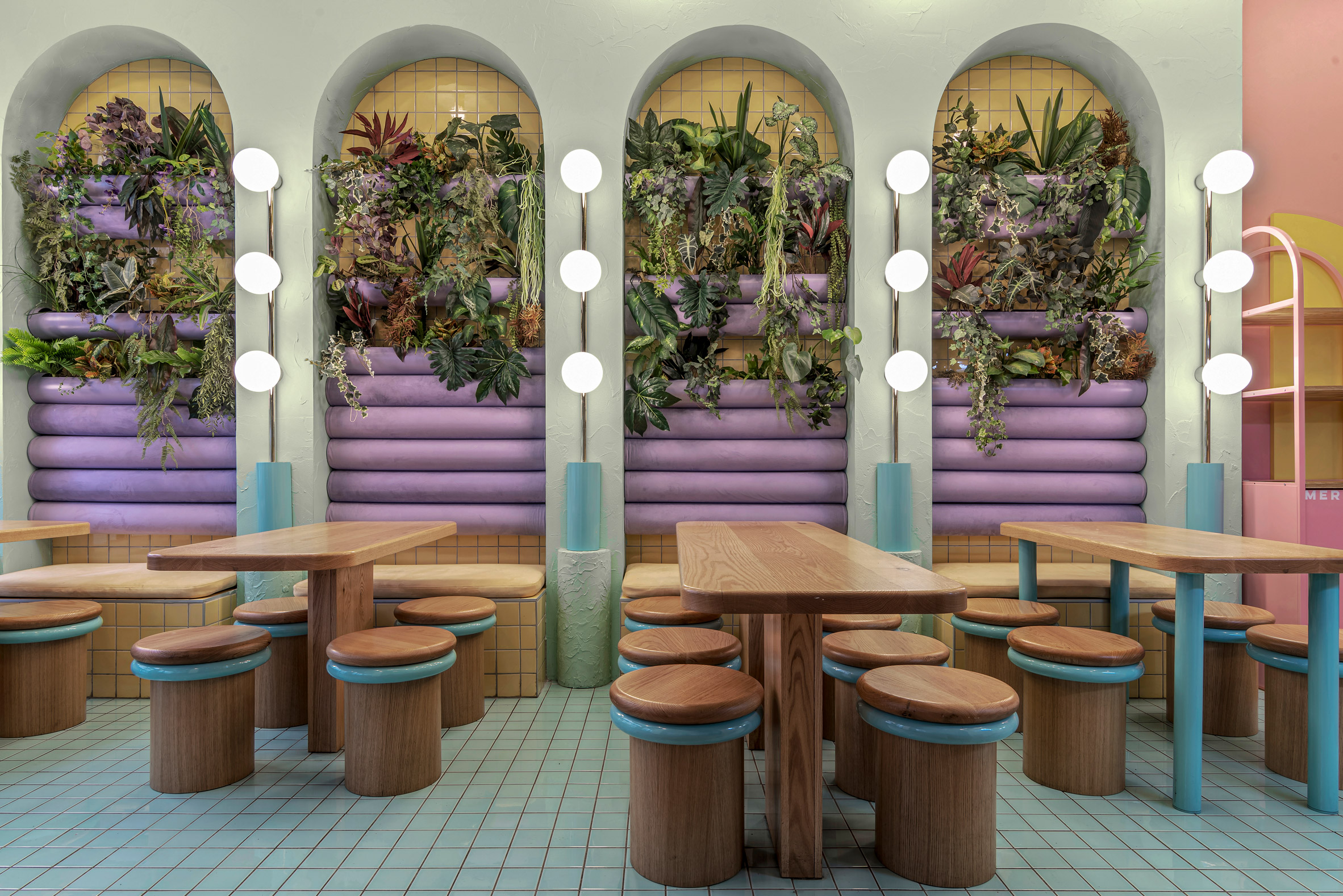 Masquespacio took cues from traditional Italian eateries
Masquespacio took cues from traditional Italian eateries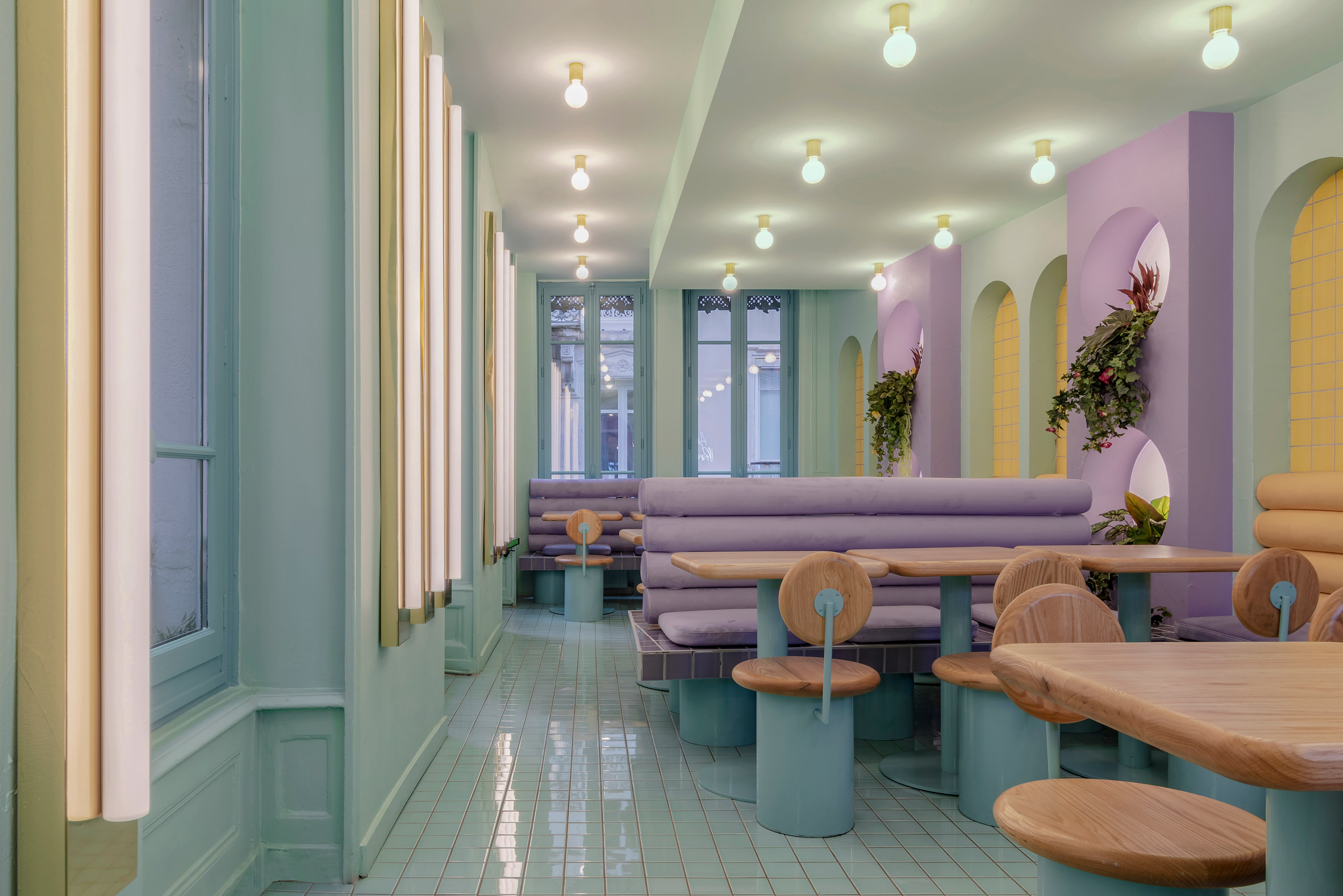 Bold blocks of colour define the space
Bold blocks of colour define the space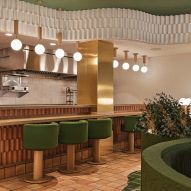
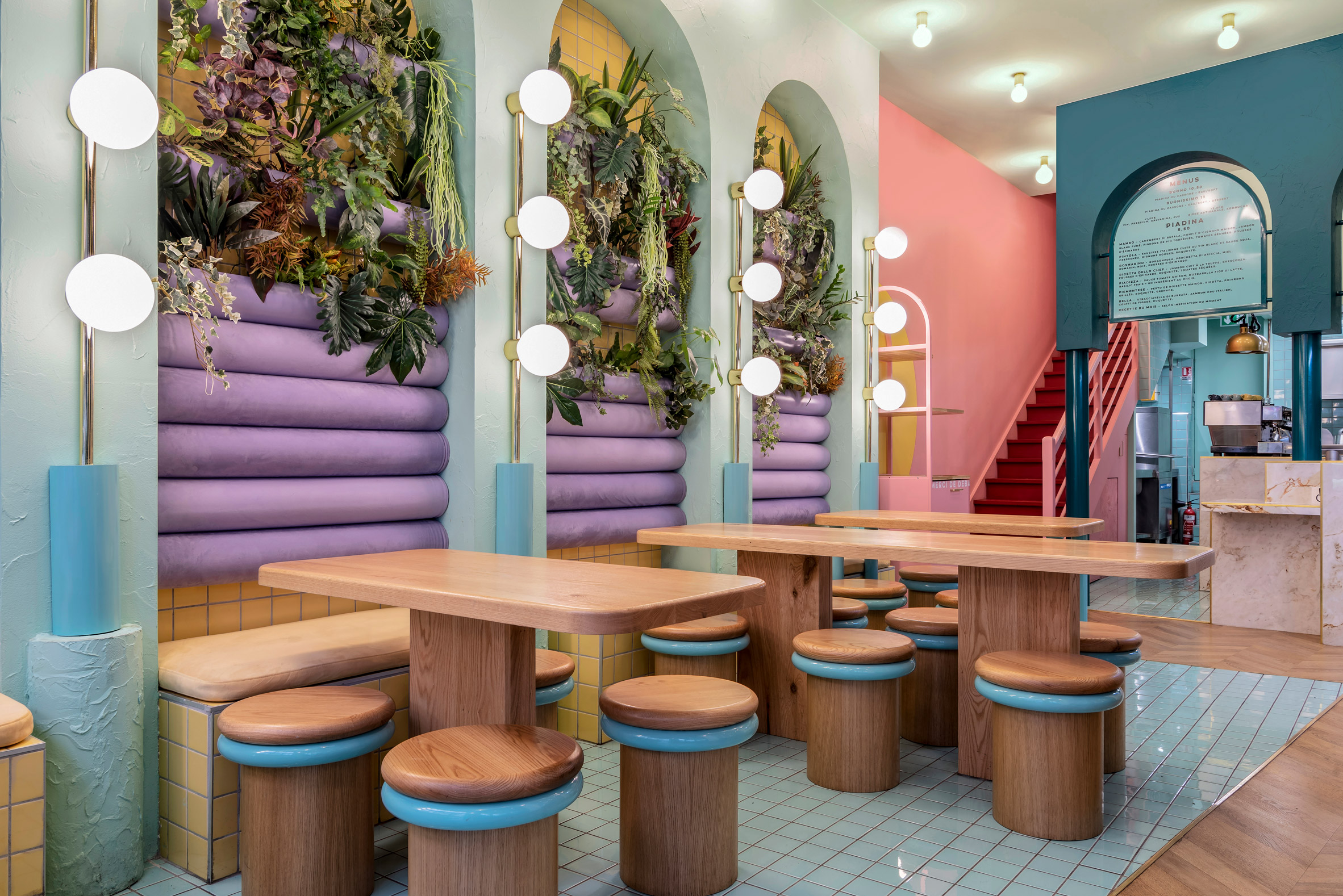 Piada's design is also influenced by its healthy food menu
Piada's design is also influenced by its healthy food menu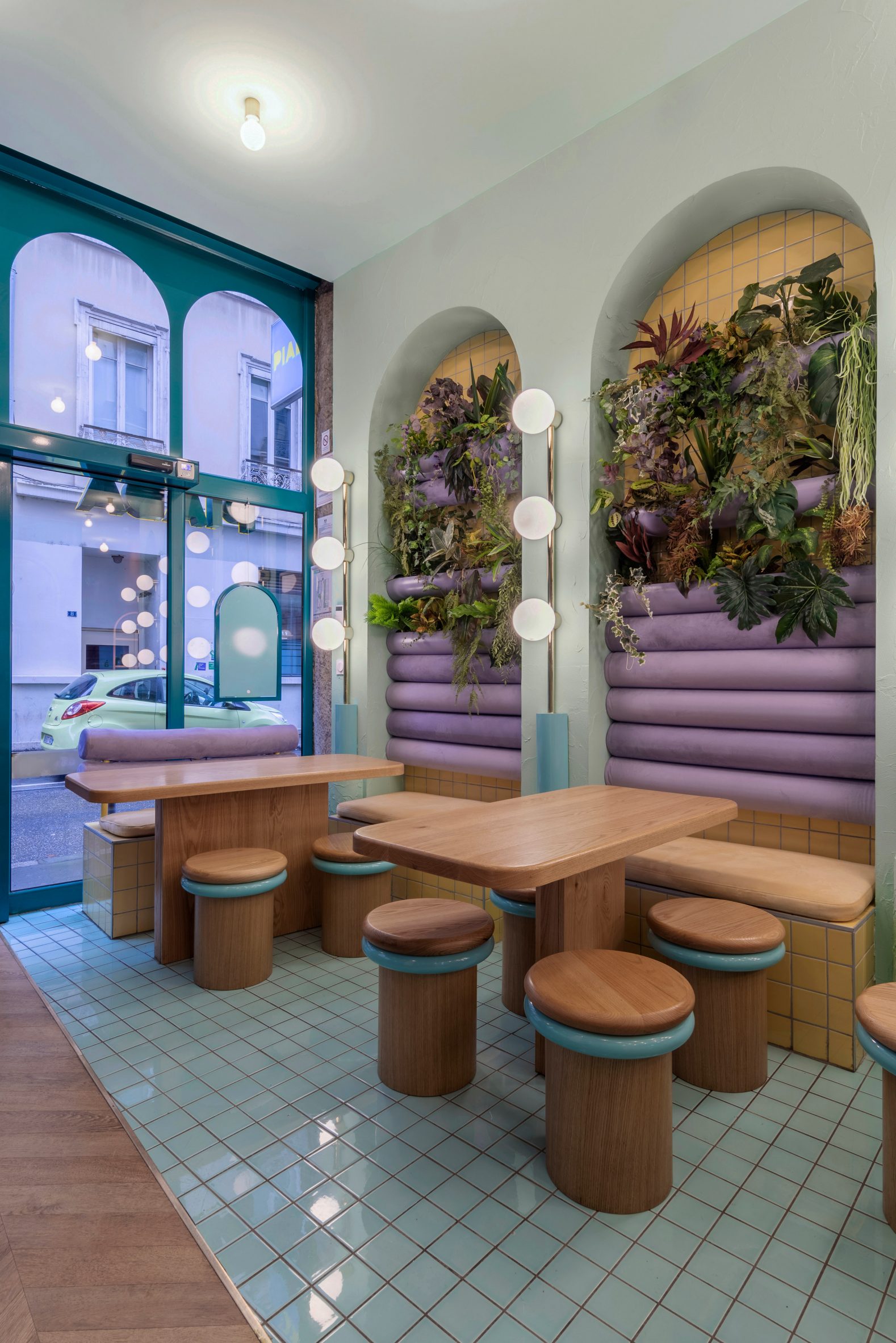 The restaurant is the second of its kind in the French city
The restaurant is the second of its kind in the French city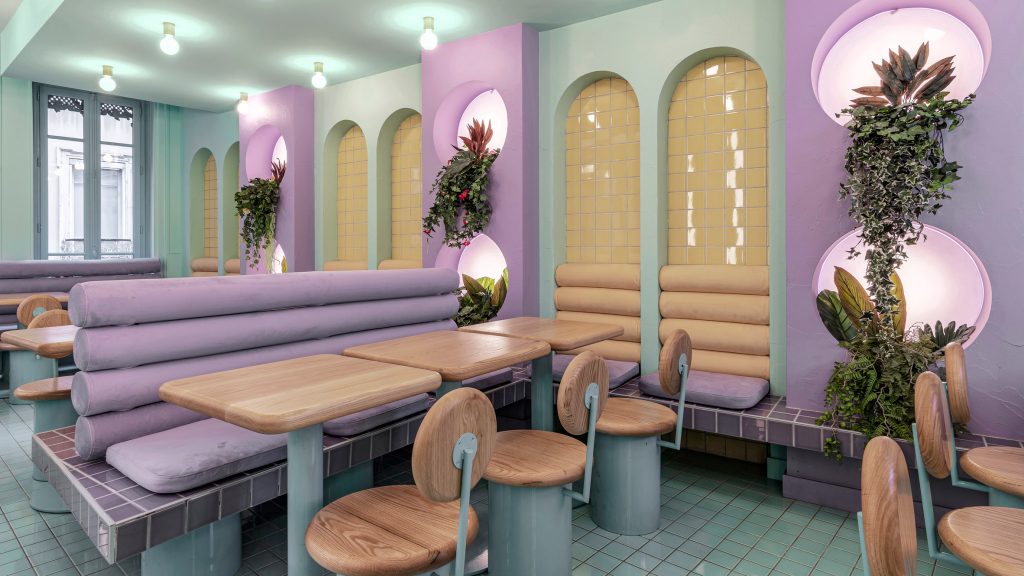
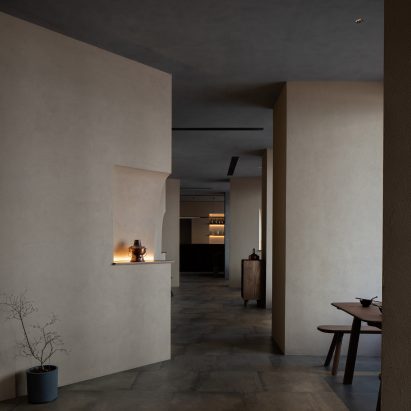
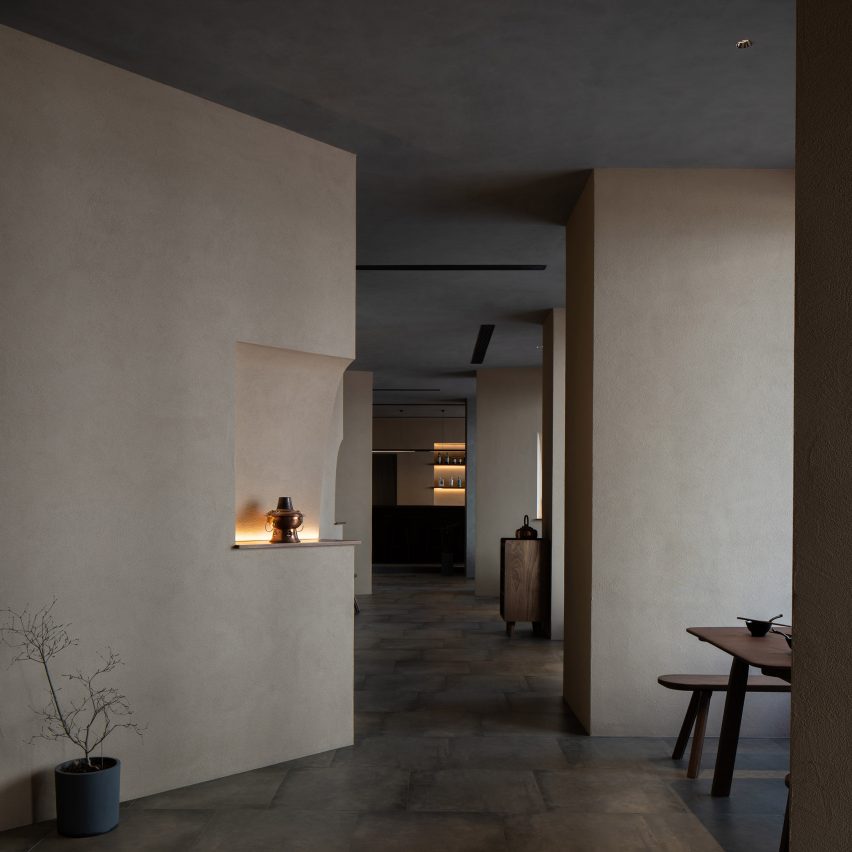
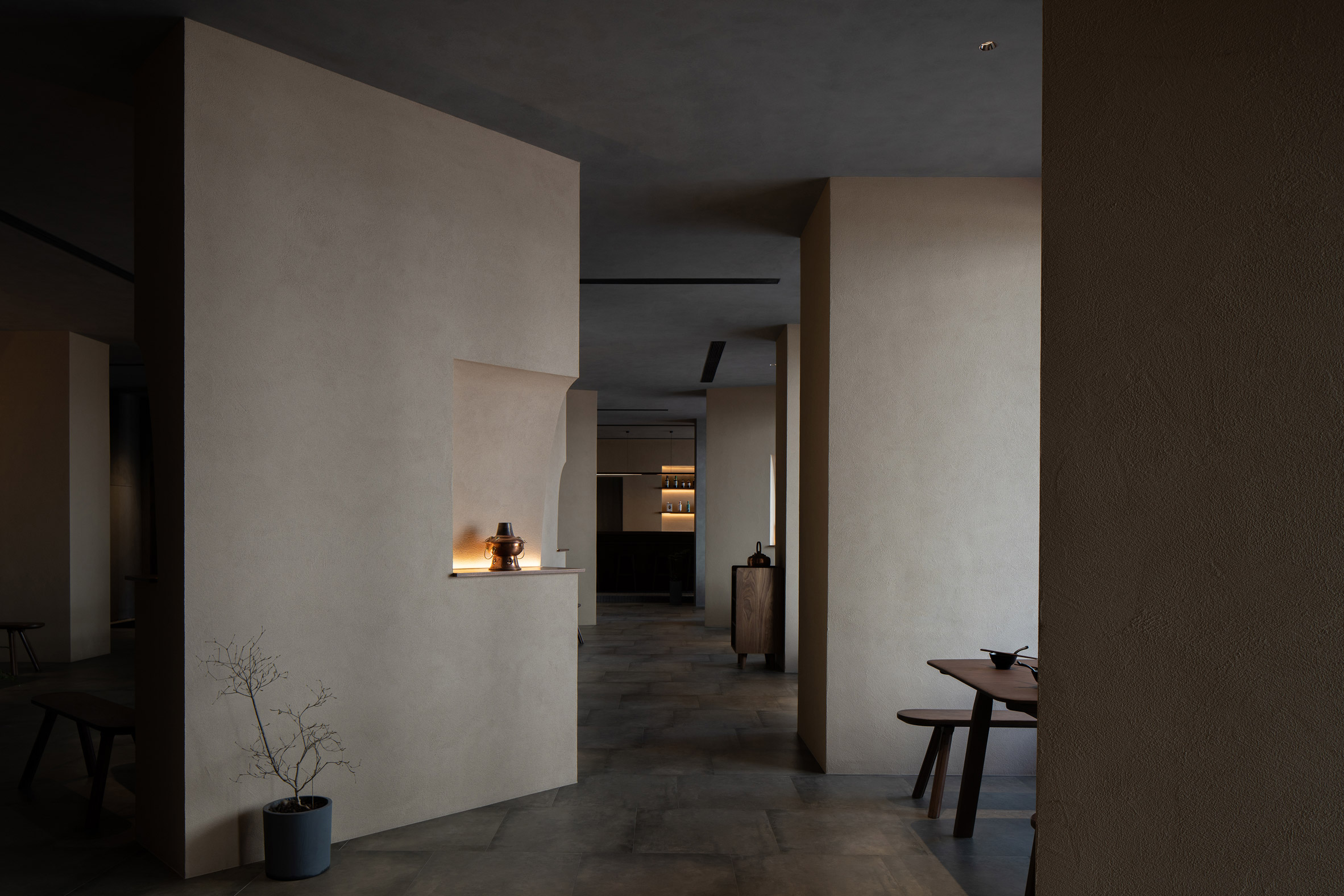 Structural panels found throughout Jin Sheng Long are now enclosed by stucco walls
Structural panels found throughout Jin Sheng Long are now enclosed by stucco walls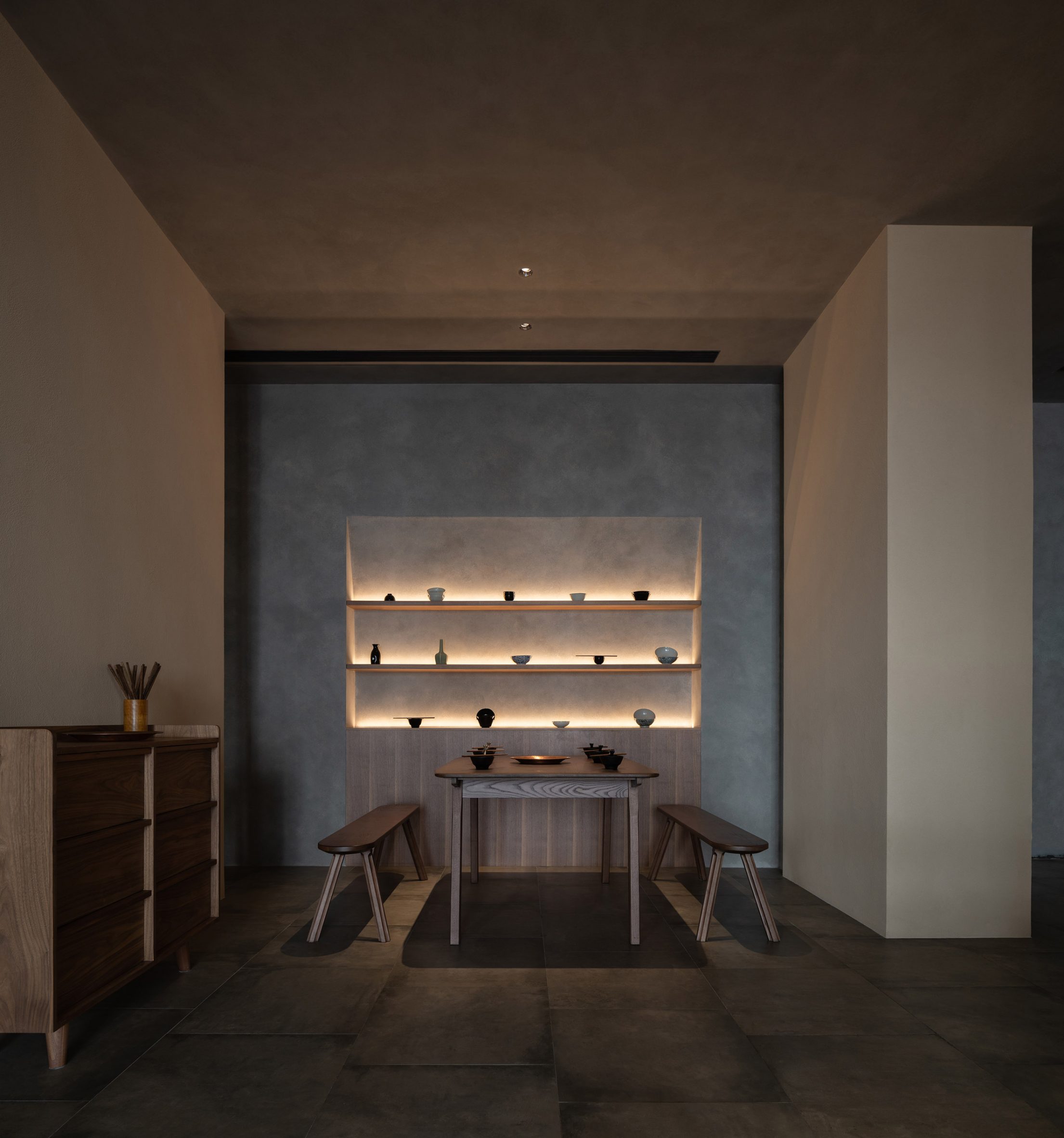 The walls demarcate cosy dining nooks
The walls demarcate cosy dining nooks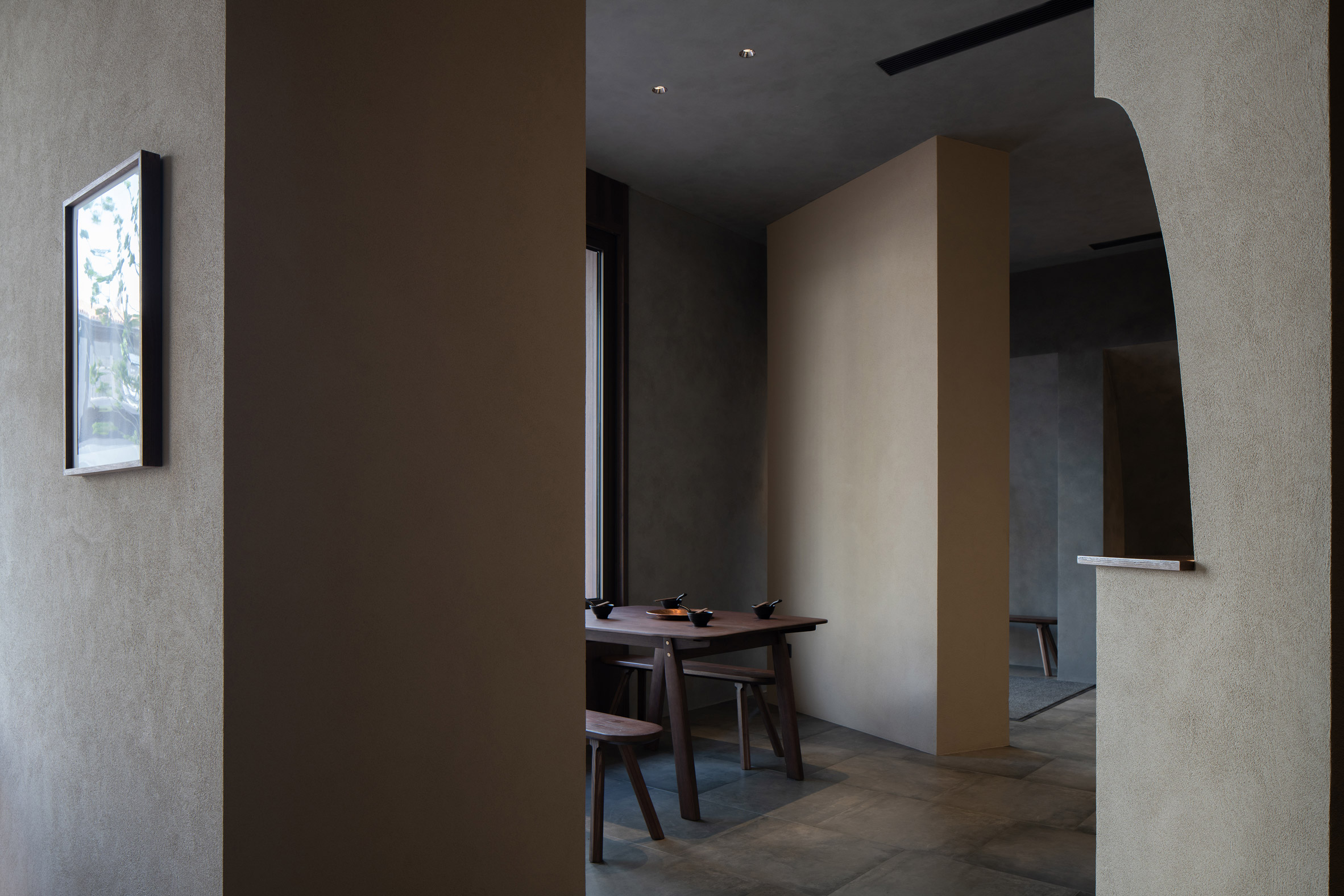 The restaurant's tables and chairs resemble those found in a food market
The restaurant's tables and chairs resemble those found in a food market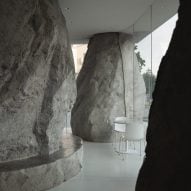
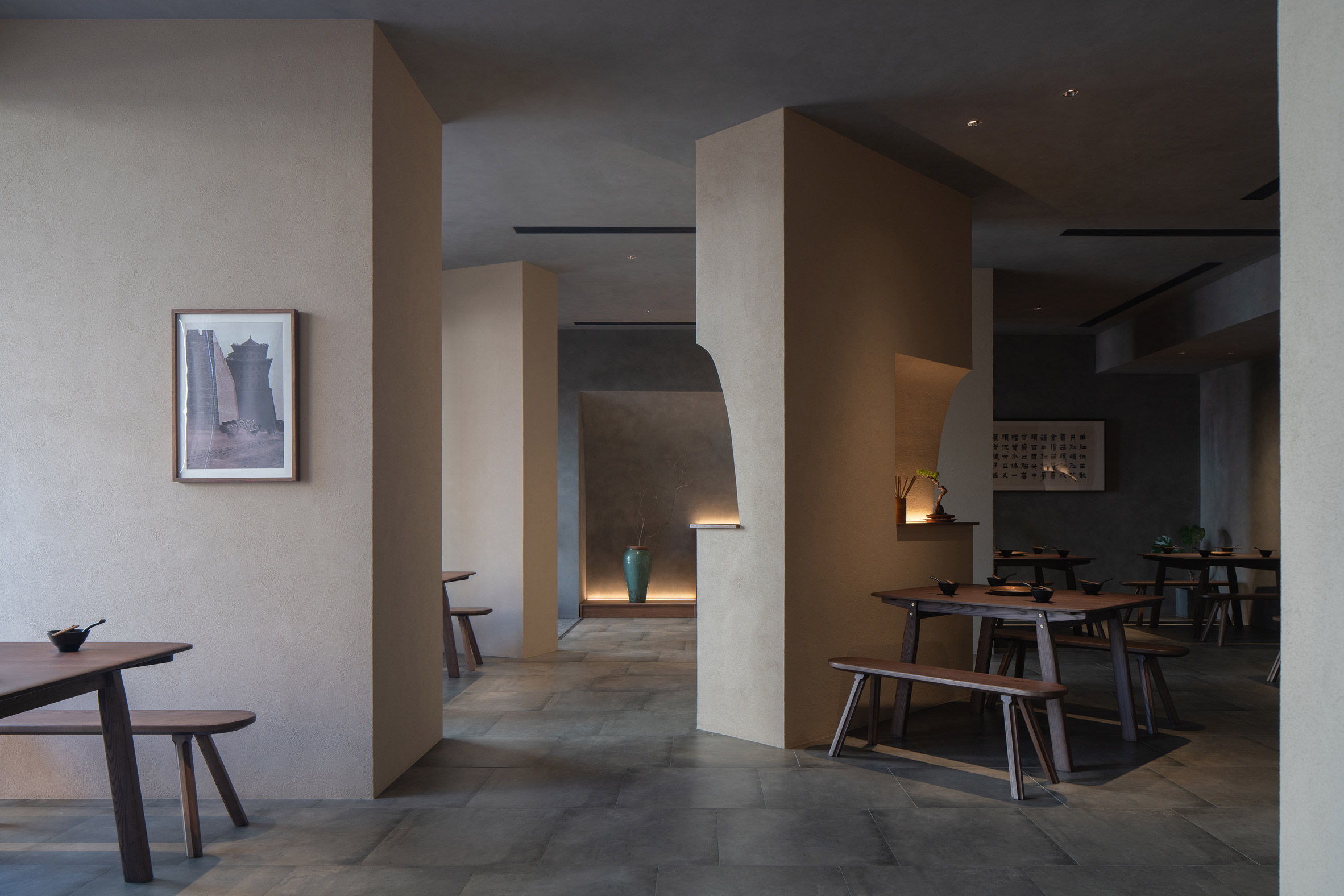 Walls at the centre of the restaurant feature curved niches
Walls at the centre of the restaurant feature curved niches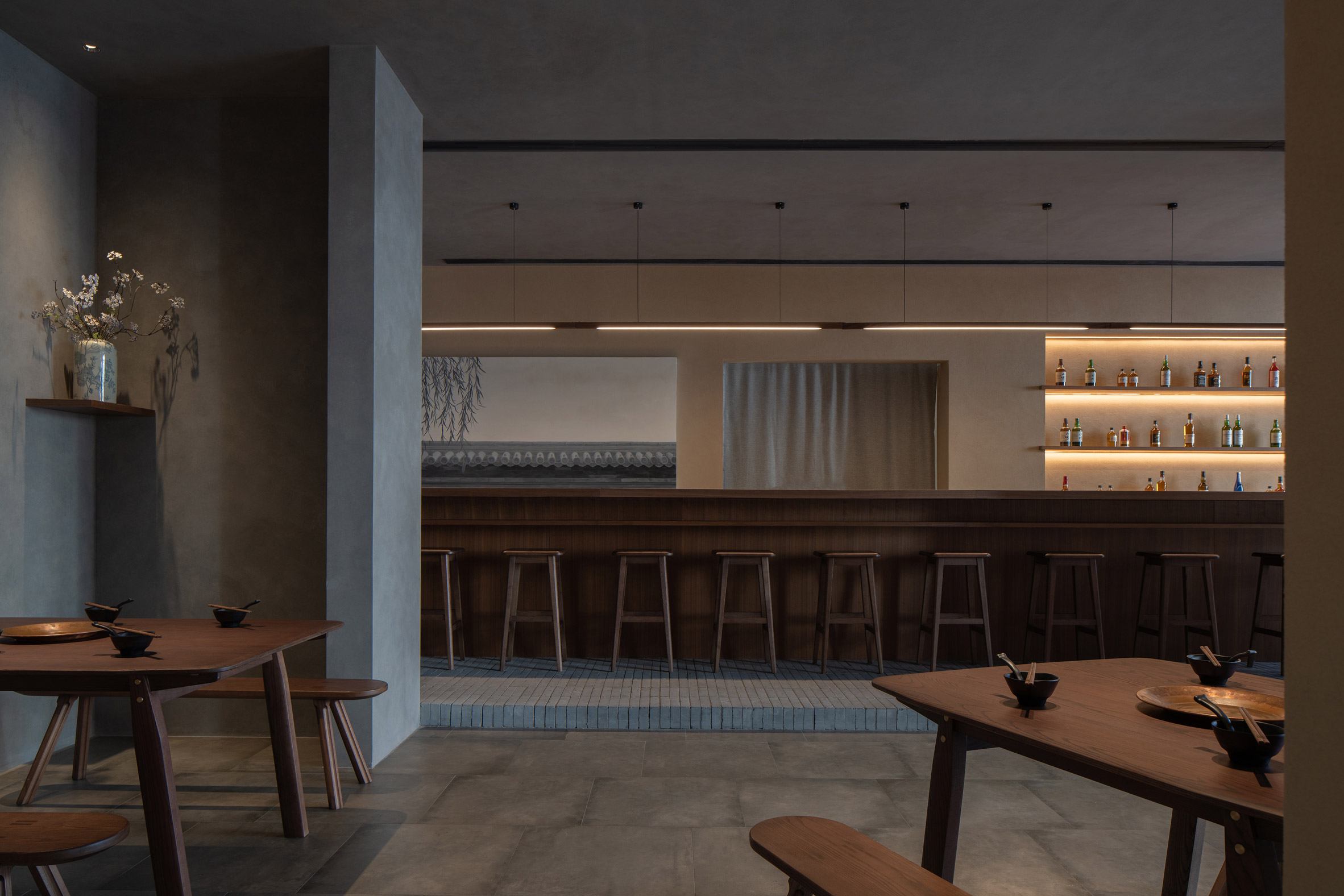 A brick plinth raises up the bar counter
A brick plinth raises up the bar counter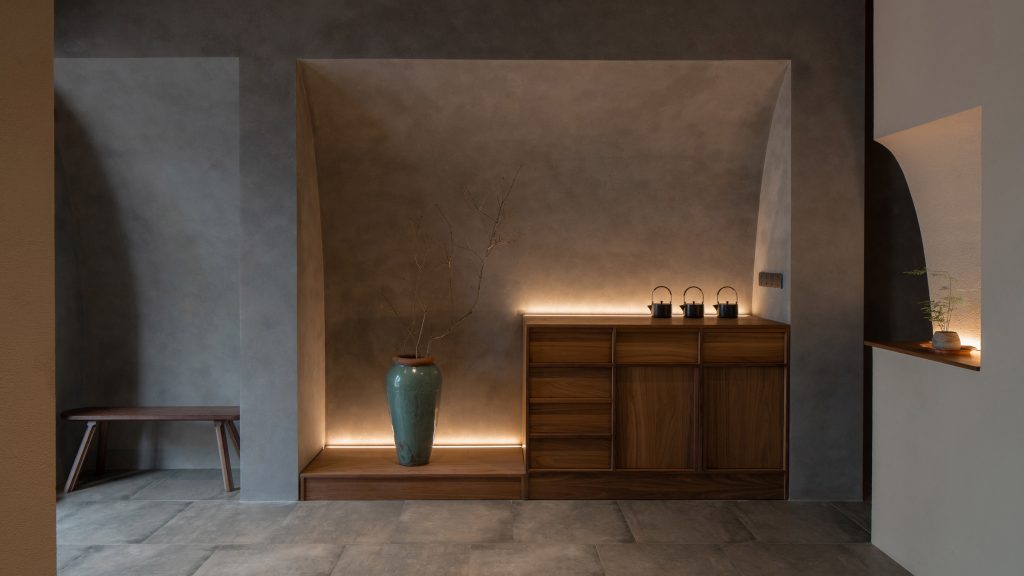
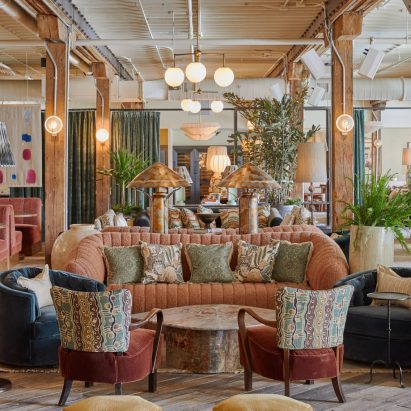
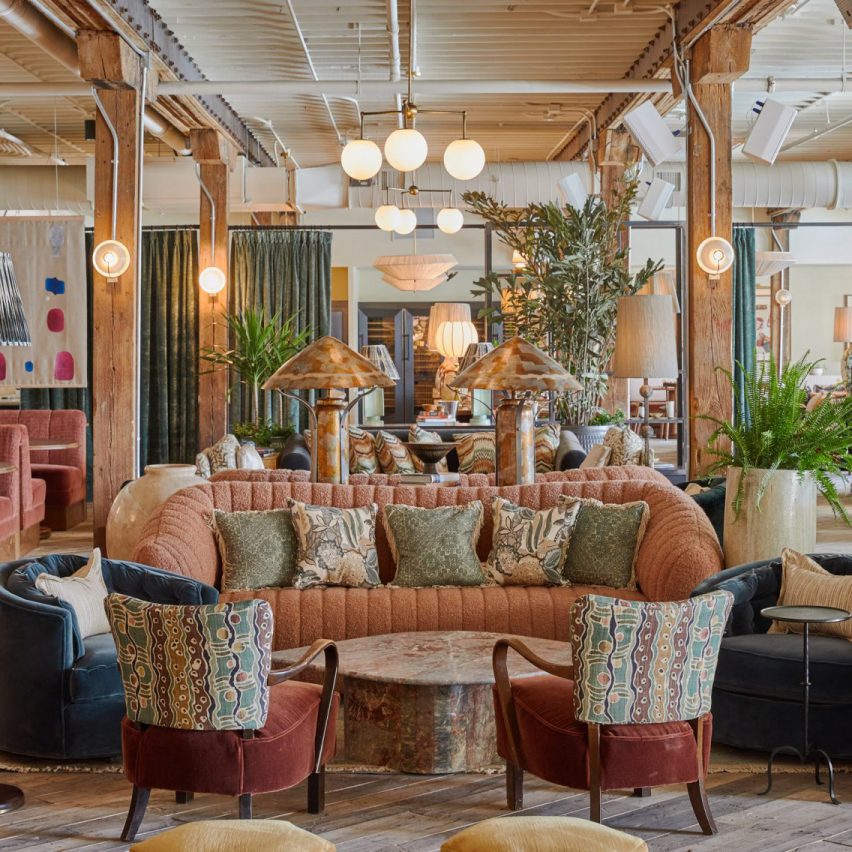
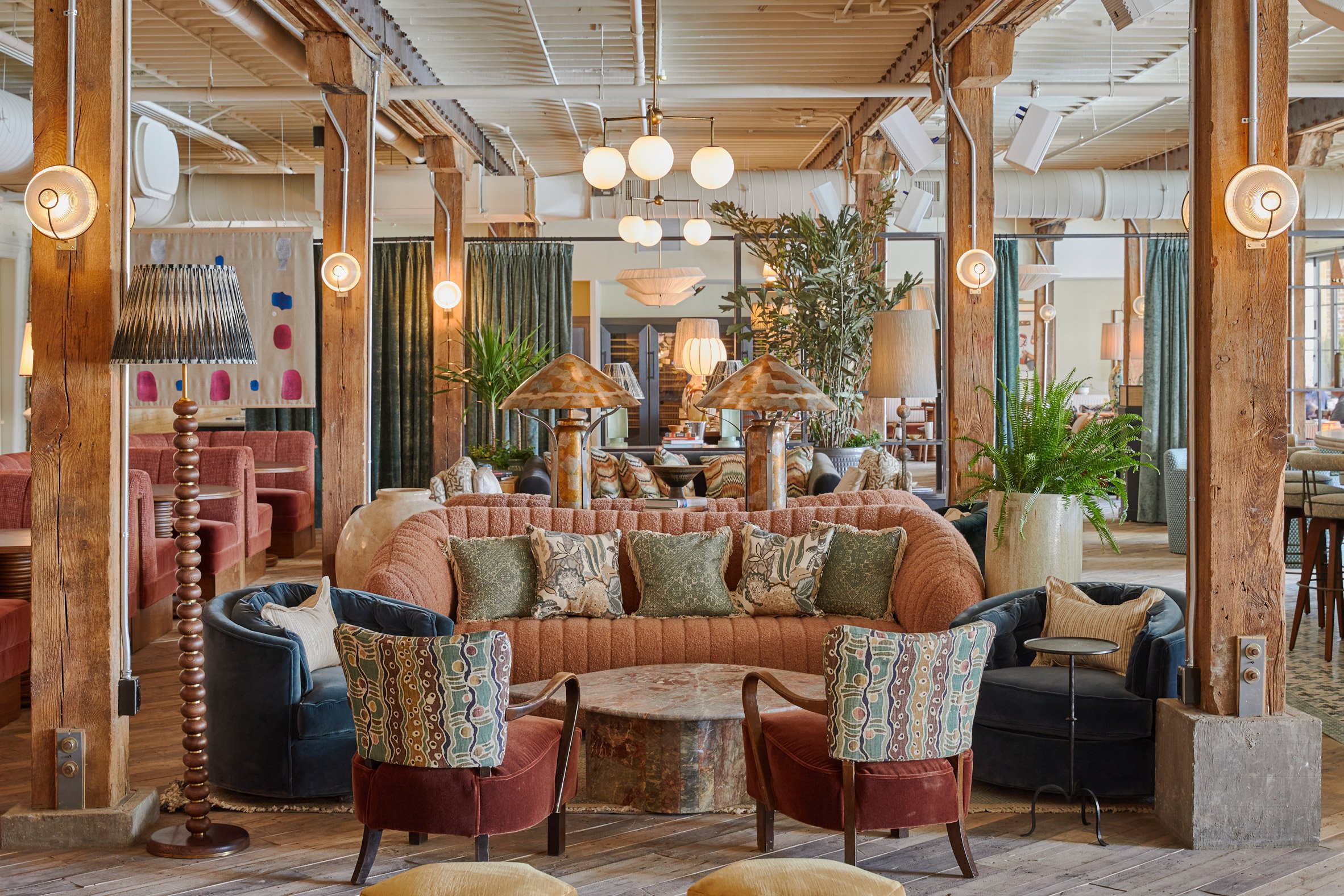 Soho House Nashville has opened in the May Hosiery Building
Soho House Nashville has opened in the May Hosiery Building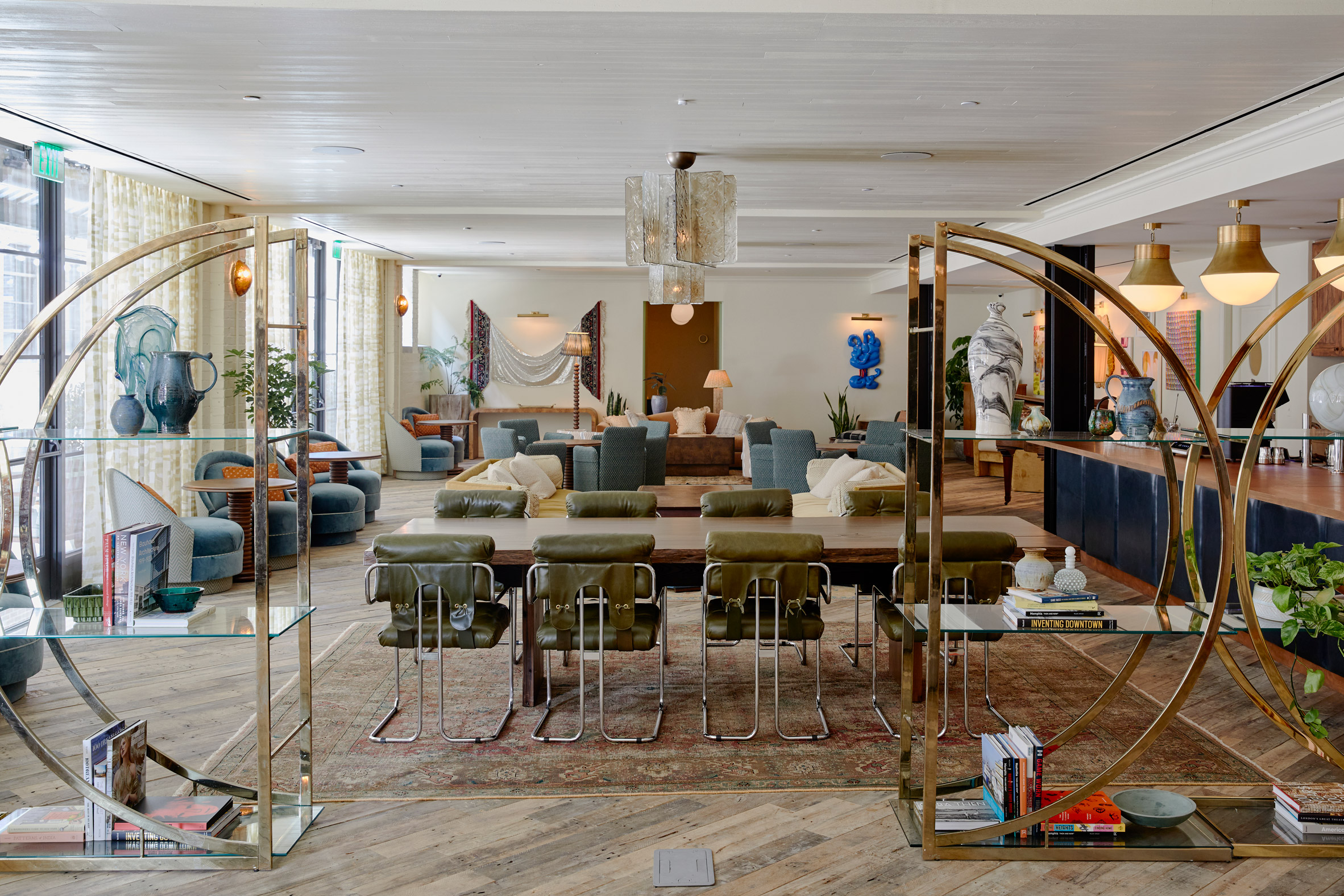 Metal shelving divides spaces in the Club Room
Metal shelving divides spaces in the Club Room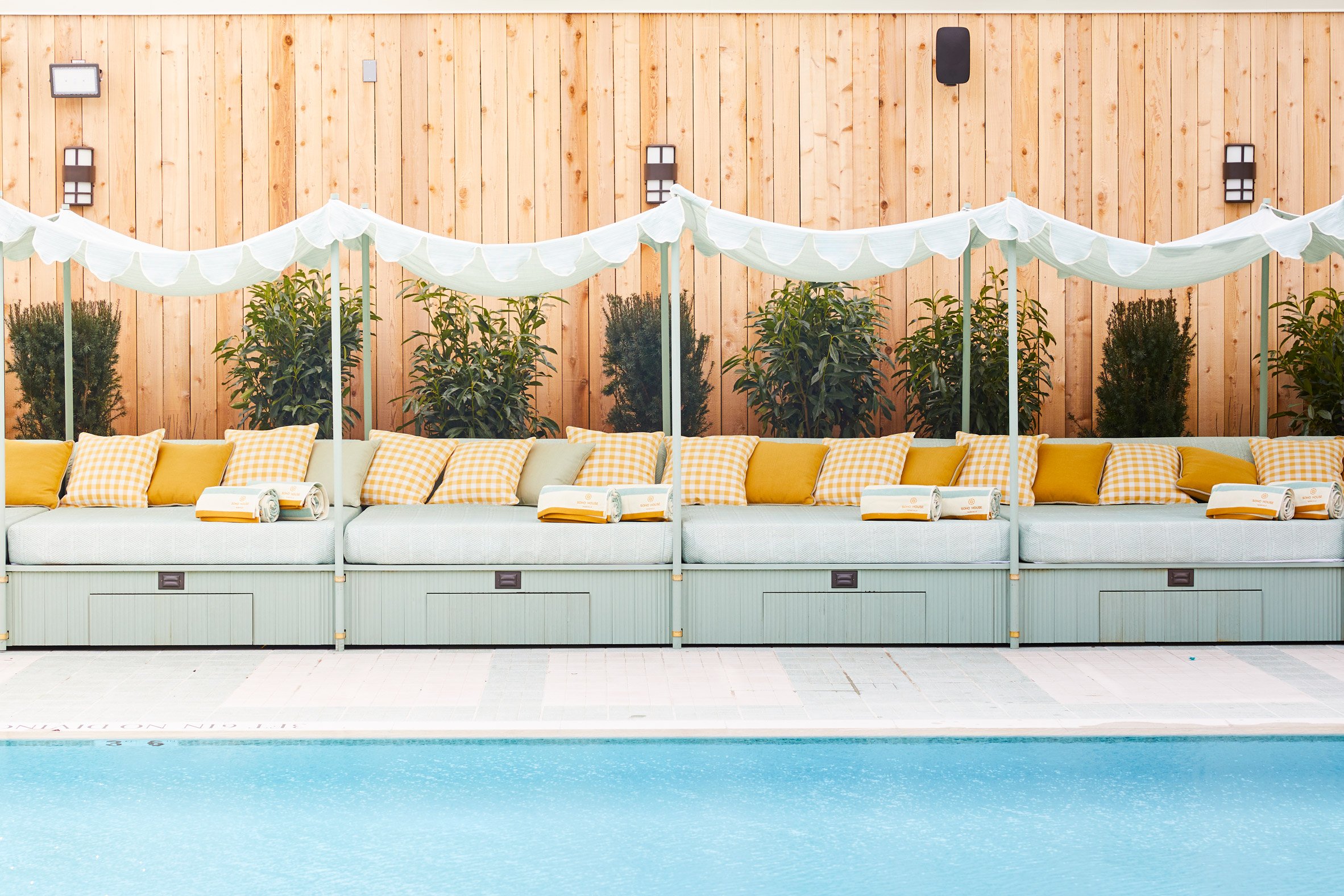 Striped tiling around the pool is designed to mimic a guitar string board
Striped tiling around the pool is designed to mimic a guitar string board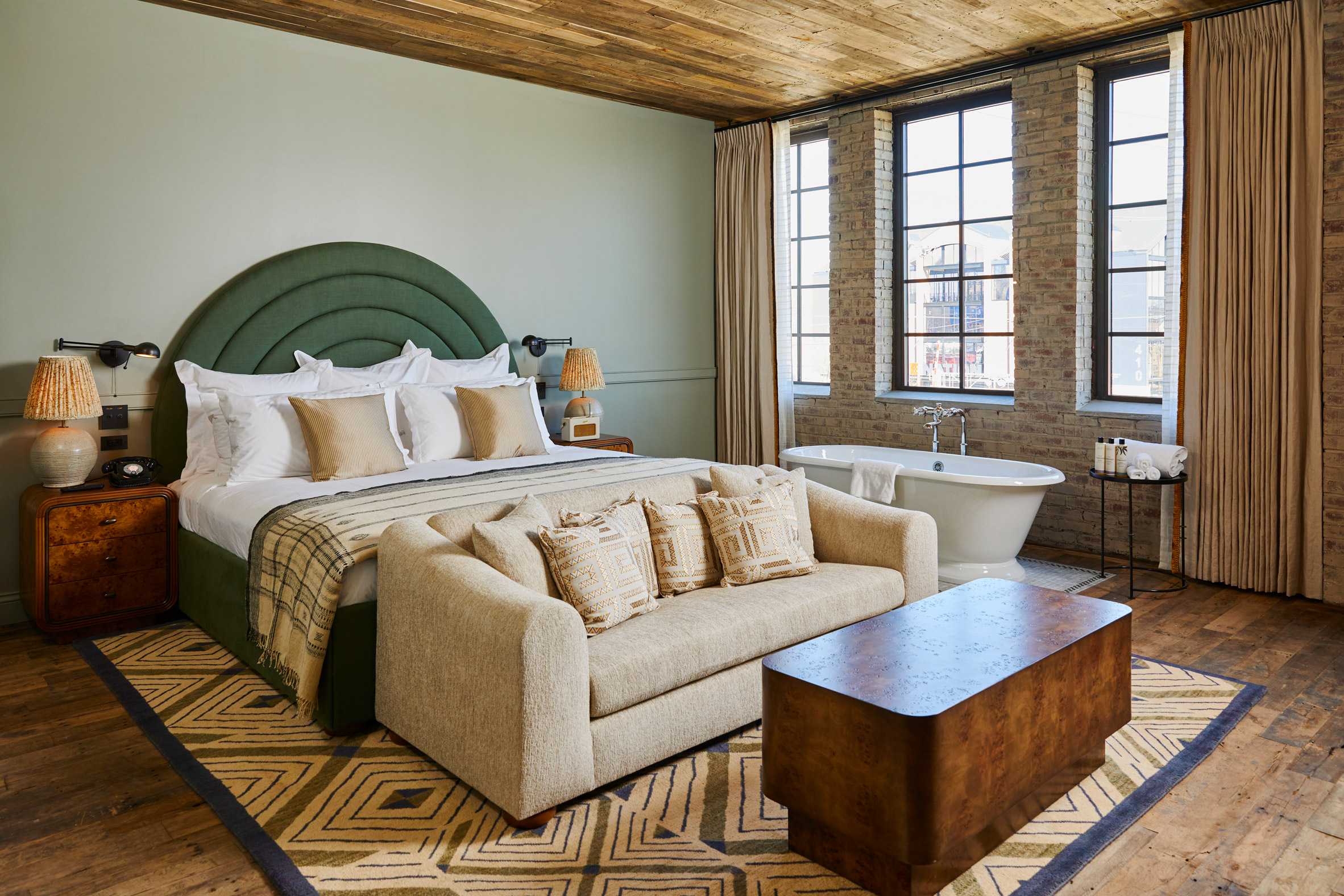 Soho House Nashville's hotel has 47 bedrooms that vary in size
Soho House Nashville's hotel has 47 bedrooms that vary in size
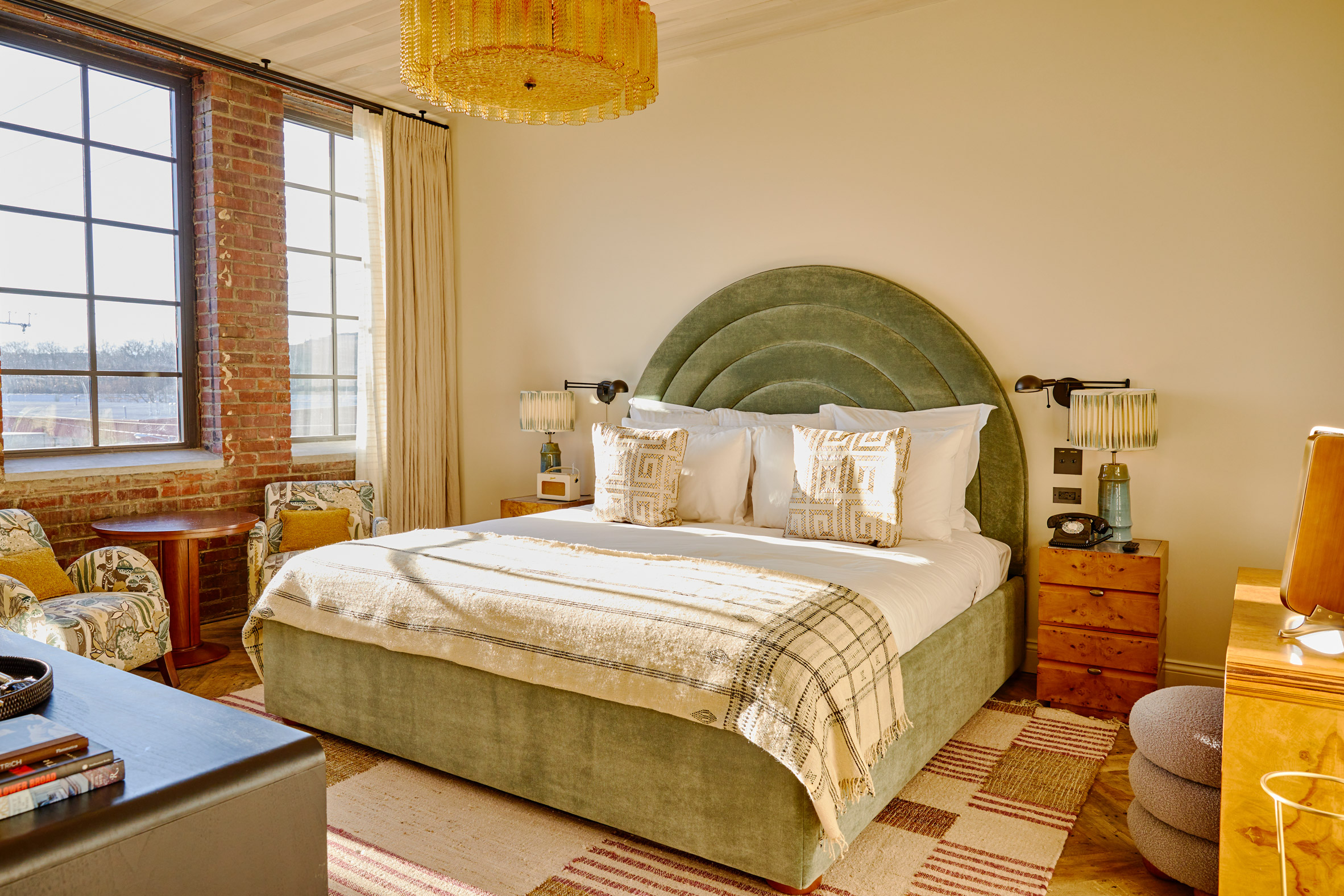 Bedrooms all have large chandeliers and a variety of textiles
Bedrooms all have large chandeliers and a variety of textiles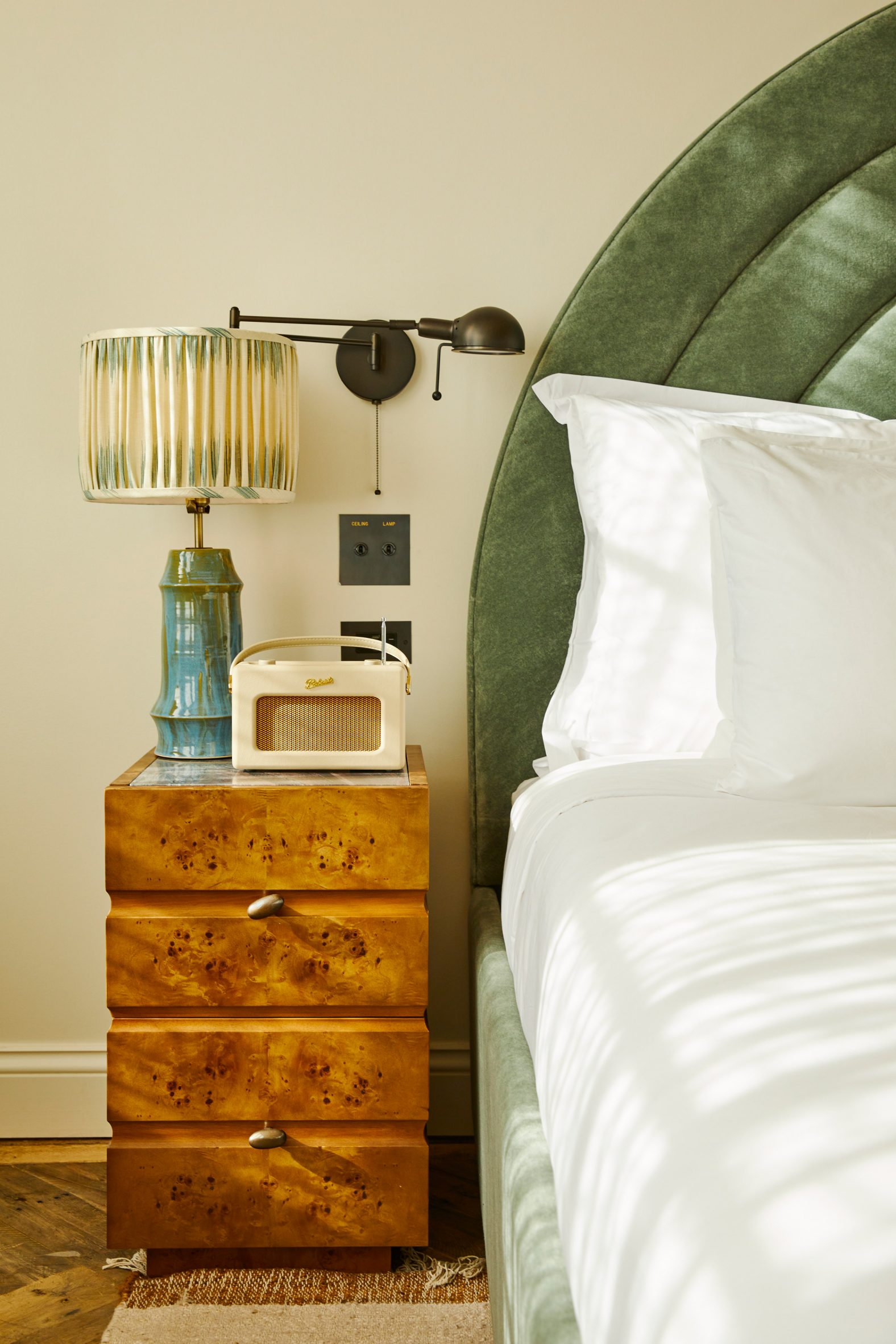 The rooms feature a mix of bespoke local furniture and vintage accessories
The rooms feature a mix of bespoke local furniture and vintage accessories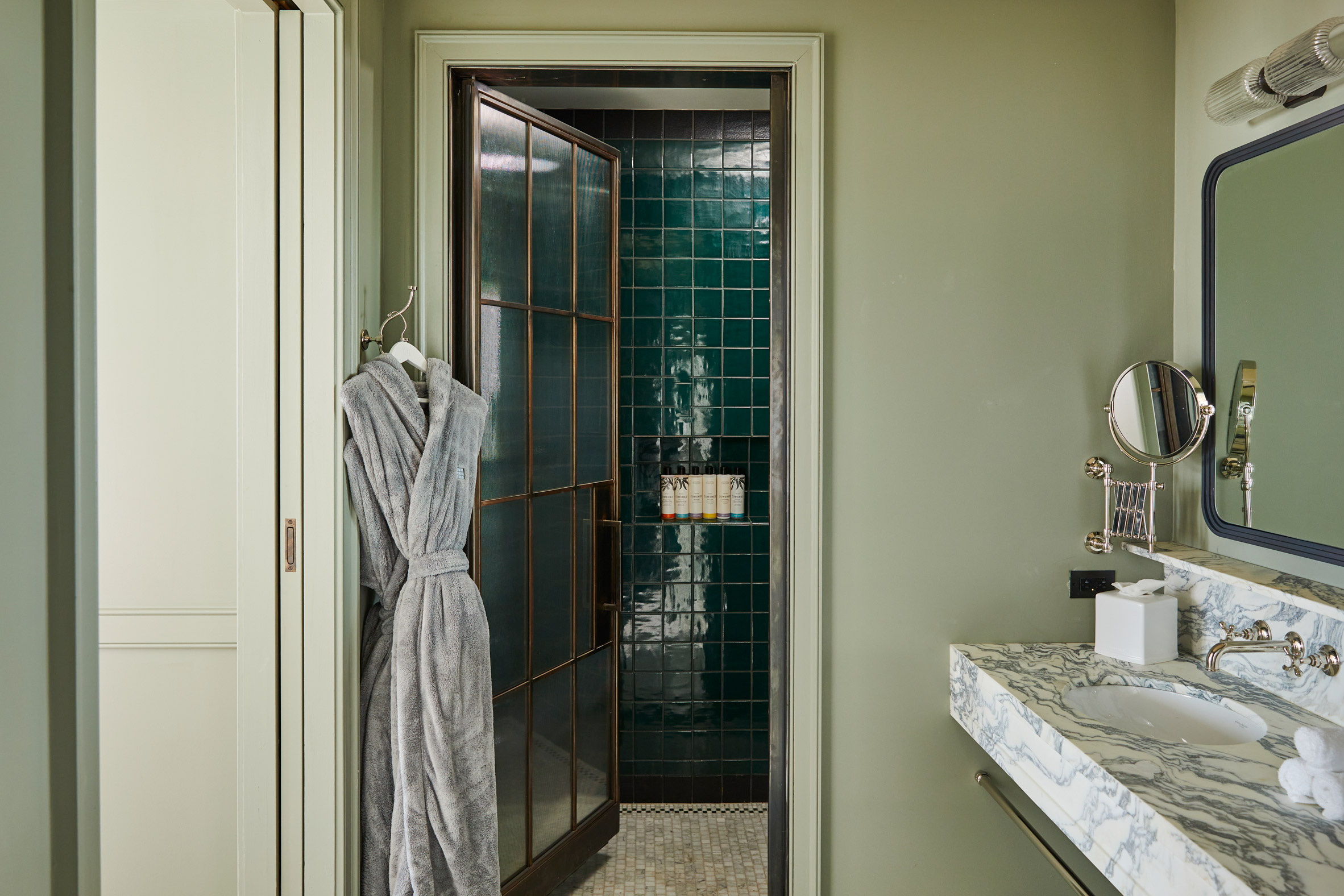 Metal screen doors enclose the bathrooms
Metal screen doors enclose the bathrooms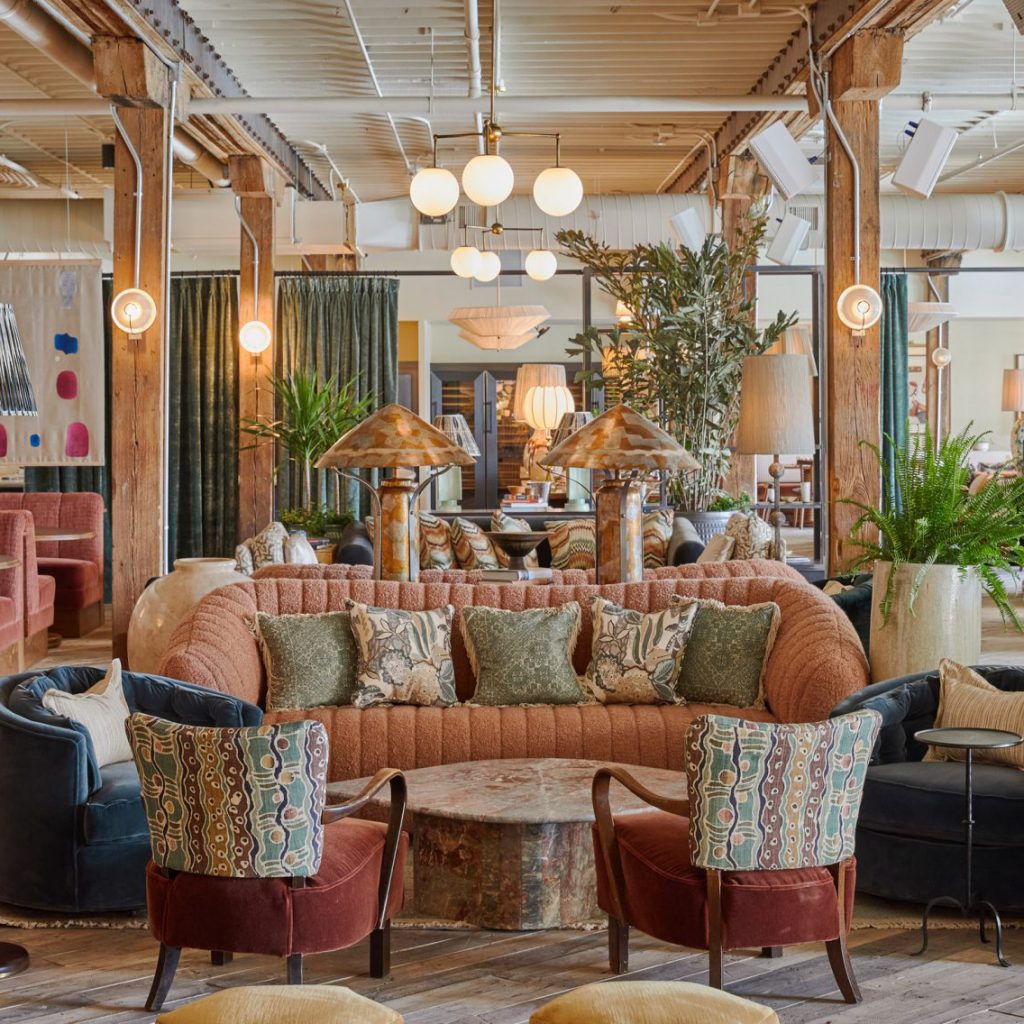
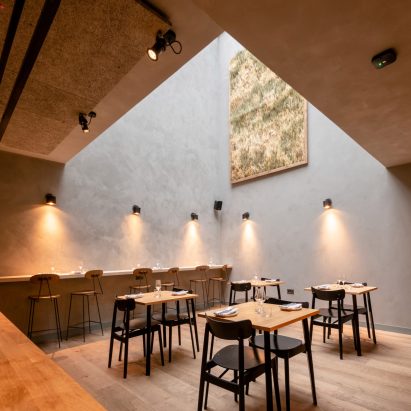
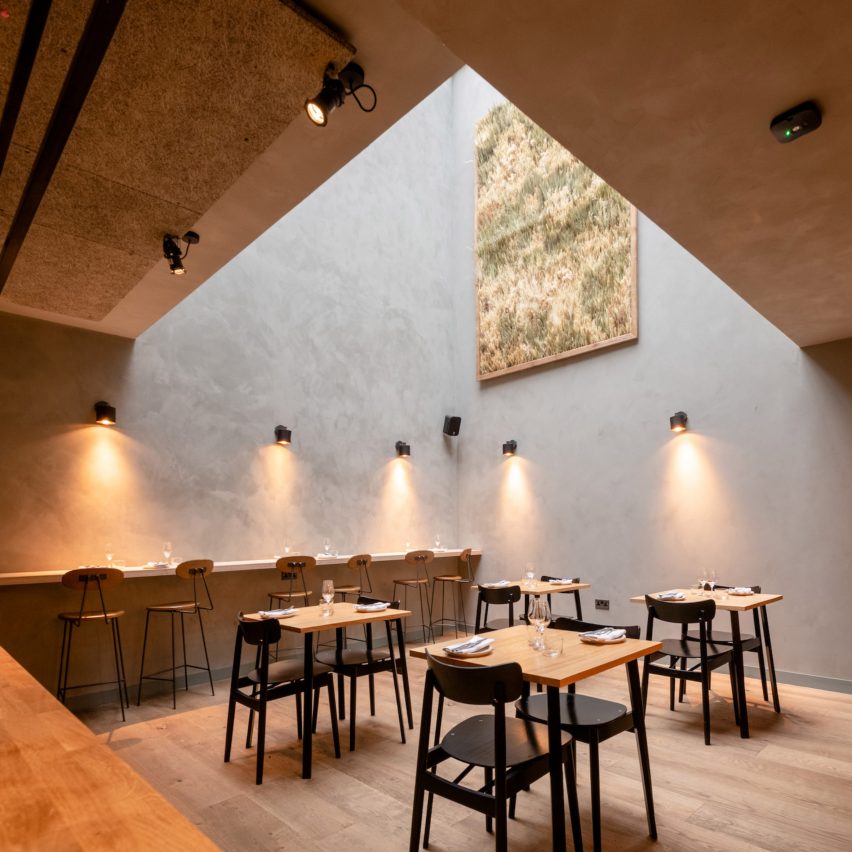
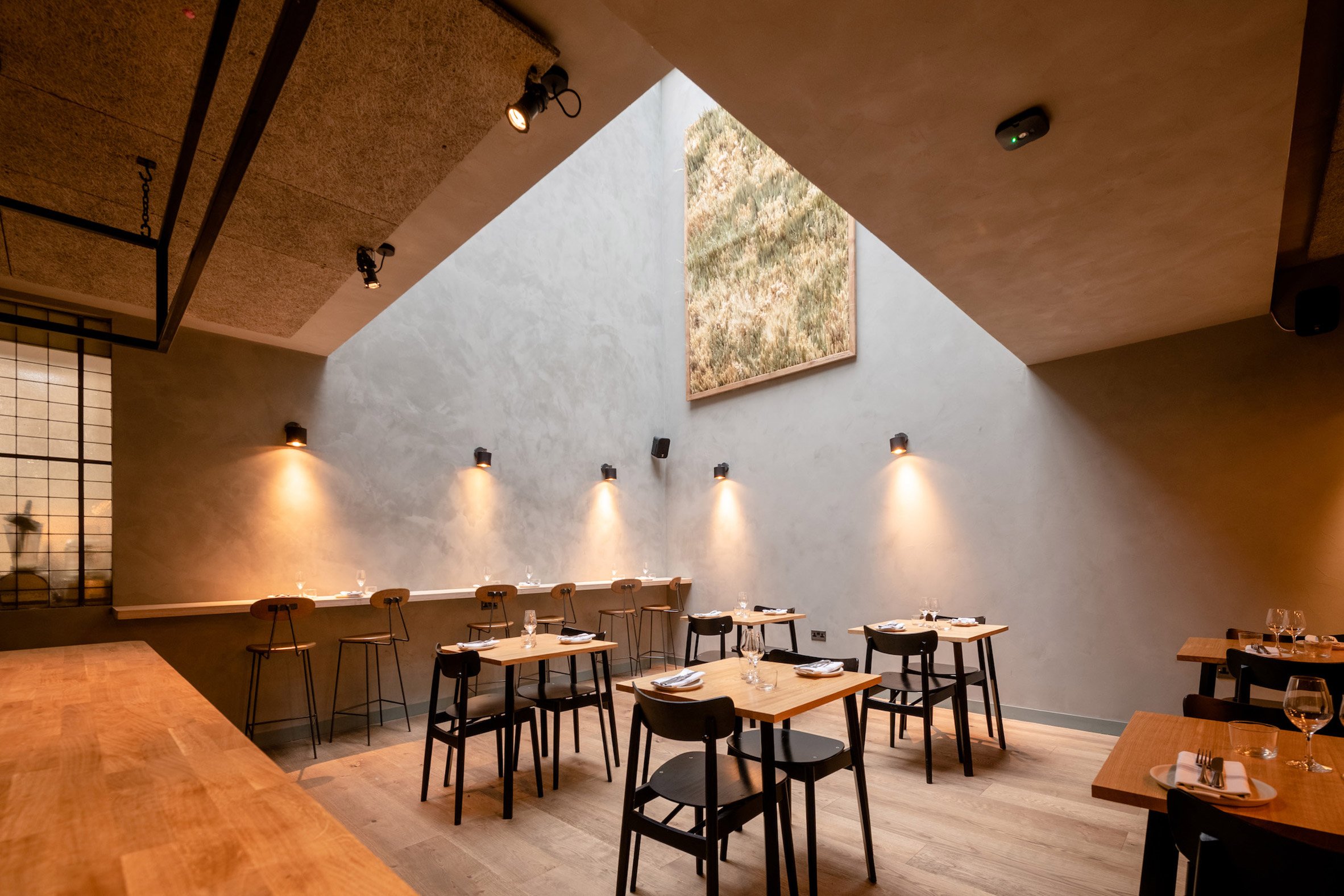 Carousel occupies three converted Georgian townhouses in Fitzrovia
Carousel occupies three converted Georgian townhouses in Fitzrovia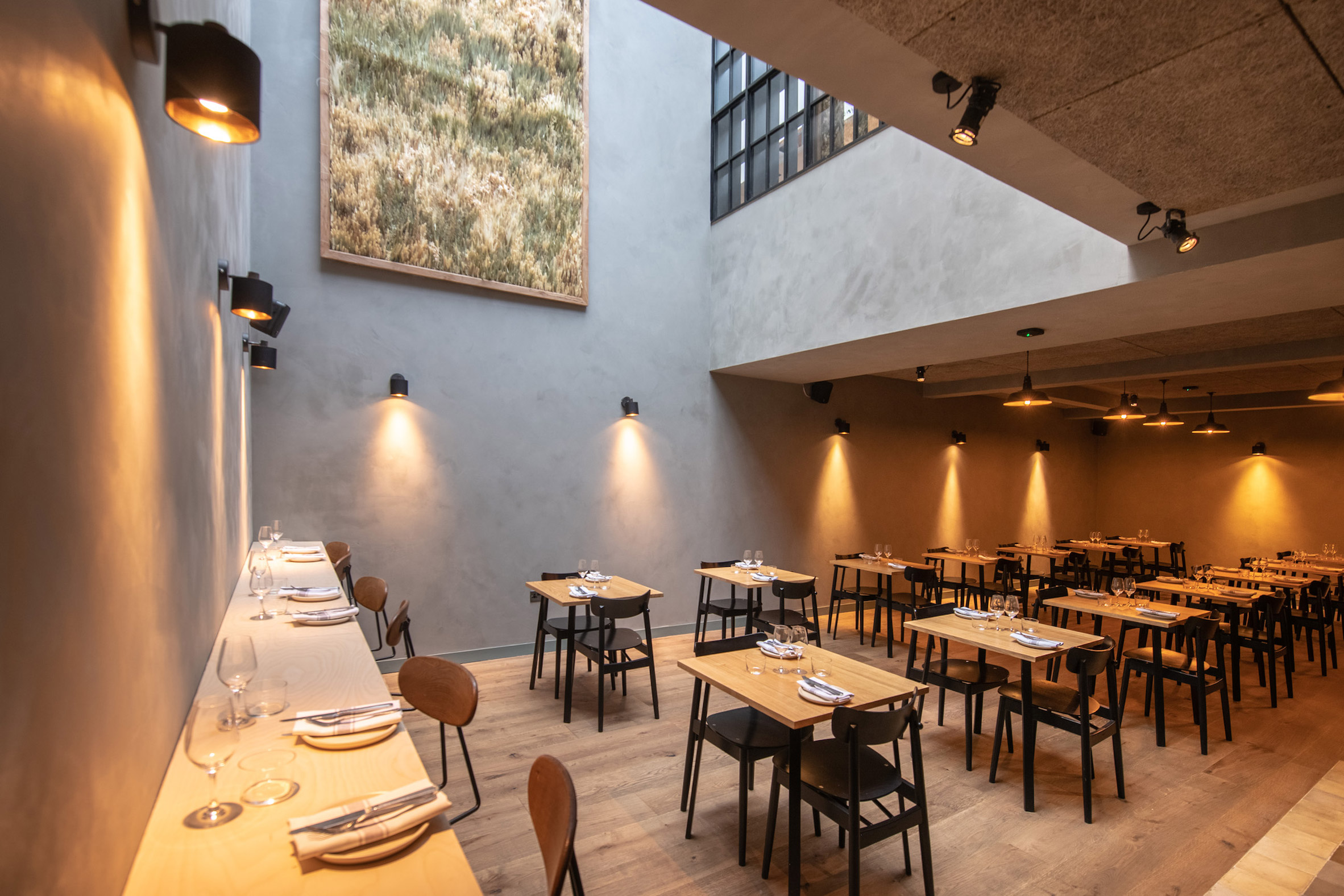 A guest kitchen and dining room is lit from above by a large skylight
A guest kitchen and dining room is lit from above by a large skylight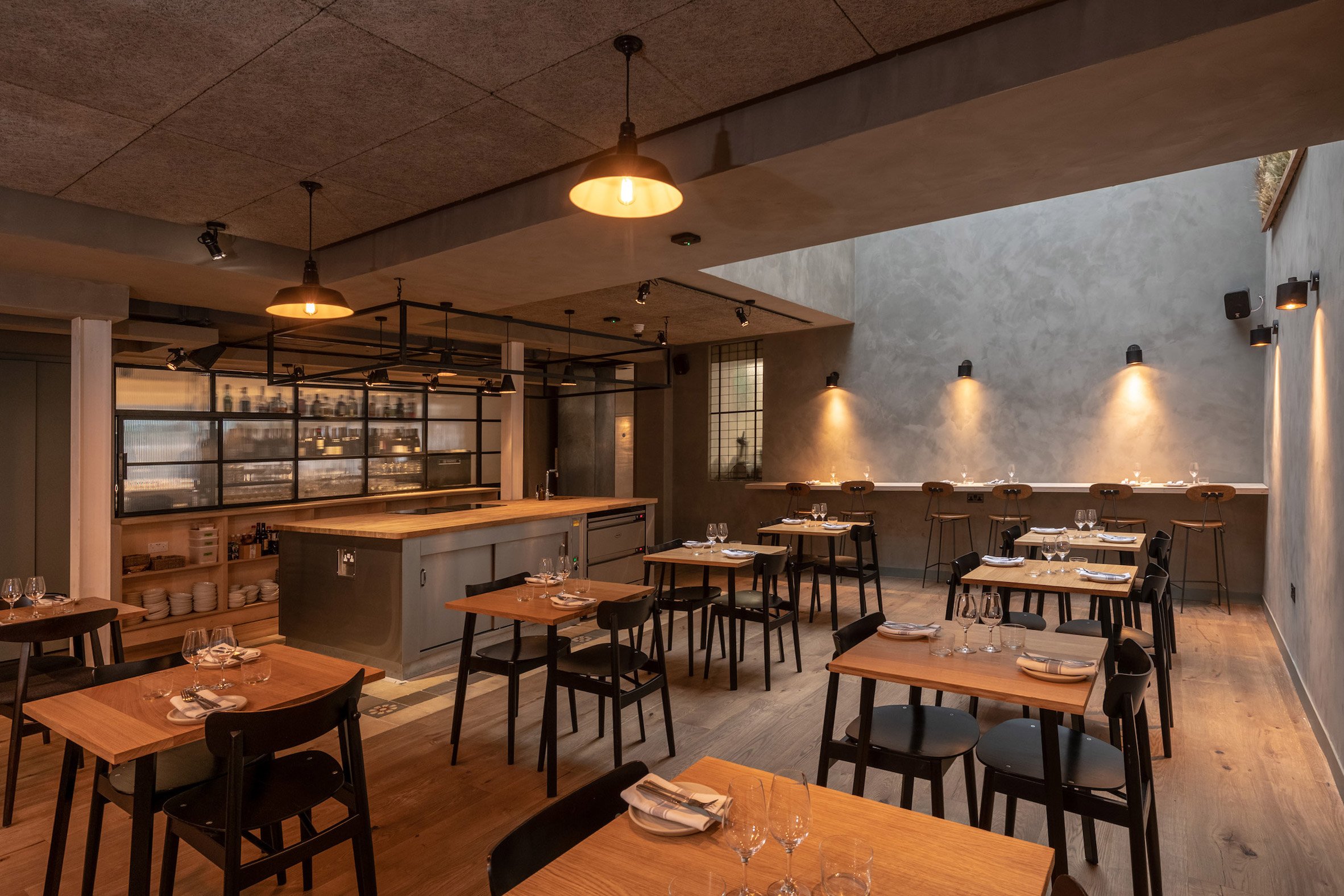 Wall tiles from the previous Carousel venue have been reused here as floor tiles
Wall tiles from the previous Carousel venue have been reused here as floor tiles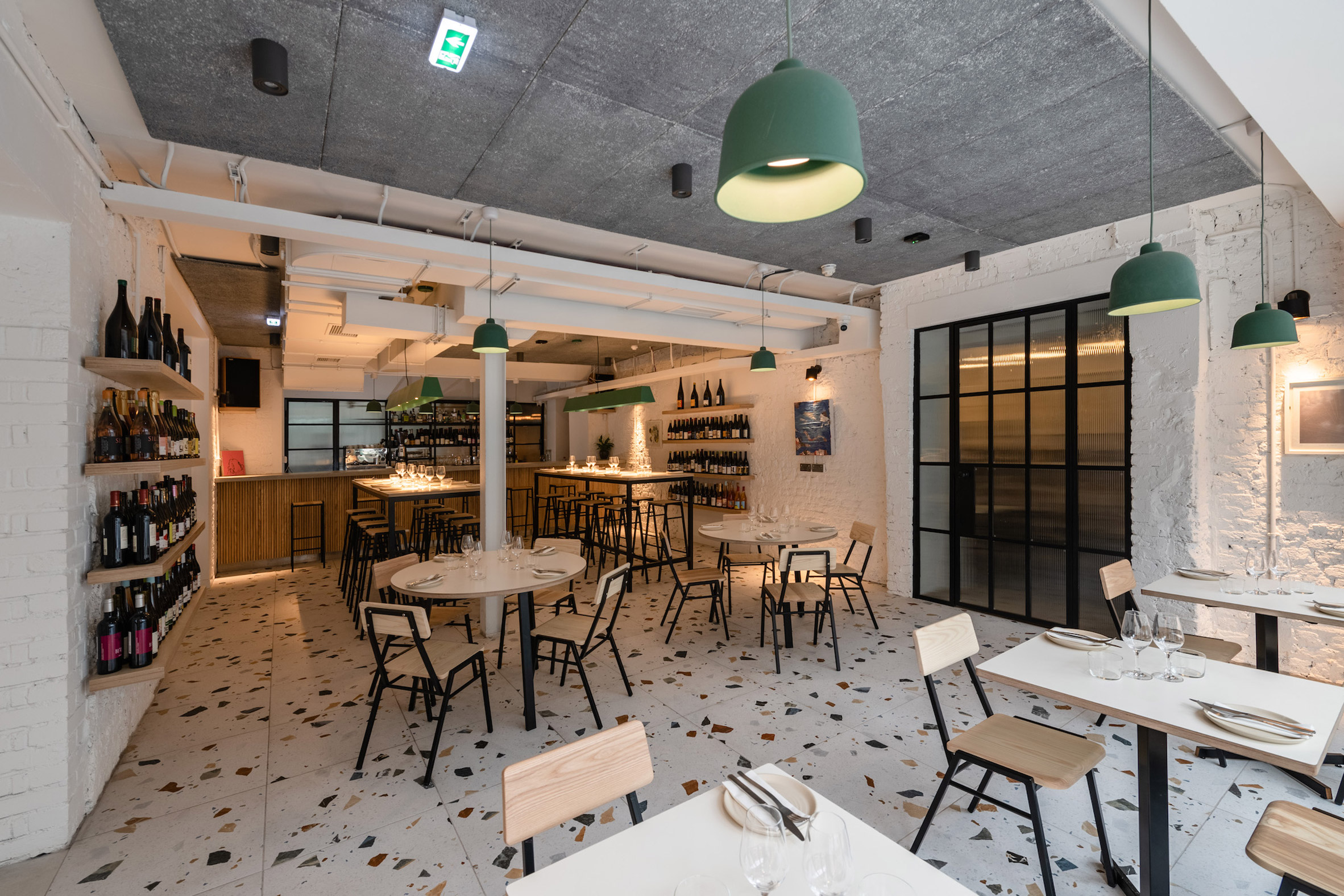 The all-day dining room features painted brickwork and terrazzo-style tiles
The all-day dining room features painted brickwork and terrazzo-style tiles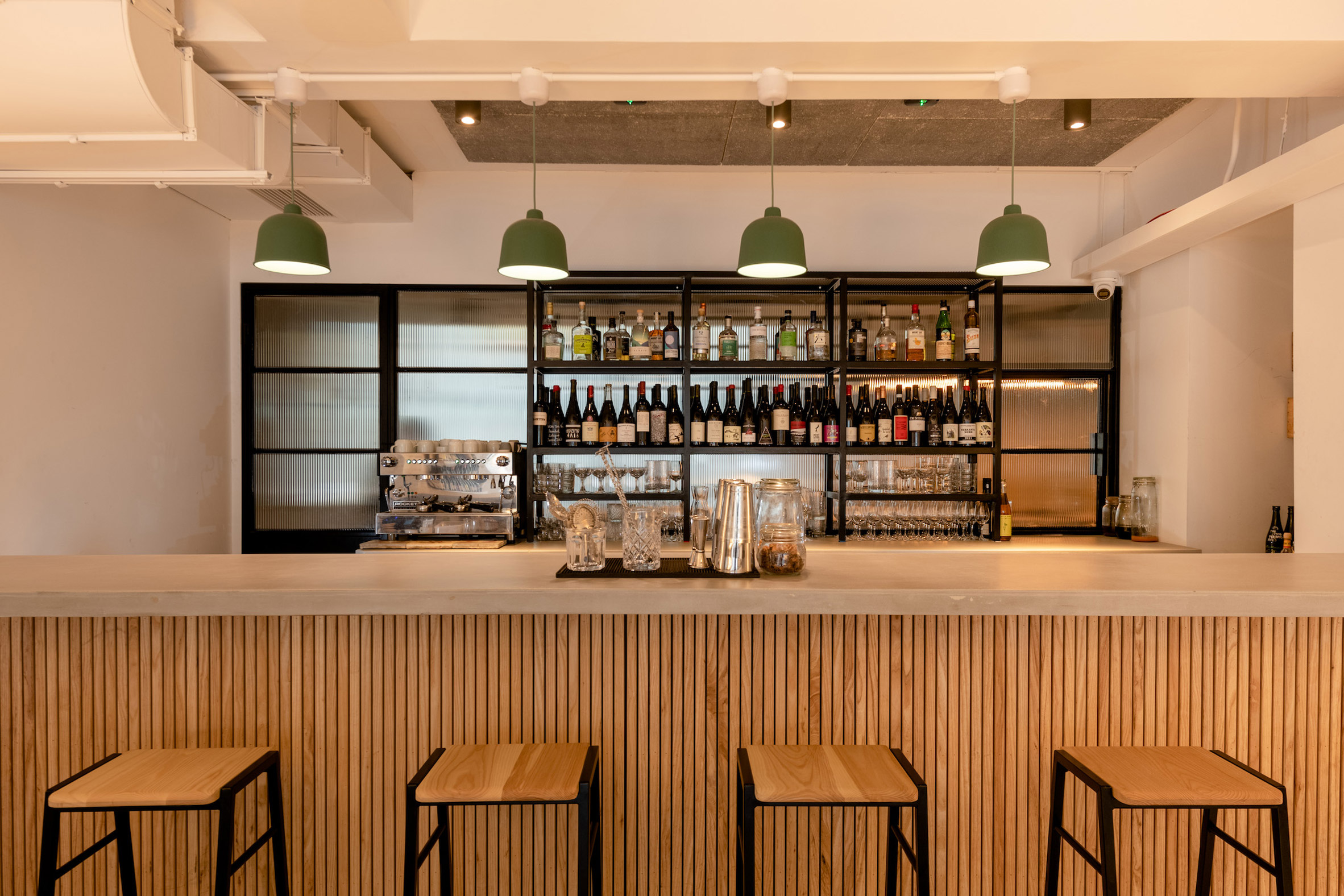 A wine and cocktail bar is sandwiched between the two ground-floor spaces
A wine and cocktail bar is sandwiched between the two ground-floor spaces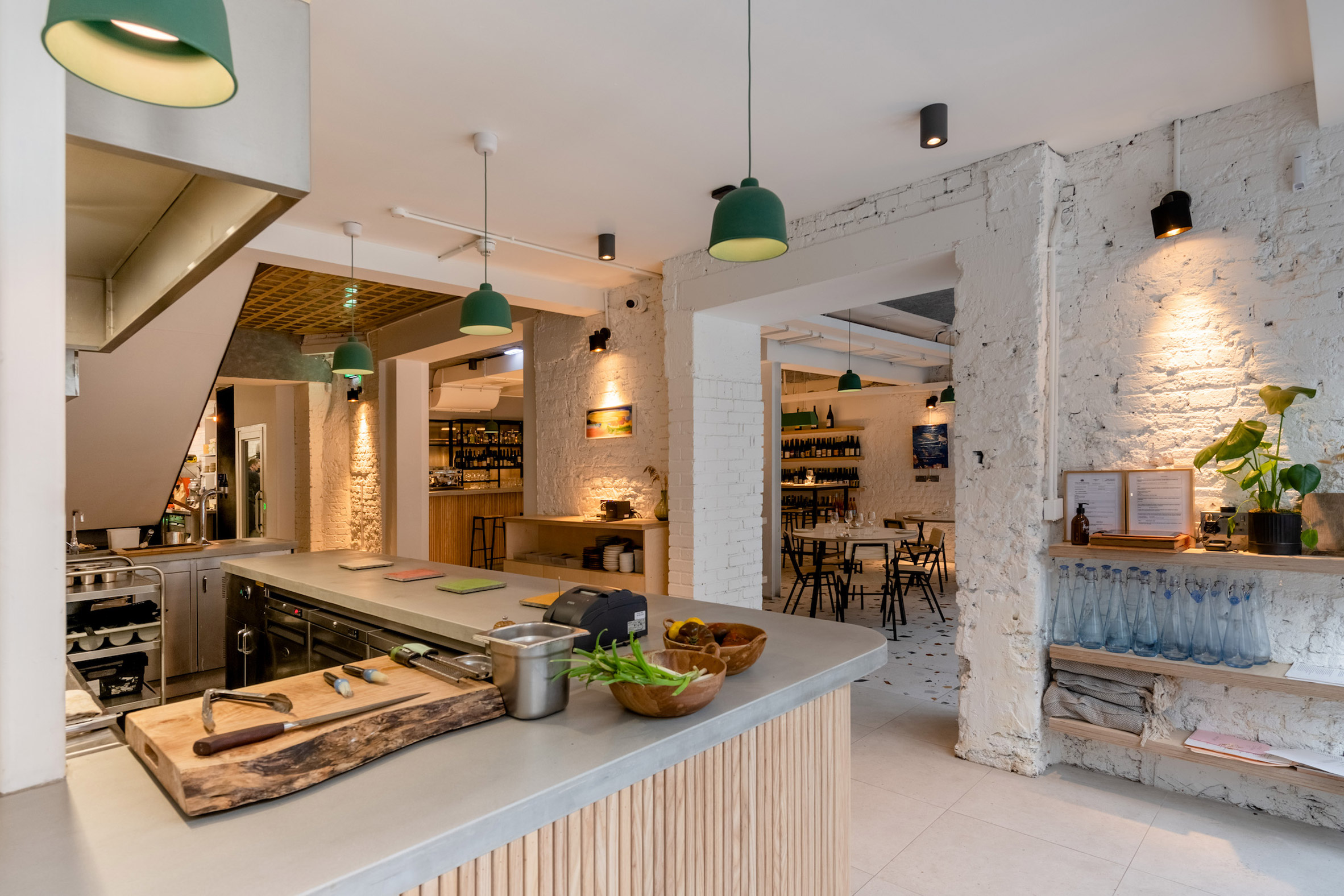 Concrete counters feature slatted wooden fronts
Concrete counters feature slatted wooden fronts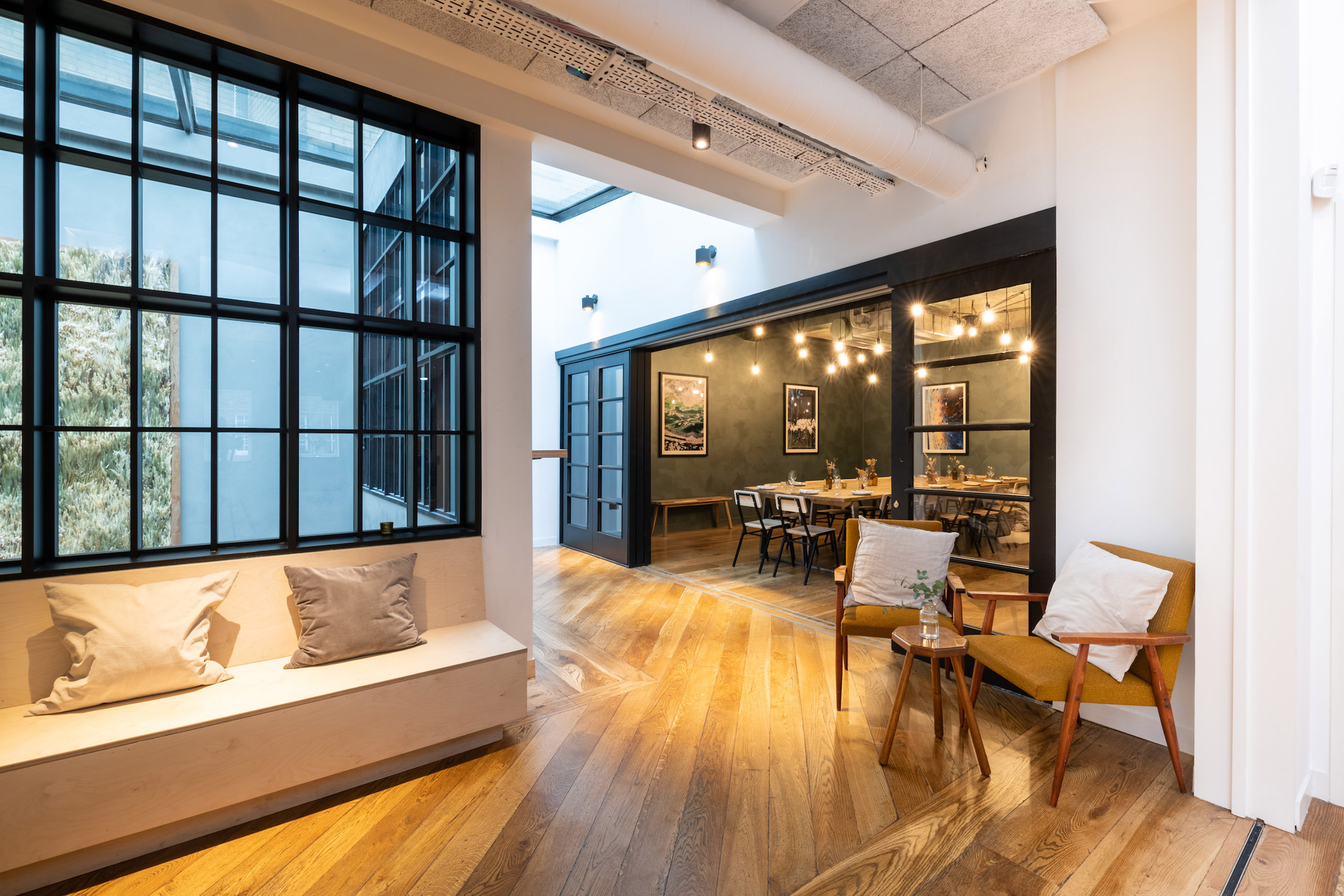 An events space leads through to a private dining room
An events space leads through to a private dining room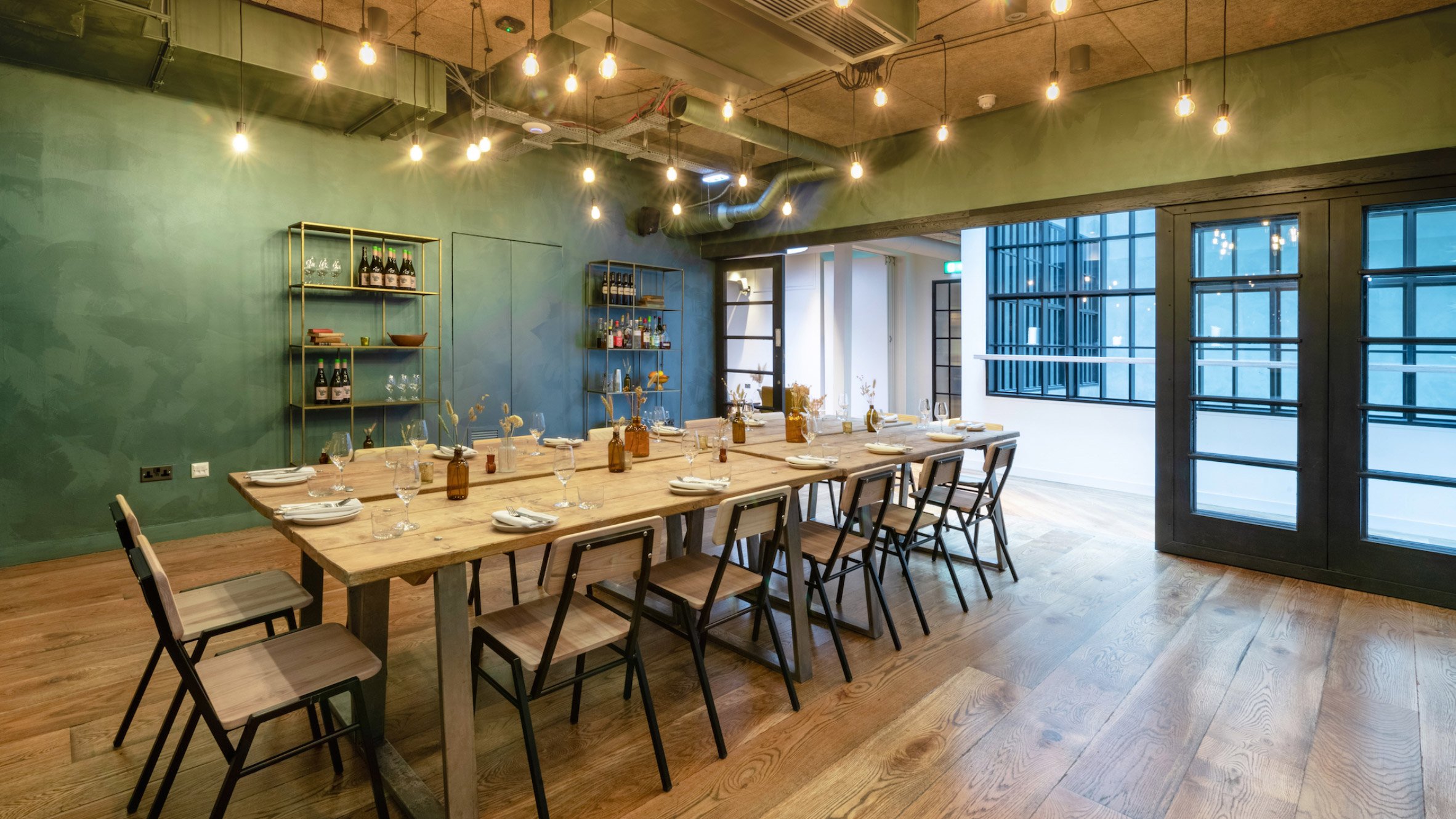 A special type of plaster gives a multi-tonal quality to the walls
A special type of plaster gives a multi-tonal quality to the walls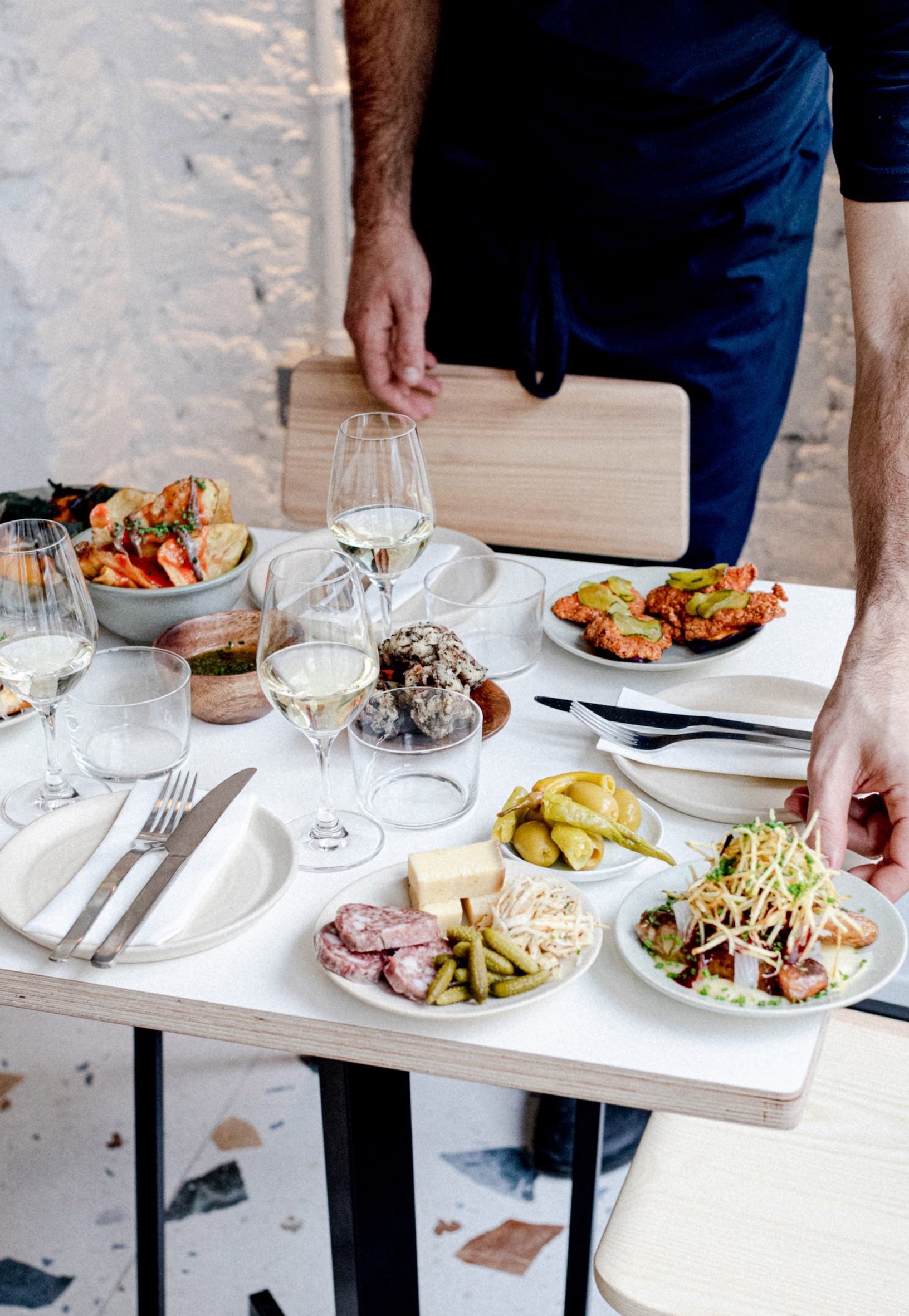 Carousel offers an all-day menu and also hosts a roster of guest chefs
Carousel offers an all-day menu and also hosts a roster of guest chefs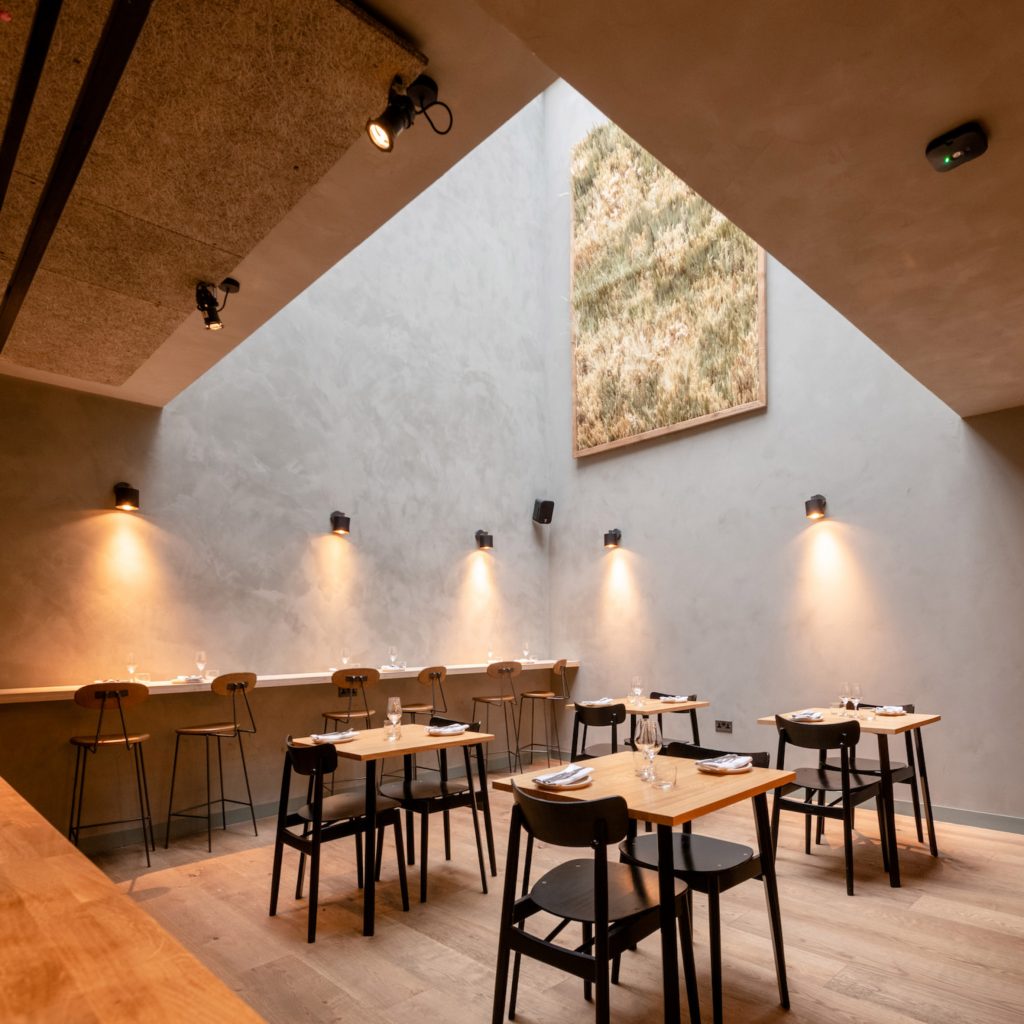
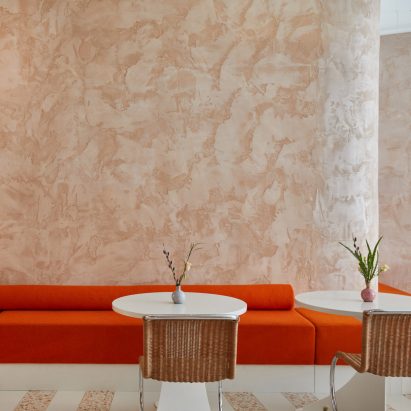
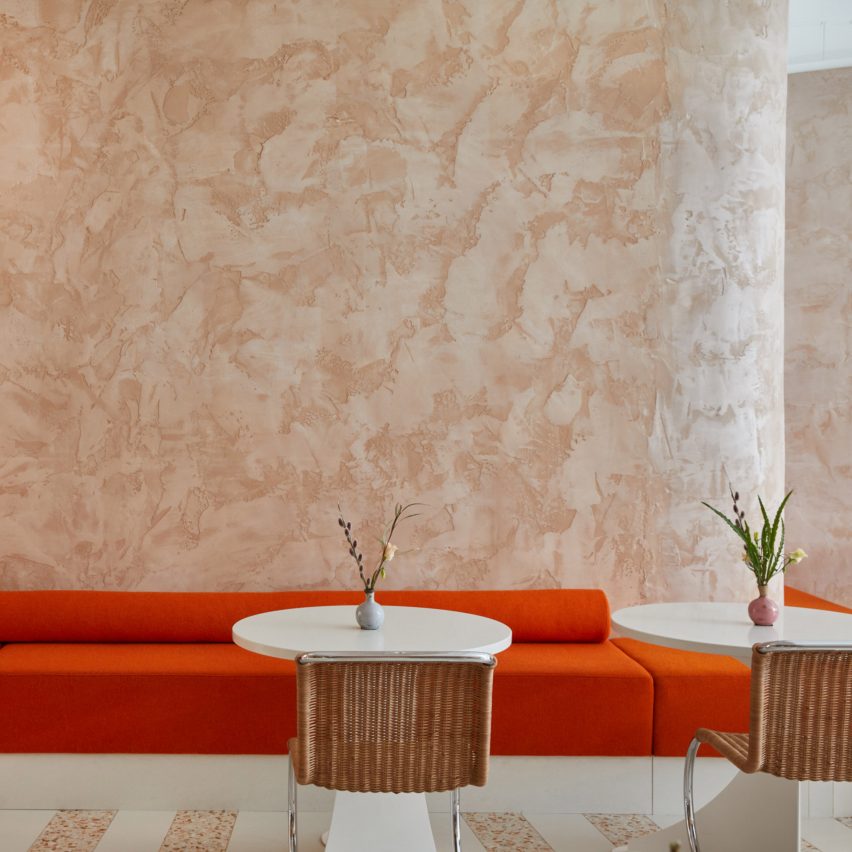
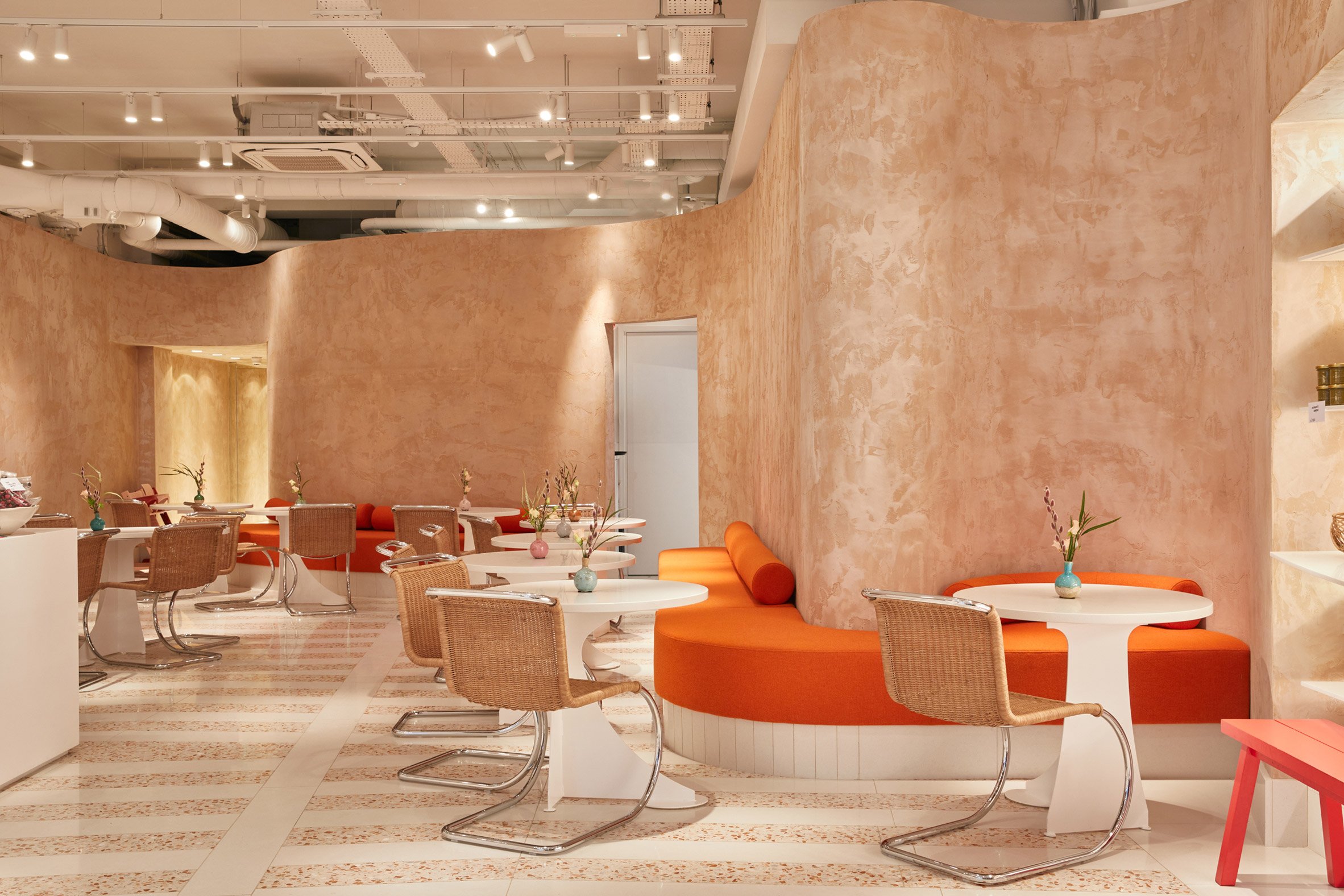 Pink and red tones feature throughout Ottolenghi Chelsea
Pink and red tones feature throughout Ottolenghi Chelsea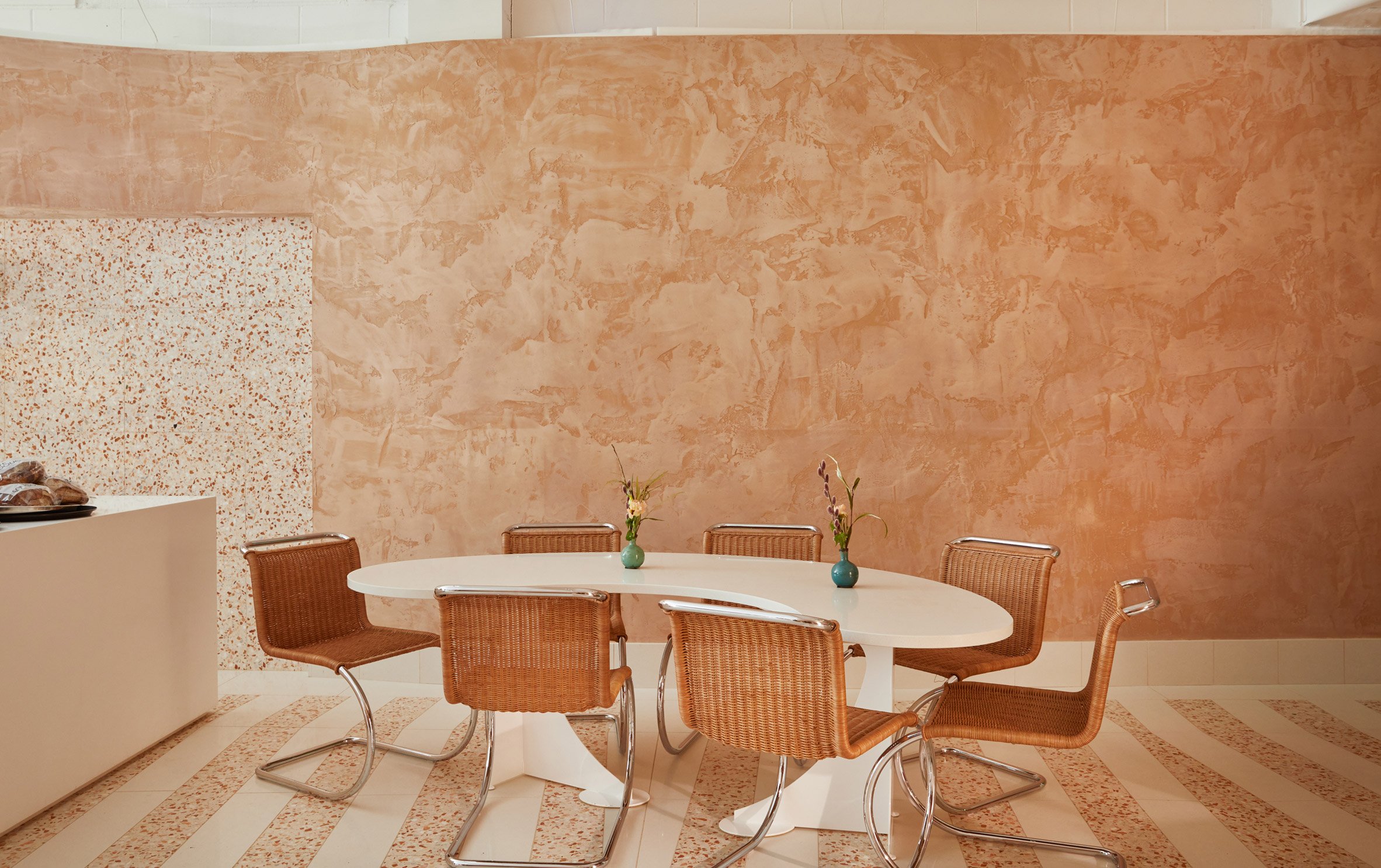 Clay plaster walls are left exposed
Clay plaster walls are left exposed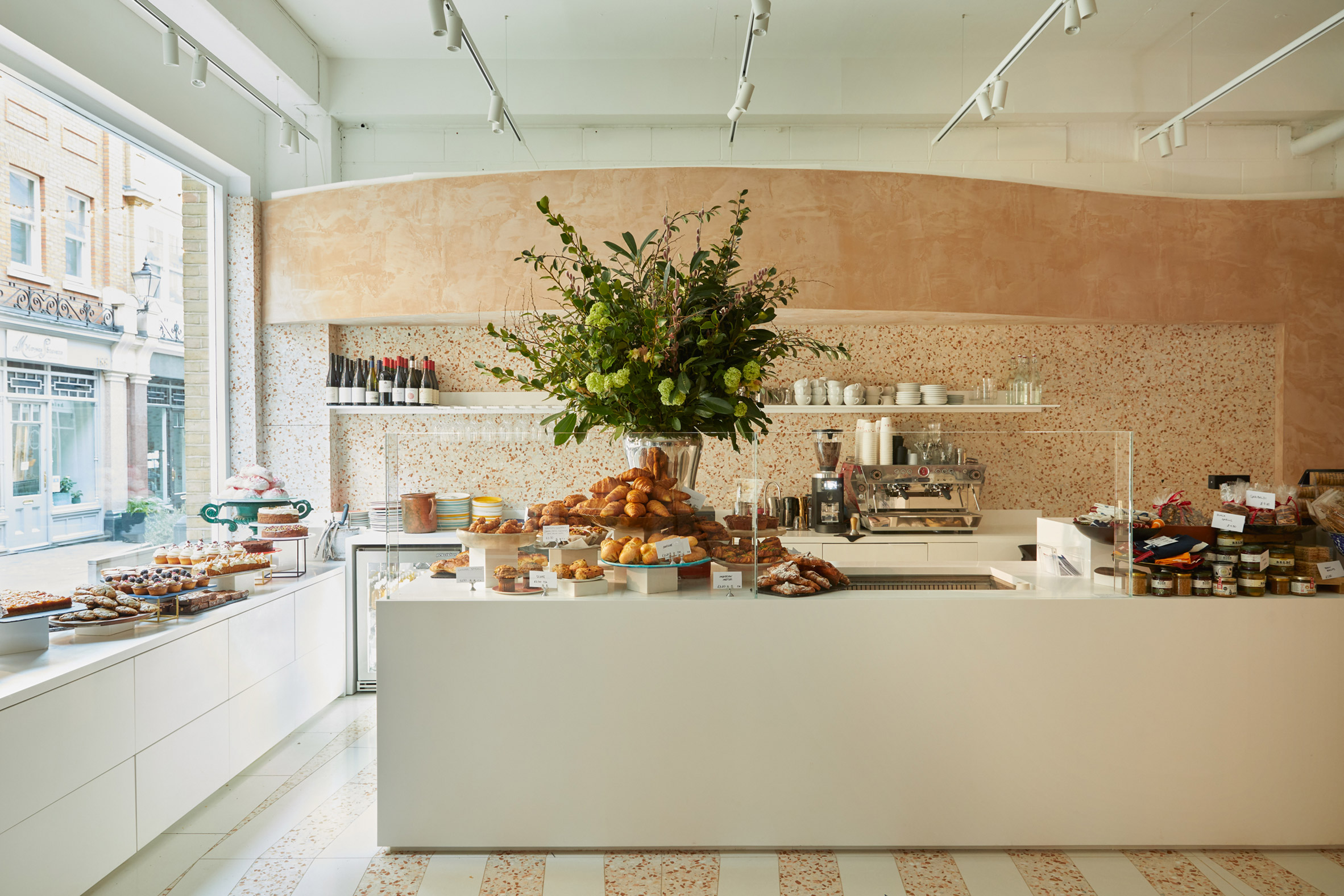 Pink terrazzo features on the walls and floors
Pink terrazzo features on the walls and floors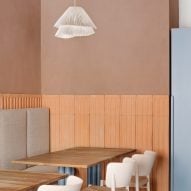
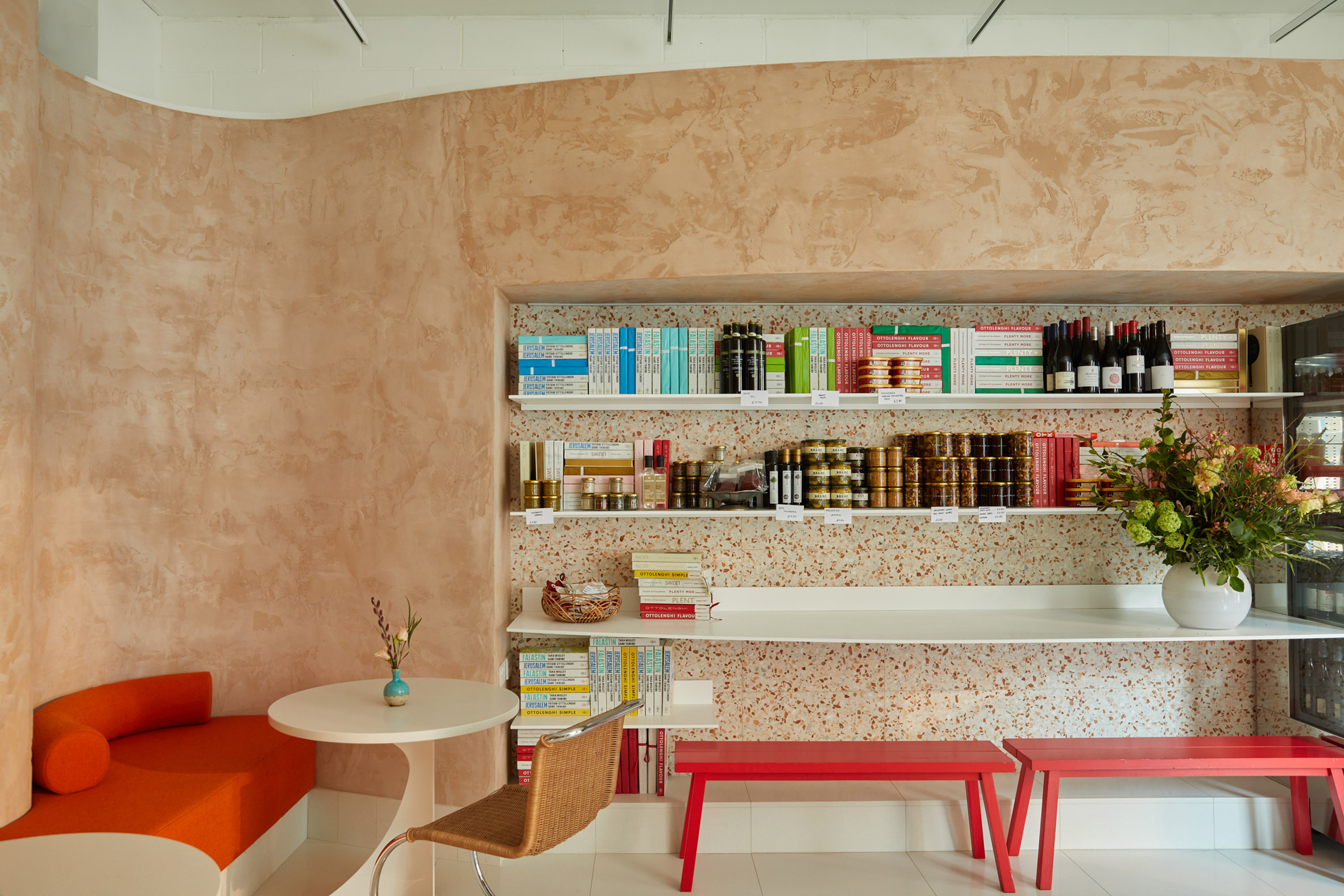 Upholstered banquettes have a graphic feel, with cylindrical cushions
Upholstered banquettes have a graphic feel, with cylindrical cushions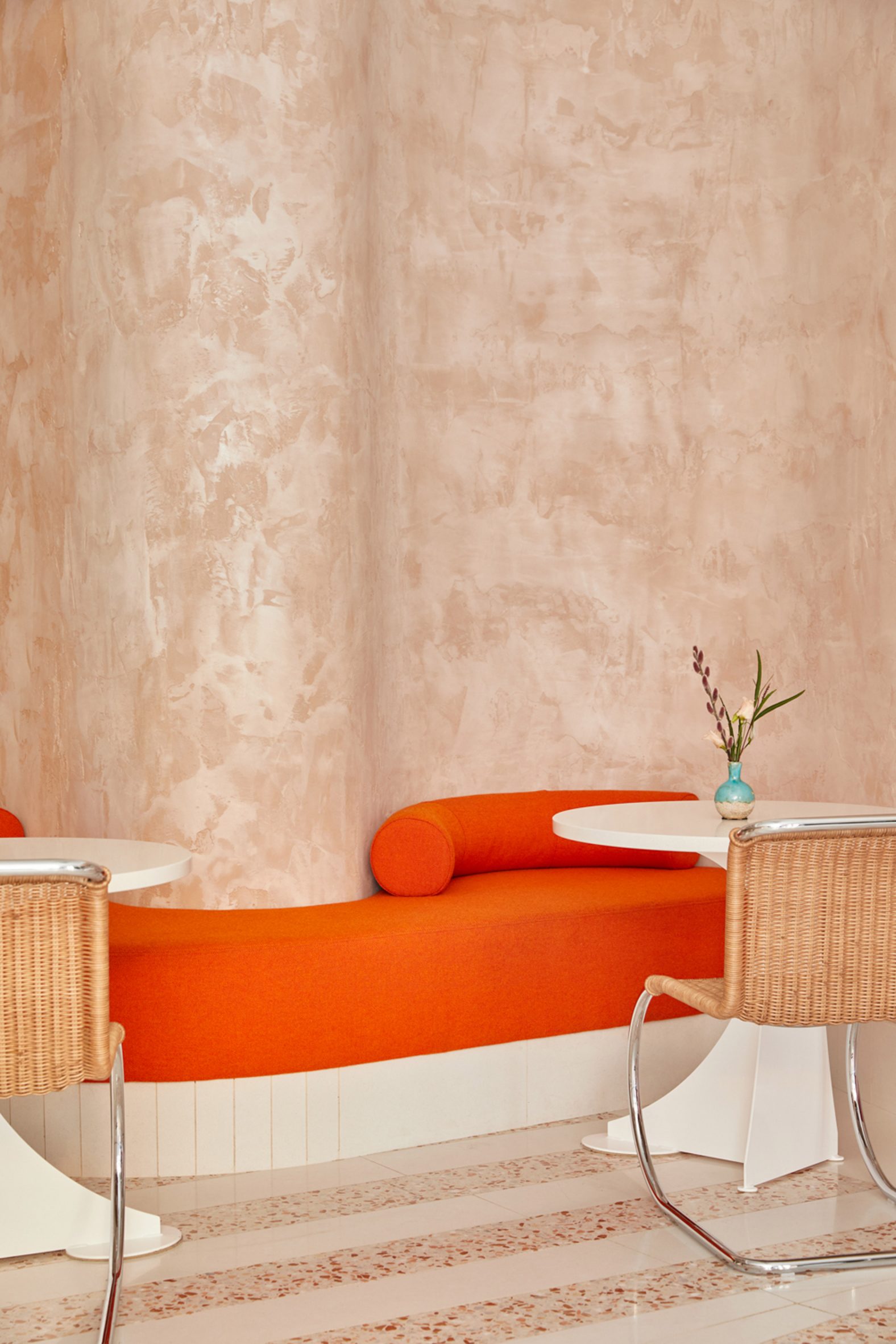 Curves are integrated in the walls
Curves are integrated in the walls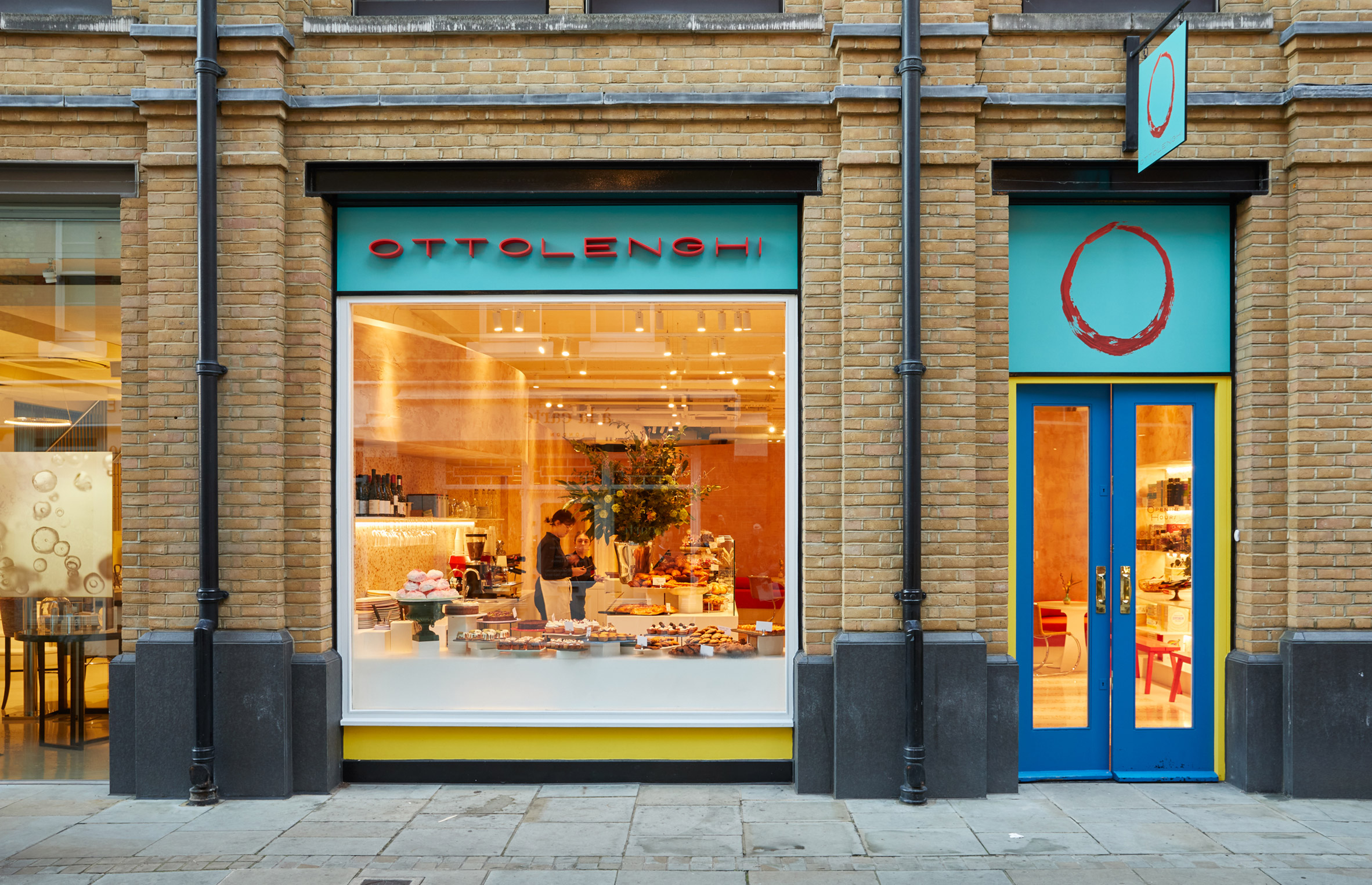 The facade features shades of yellow, blue and turquoise
The facade features shades of yellow, blue and turquoise
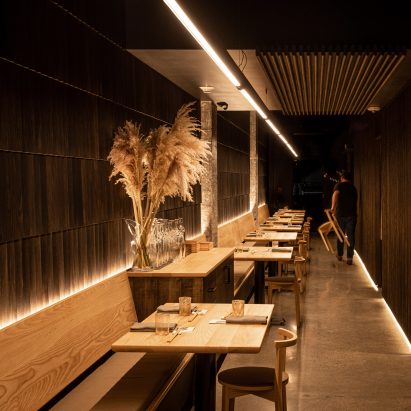
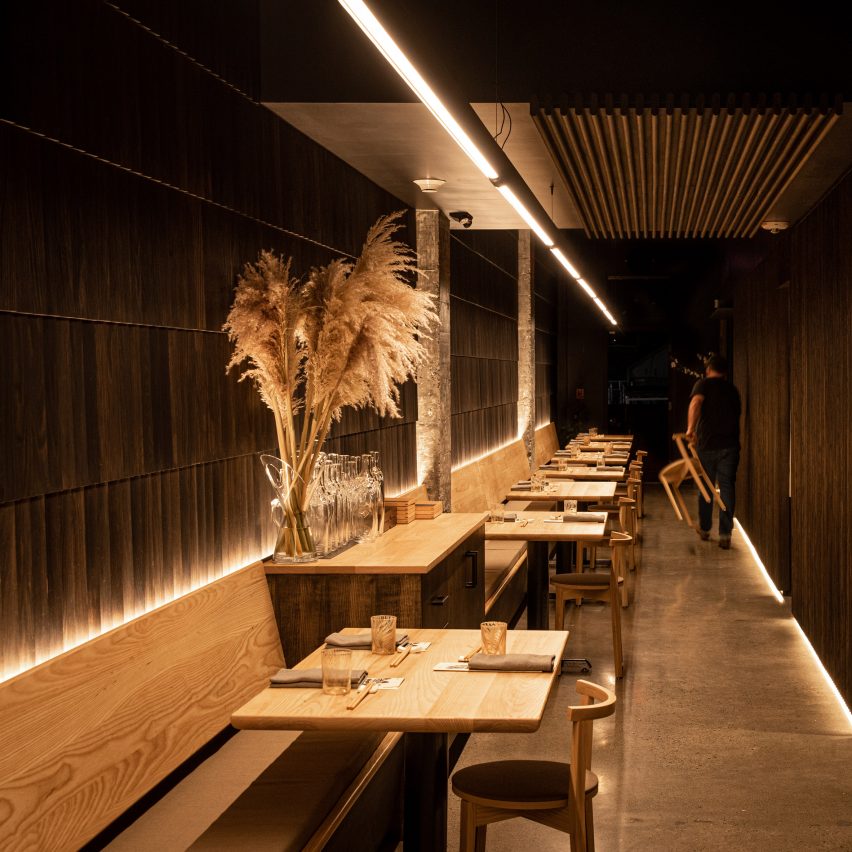
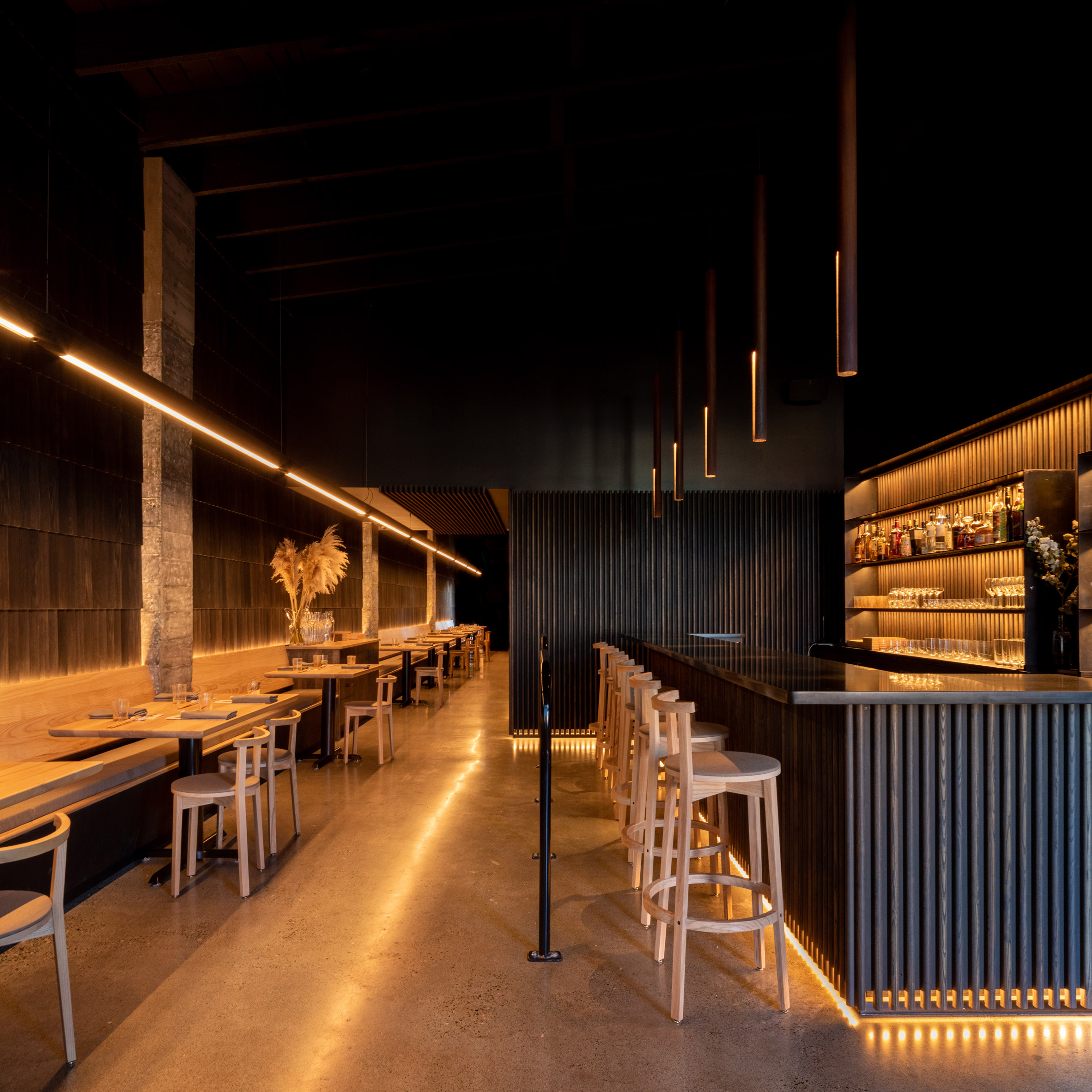 Dark-toned wood and golden light define Tomo restaurant
Dark-toned wood and golden light define Tomo restaurant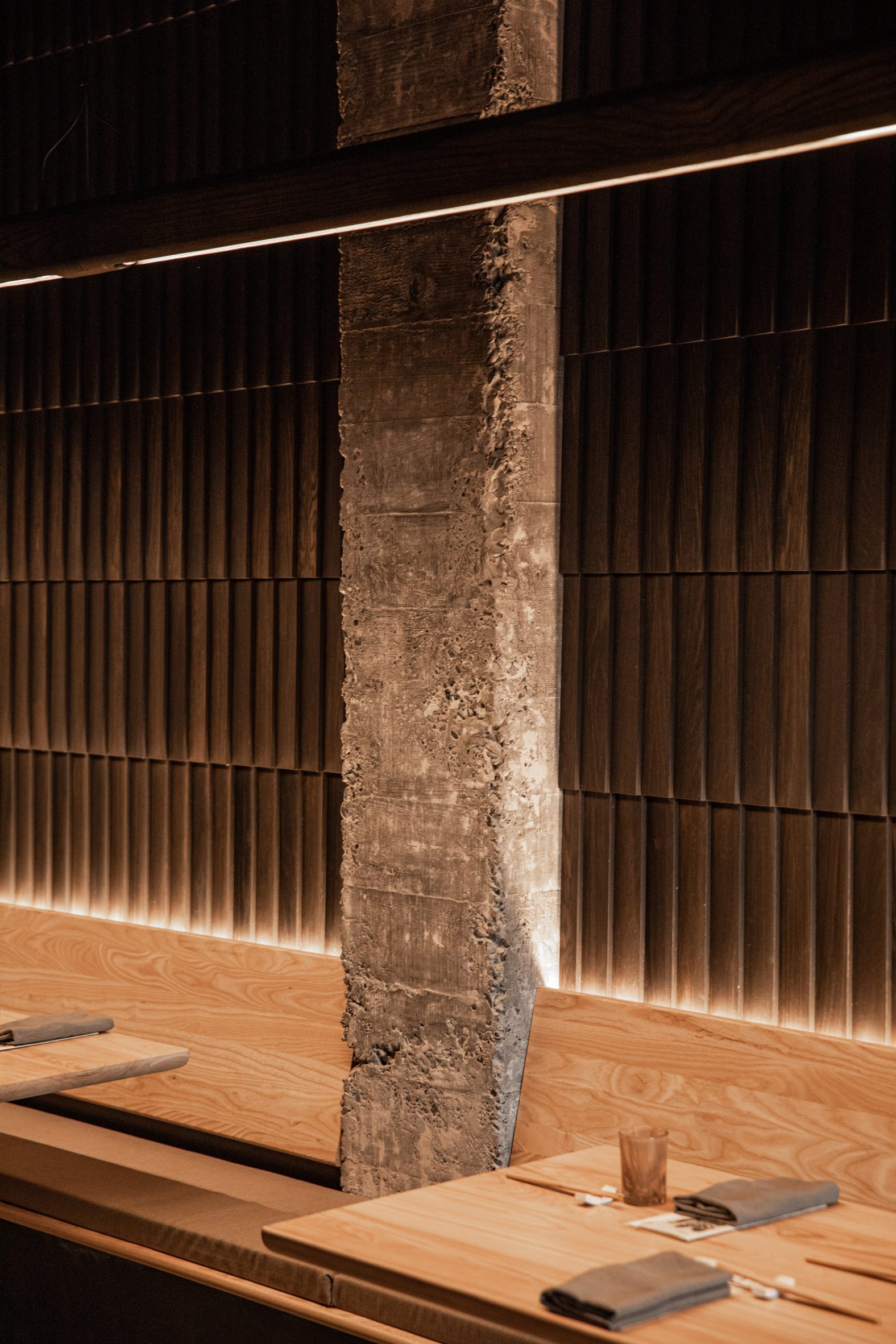 Graypants created the space on a minimal budget
Graypants created the space on a minimal budget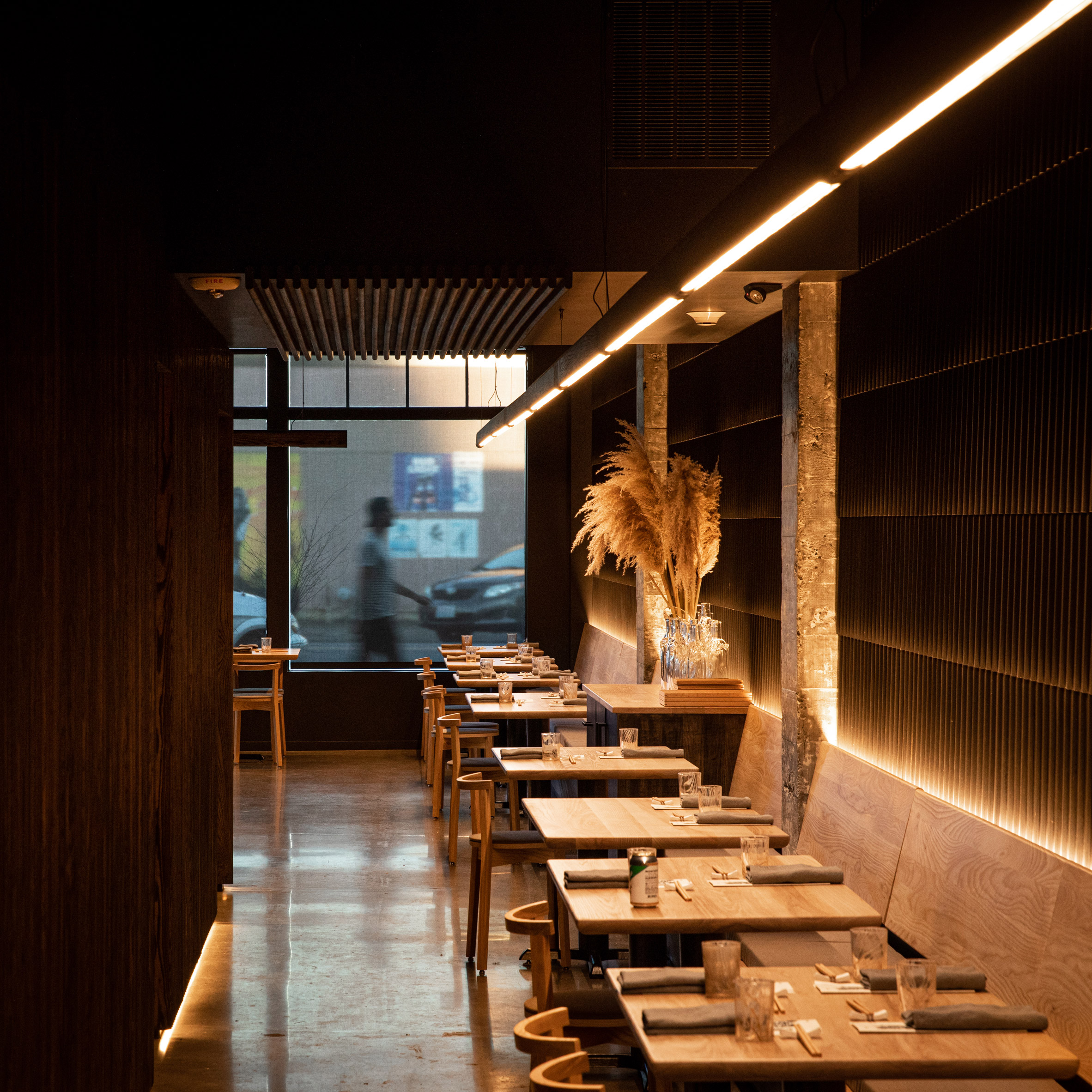 The design alludes to a Japanese urban alleyway
The design alludes to a Japanese urban alleyway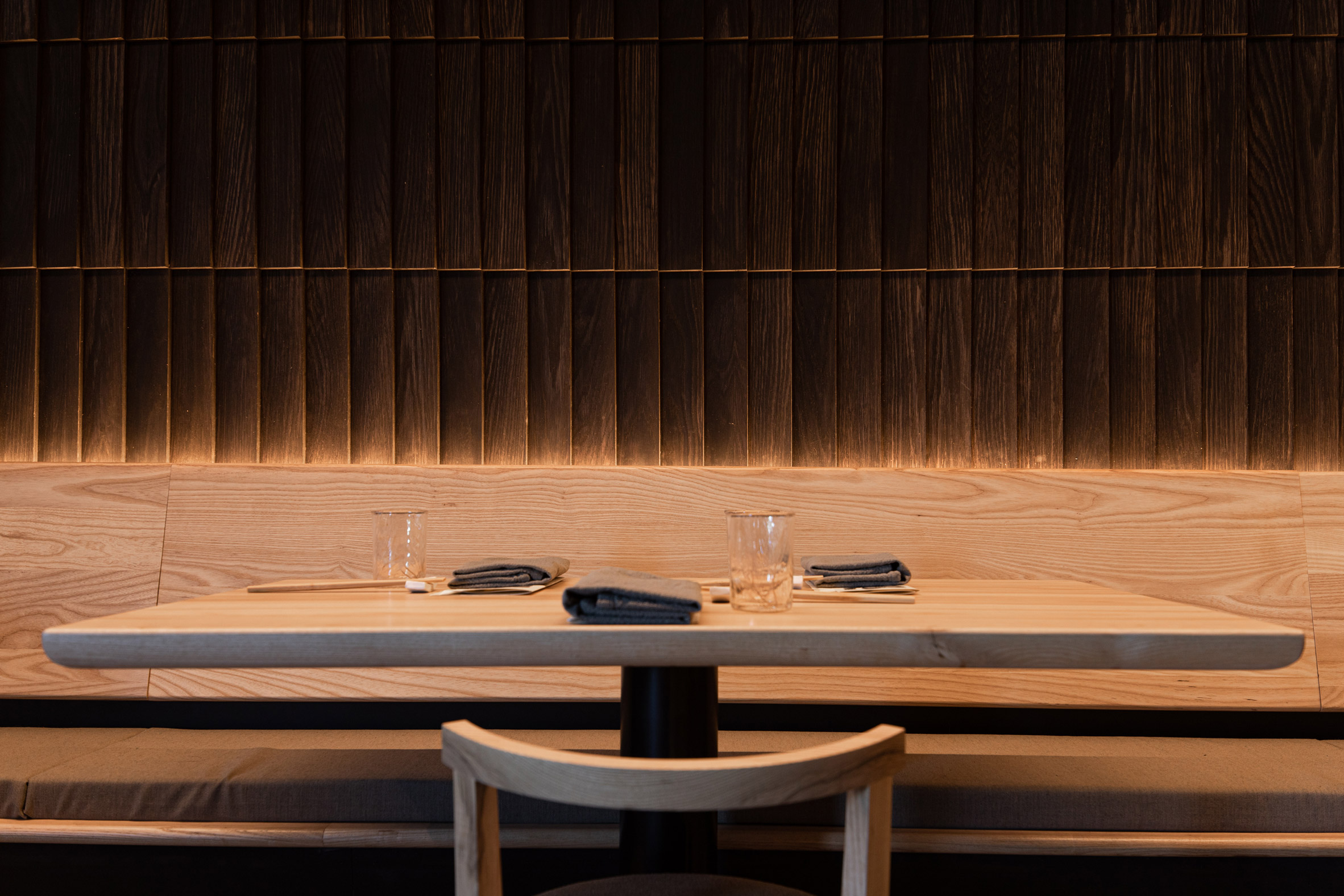 Oak shingles arranged like fish scales line the wall with seating
Oak shingles arranged like fish scales line the wall with seating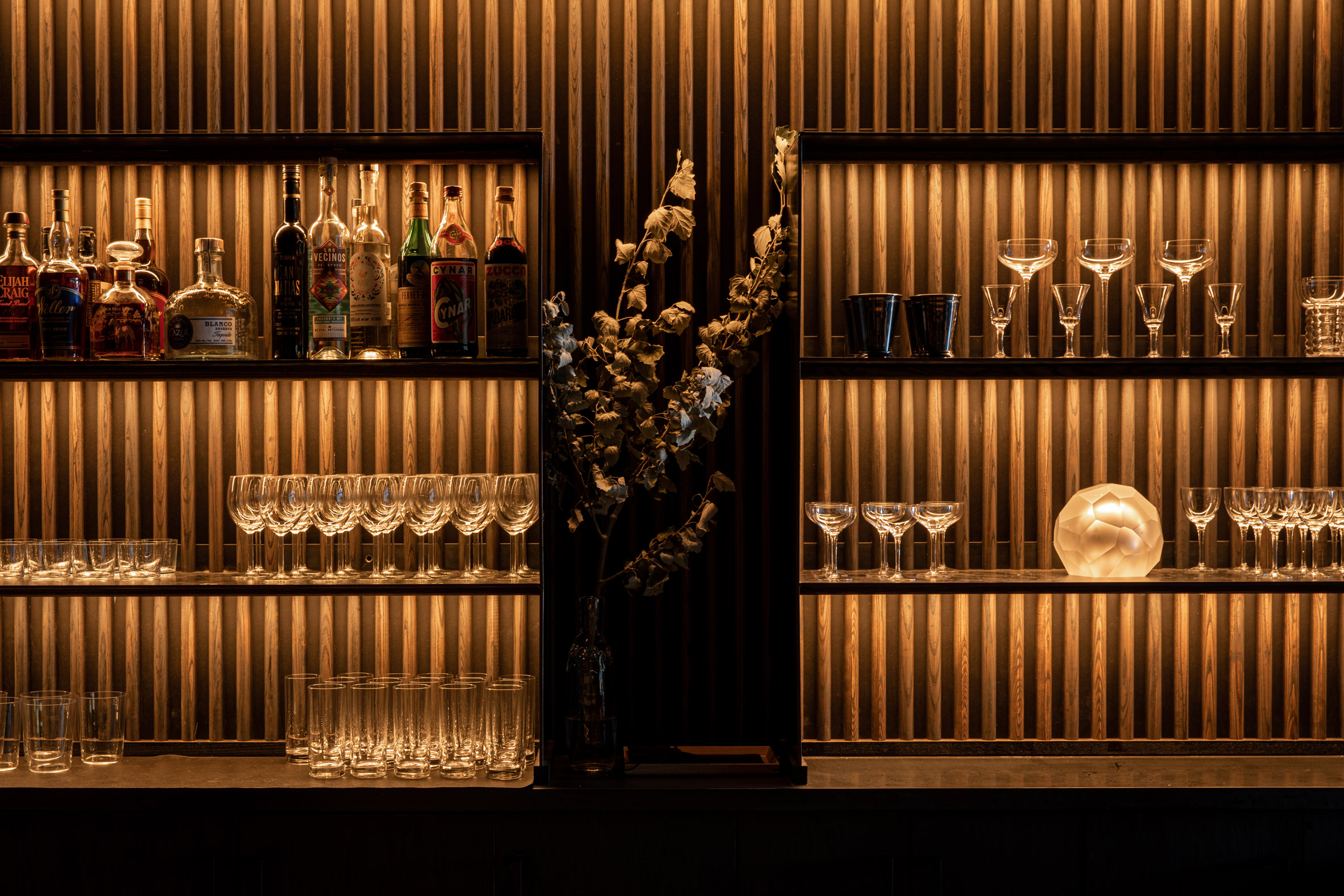 The bar features ebony-stained ash
The bar features ebony-stained ash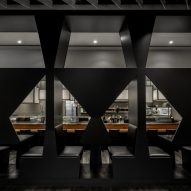
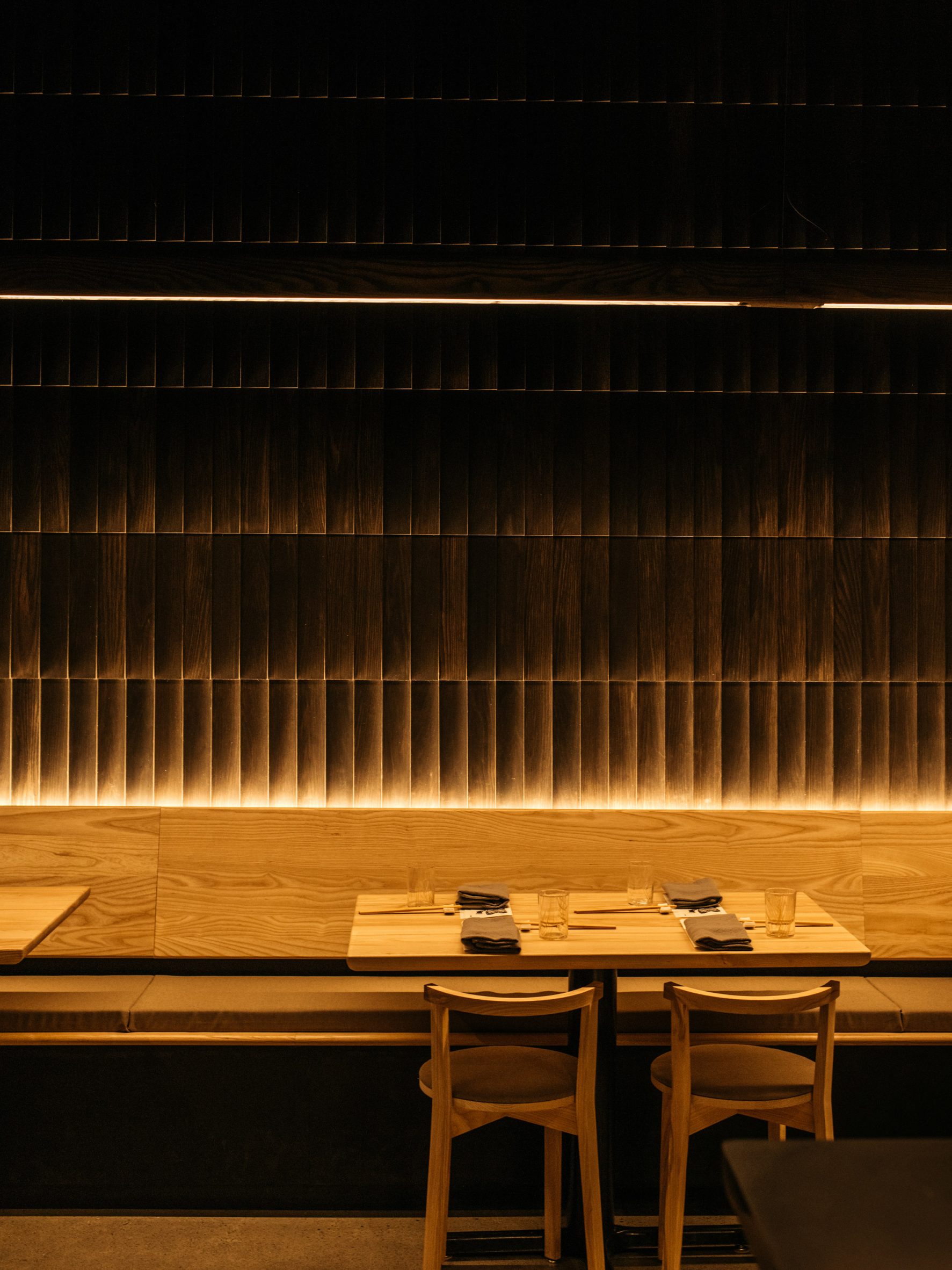 Most of the furniture was designed by Graypants
Most of the furniture was designed by Graypants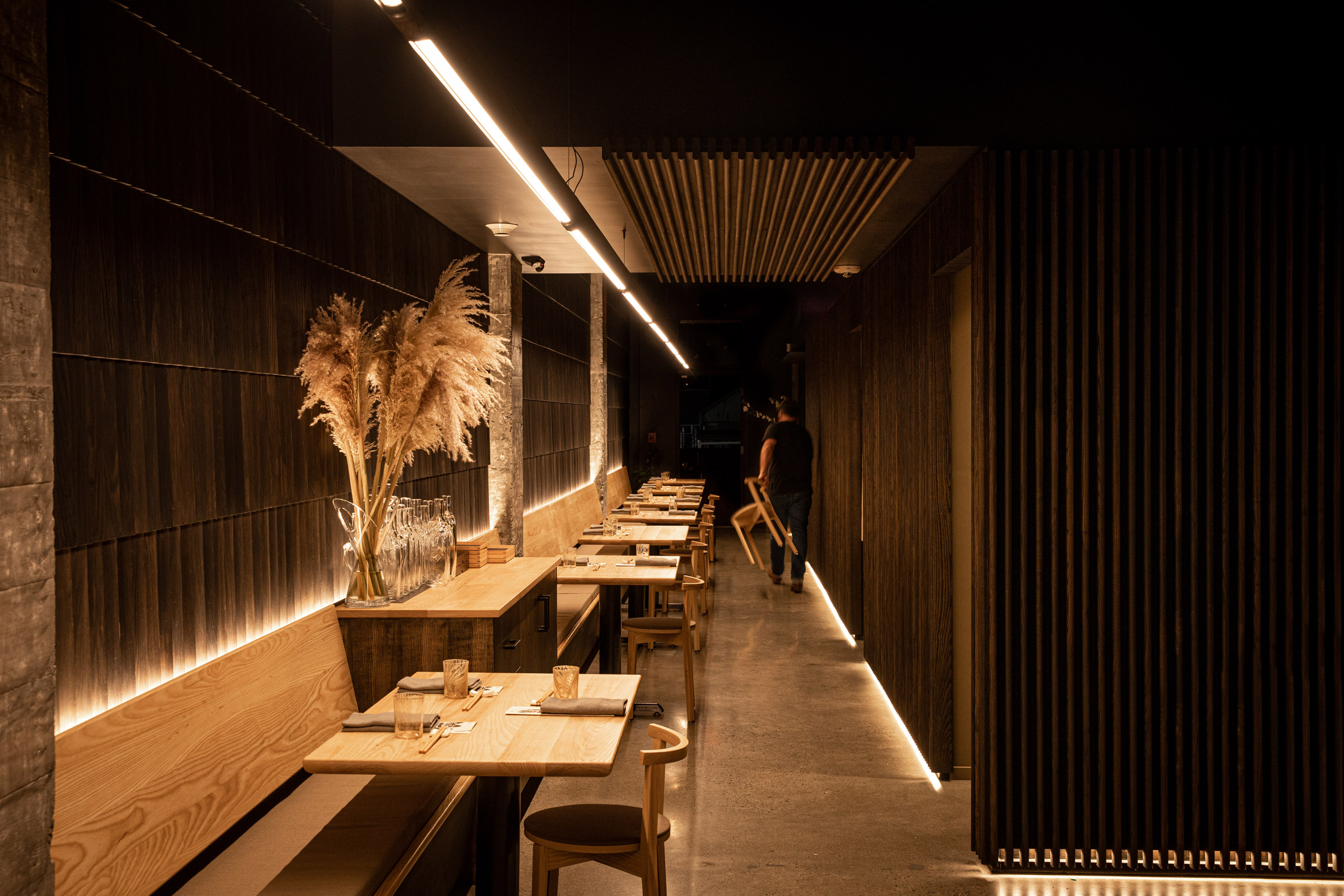 The architecture aims to be demure and humble, according to its designers
The architecture aims to be demure and humble, according to its designers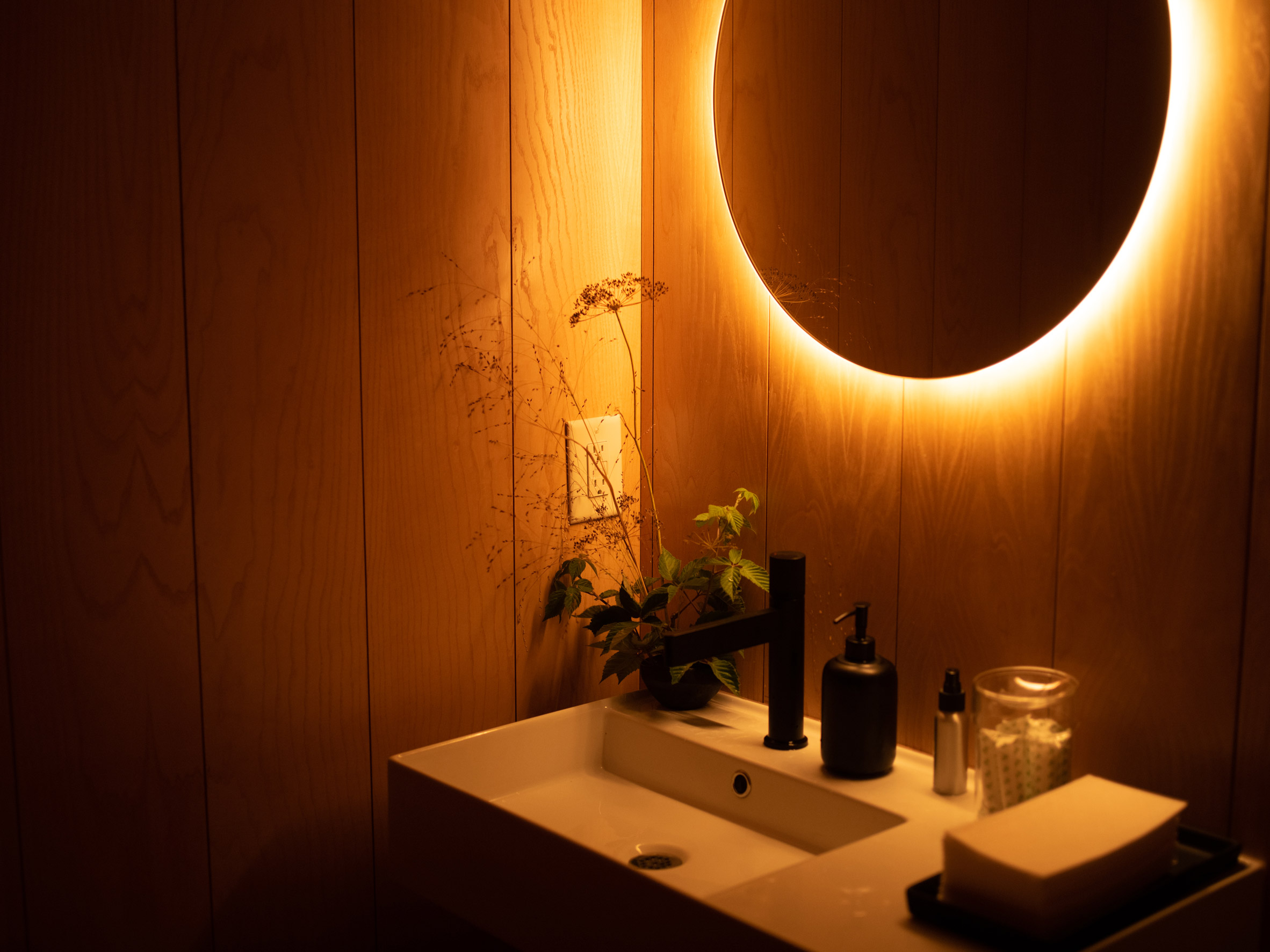 Low lighting is used throughout the restaurant
Low lighting is used throughout the restaurant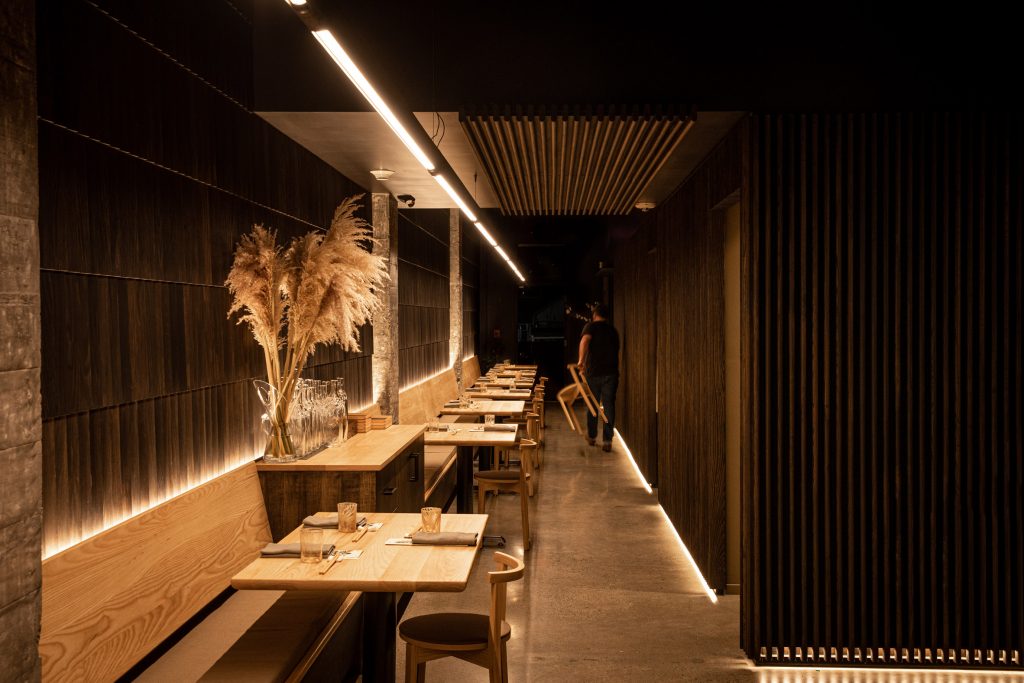
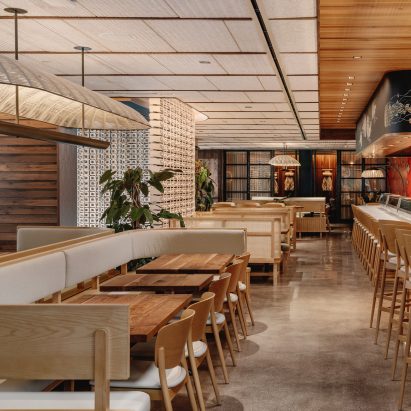
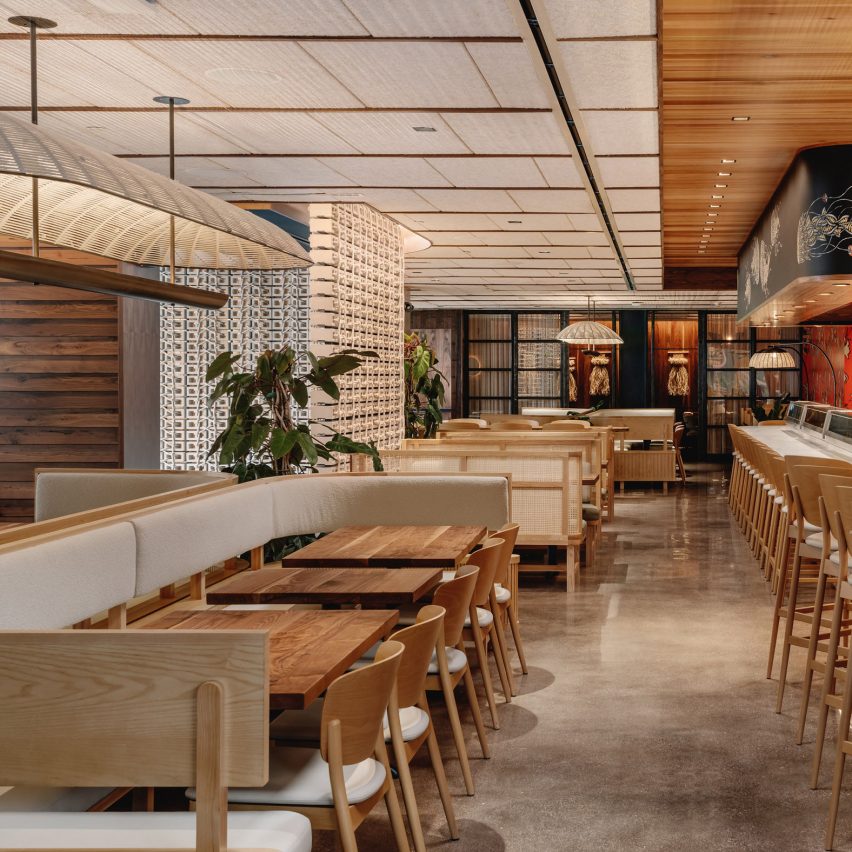
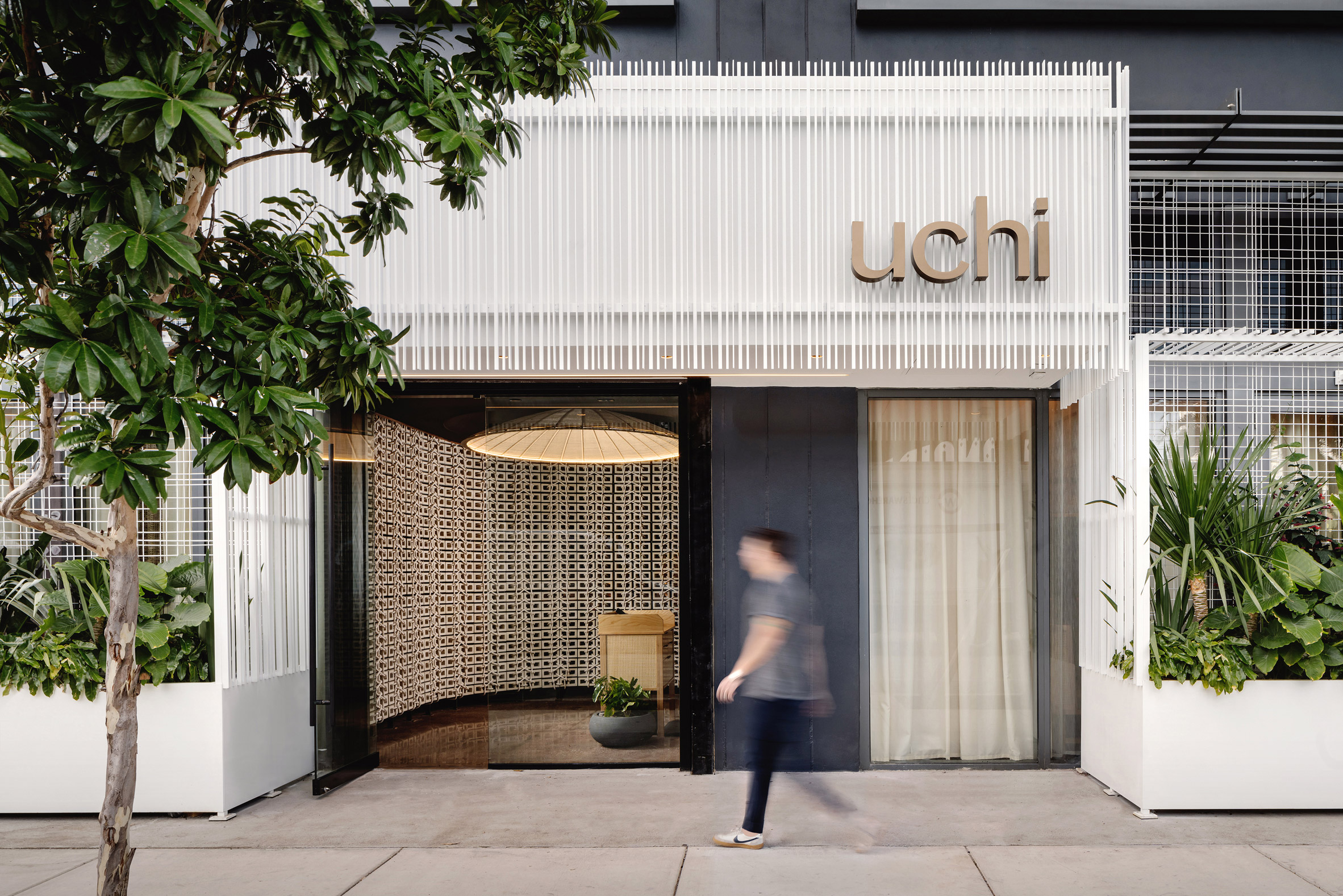 Uchi Miami in Wynwood is fronted by a white structure wrapped in slats
Uchi Miami in Wynwood is fronted by a white structure wrapped in slats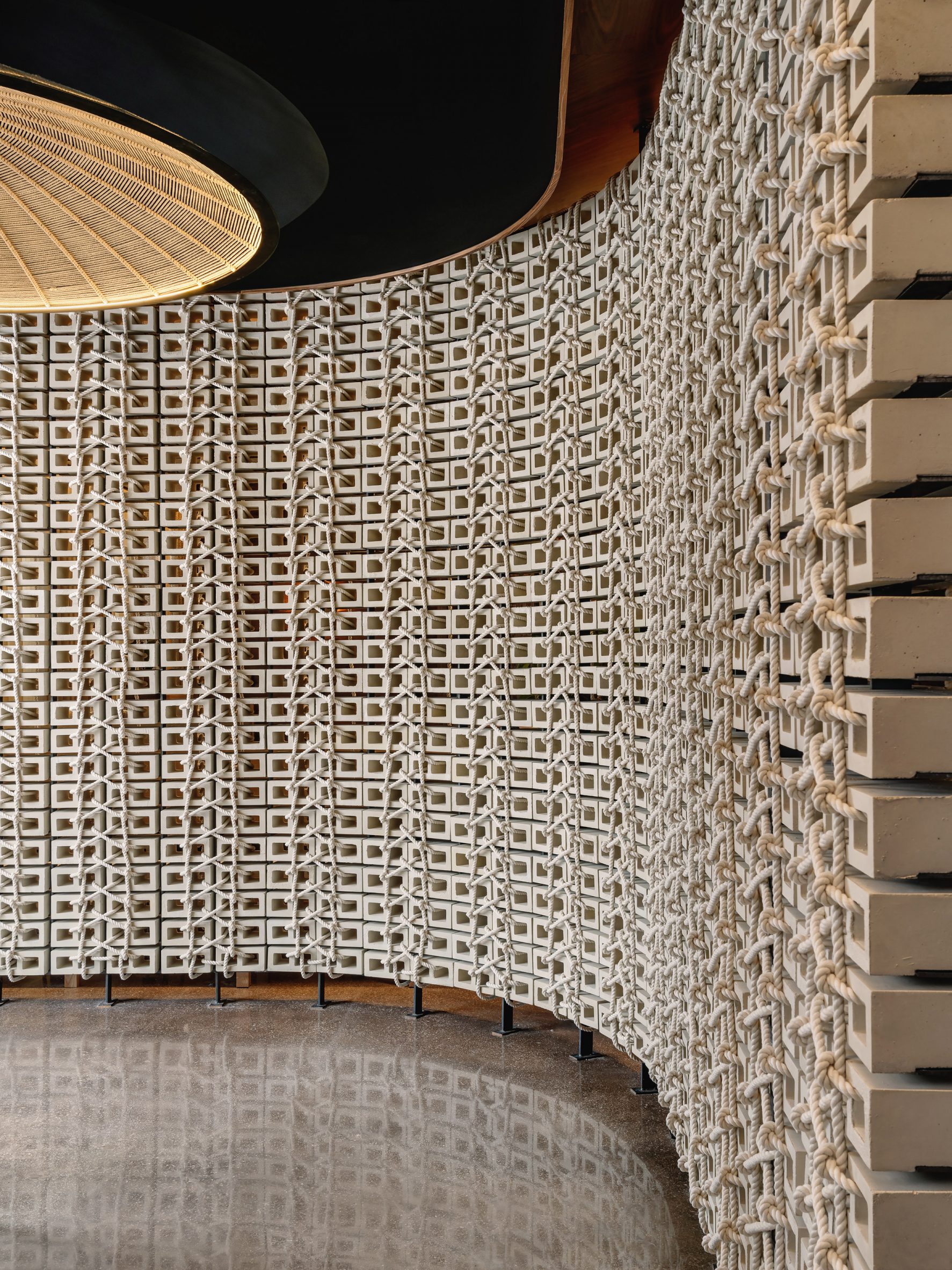 A wall of woven bricks by Vas Bets greets guests upon entry
A wall of woven bricks by Vas Bets greets guests upon entry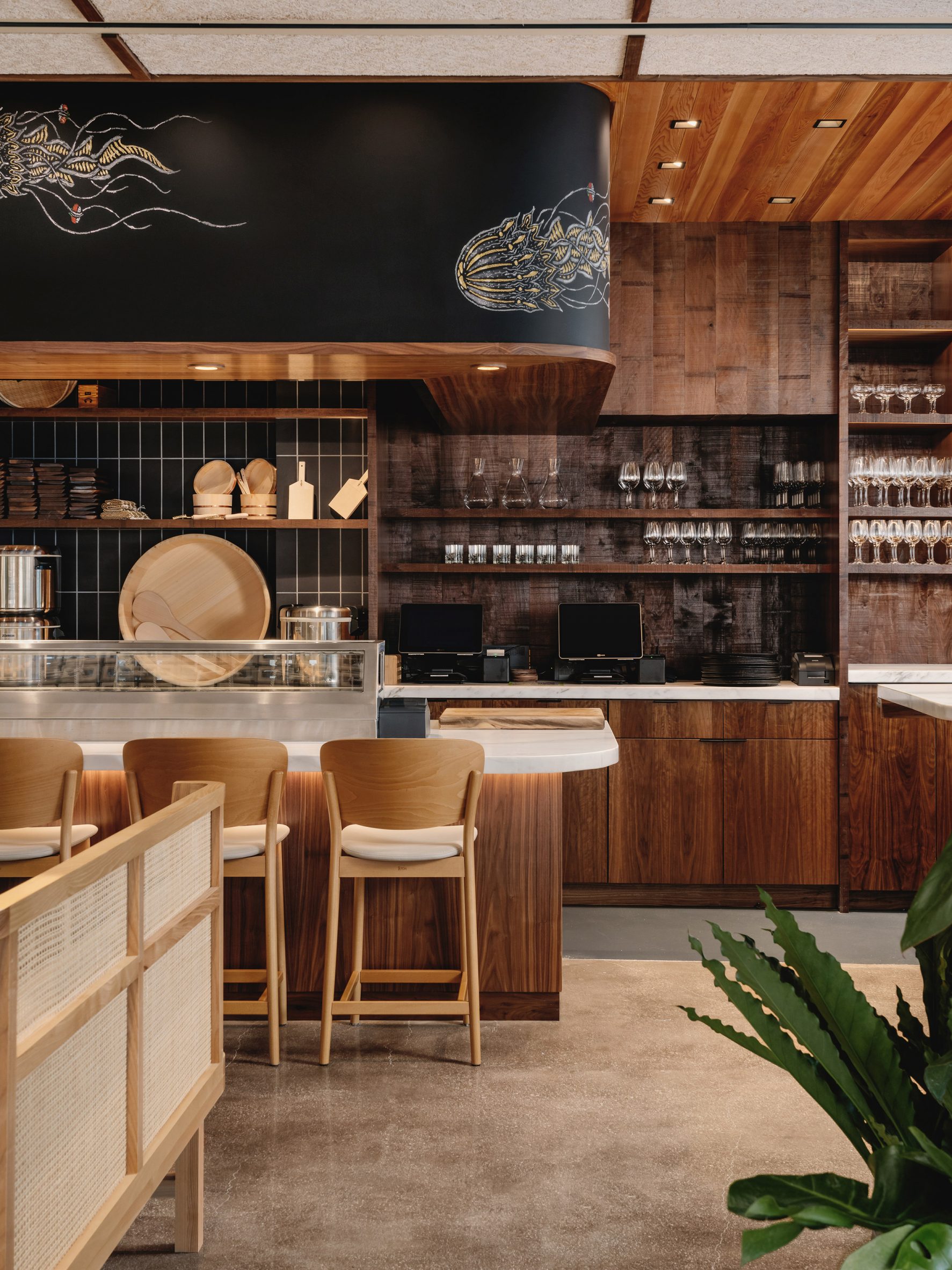 A chalk mural by Sam Angus Jackson is found above the sushi bar
A chalk mural by Sam Angus Jackson is found above the sushi bar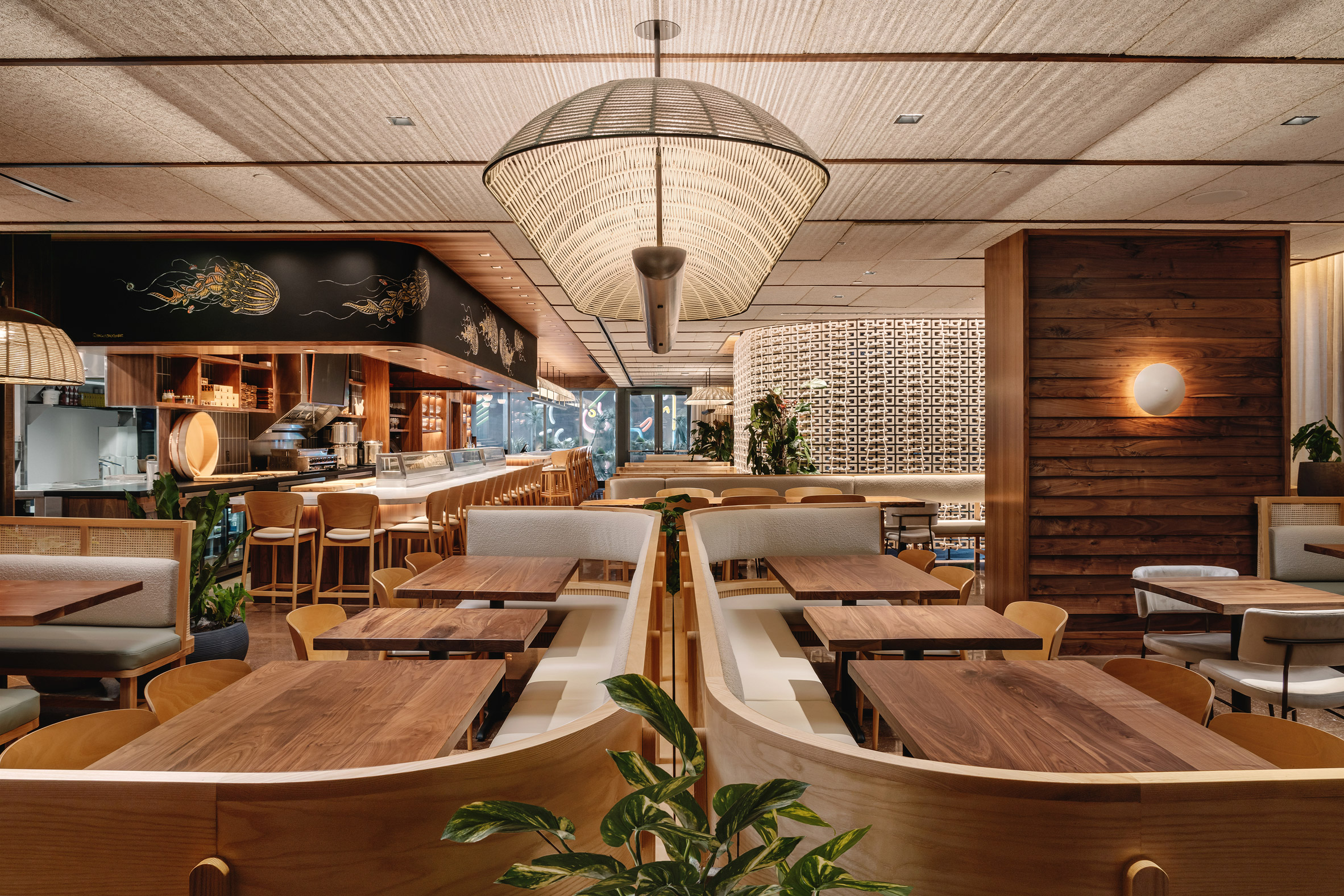 Warbach's woven light fixtures create patterns across the ceiling
Warbach's woven light fixtures create patterns across the ceiling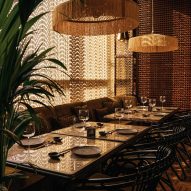
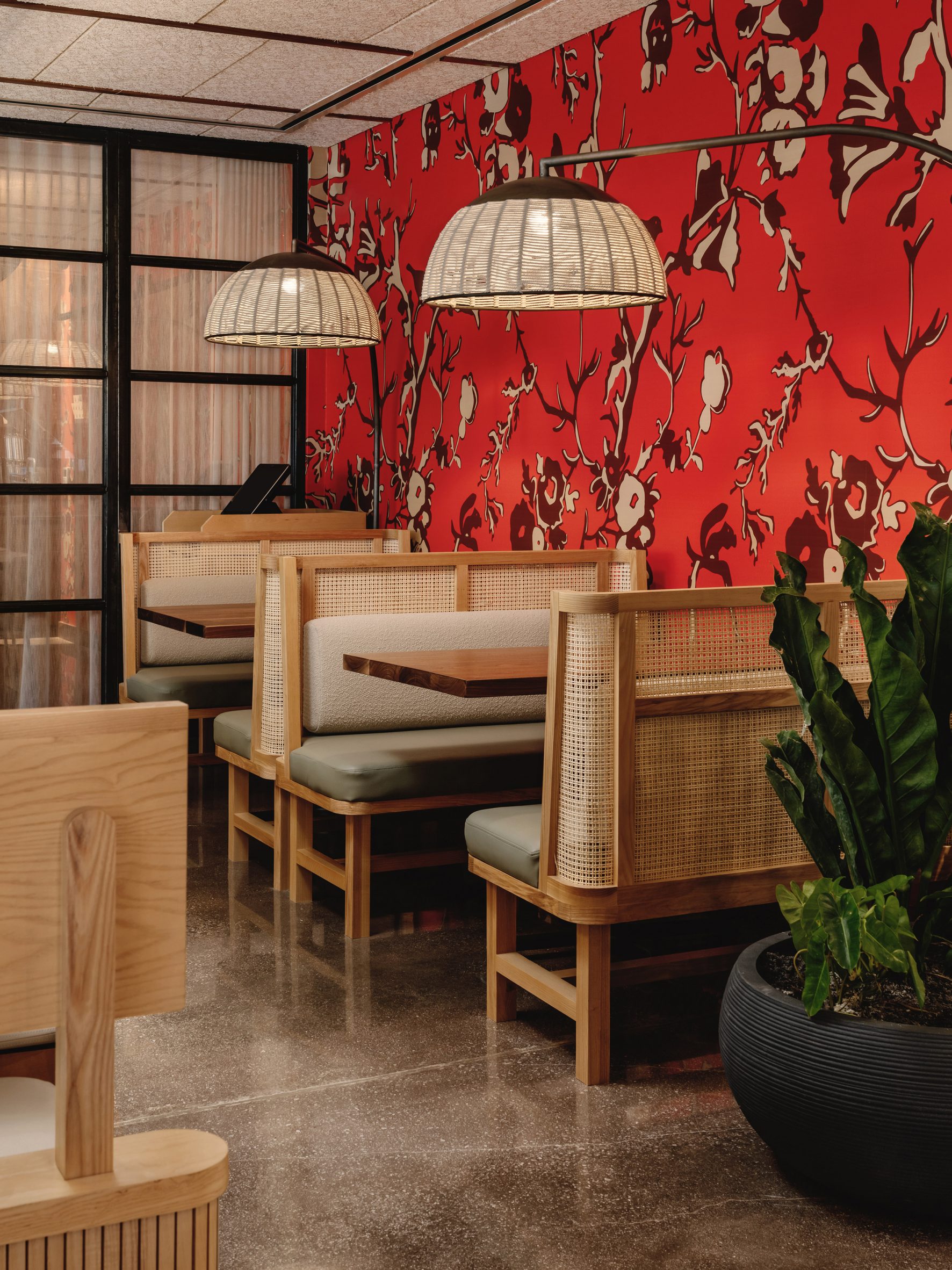 Bright red wallpaper offers a contrast to the natural materials
Bright red wallpaper offers a contrast to the natural materials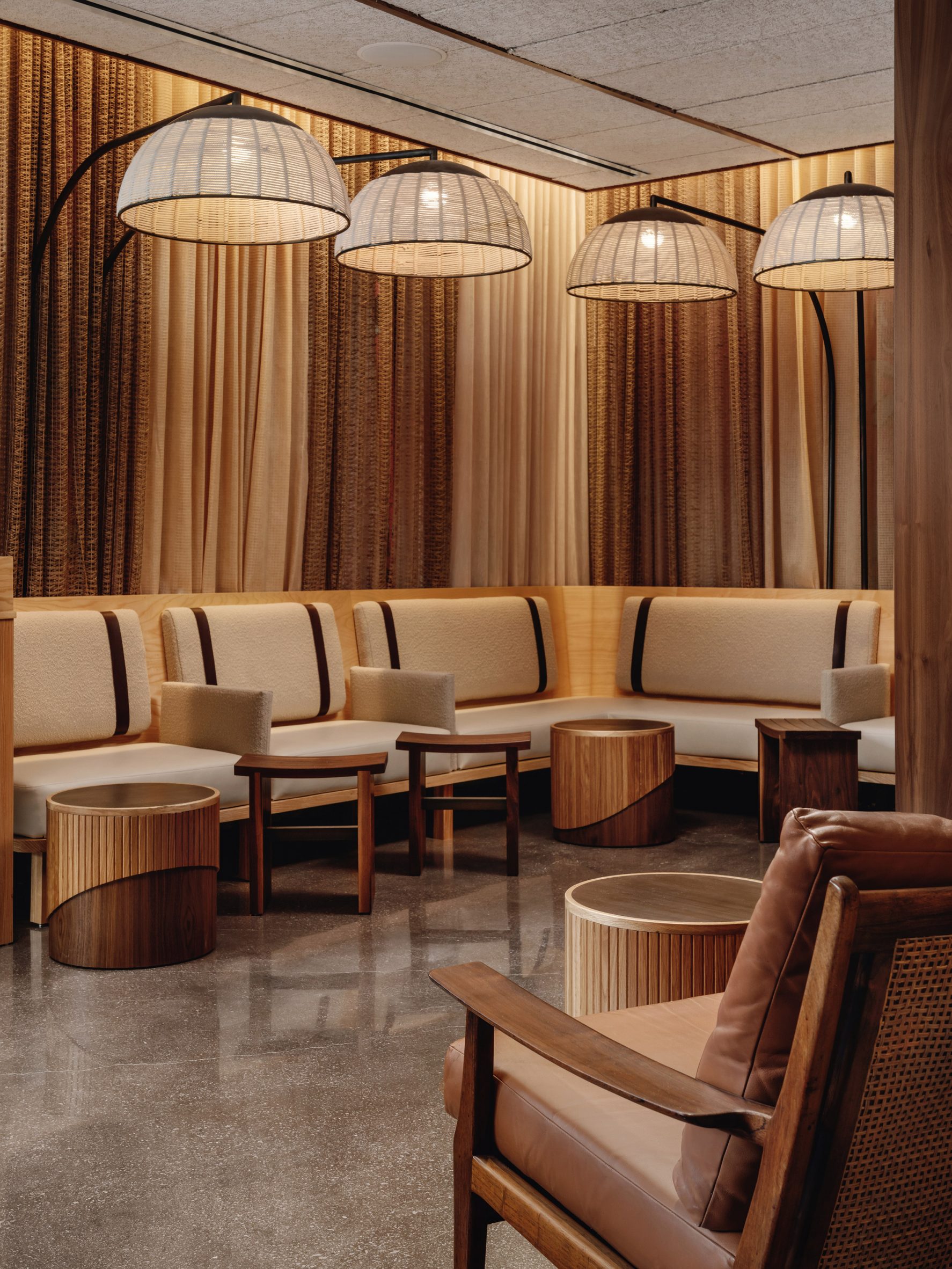 The studio aimed to blend a variety of textures and materials throughout the restaurant
The studio aimed to blend a variety of textures and materials throughout the restaurant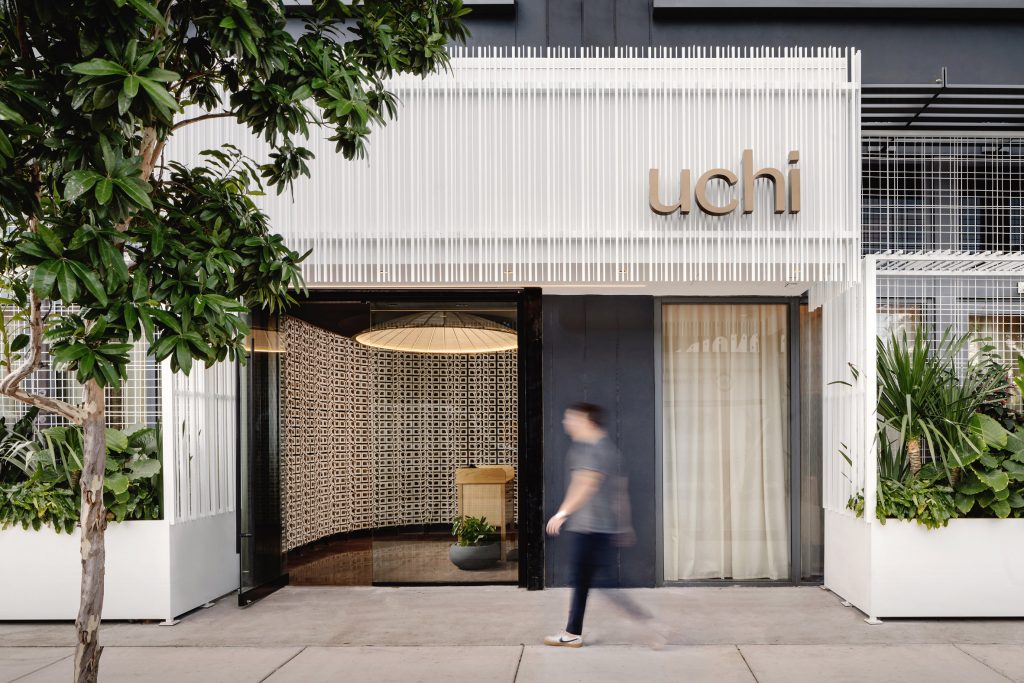
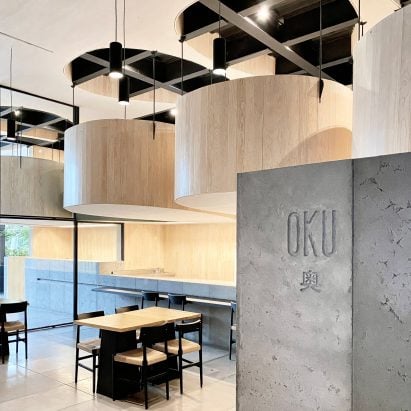
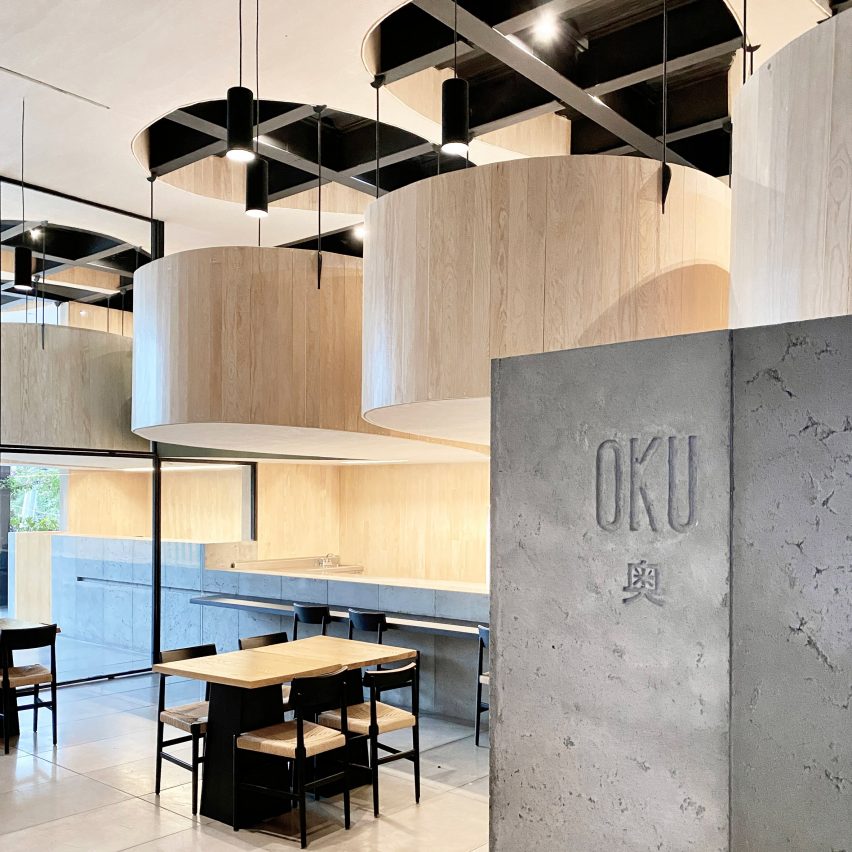
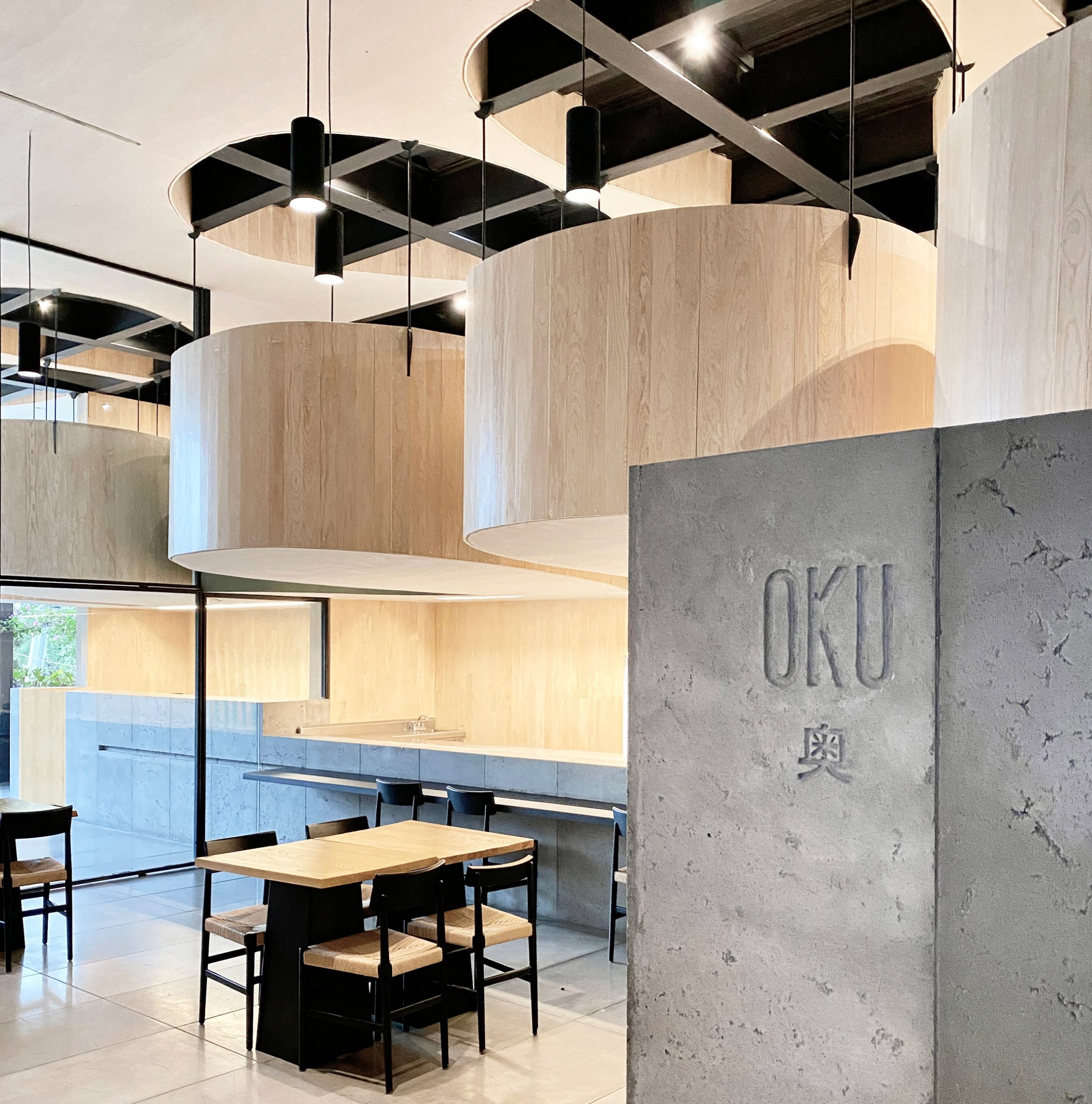 Oku is a sushi restaurant in Mexico City
Oku is a sushi restaurant in Mexico City The restaurant is Michan Architecture's second of its kind
The restaurant is Michan Architecture's second of its kind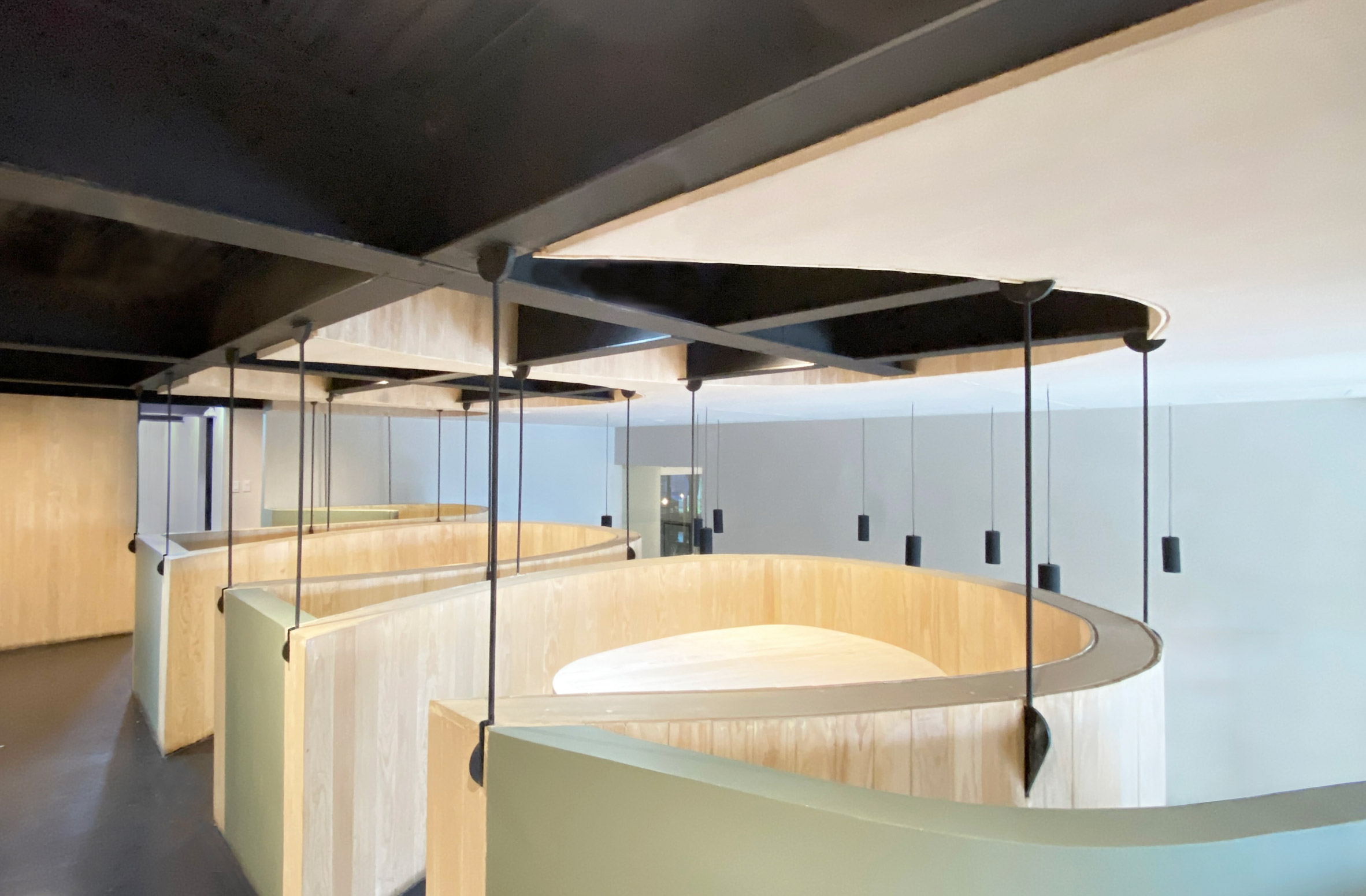 "Floating tables" are arrayed along a corridor
"Floating tables" are arrayed along a corridor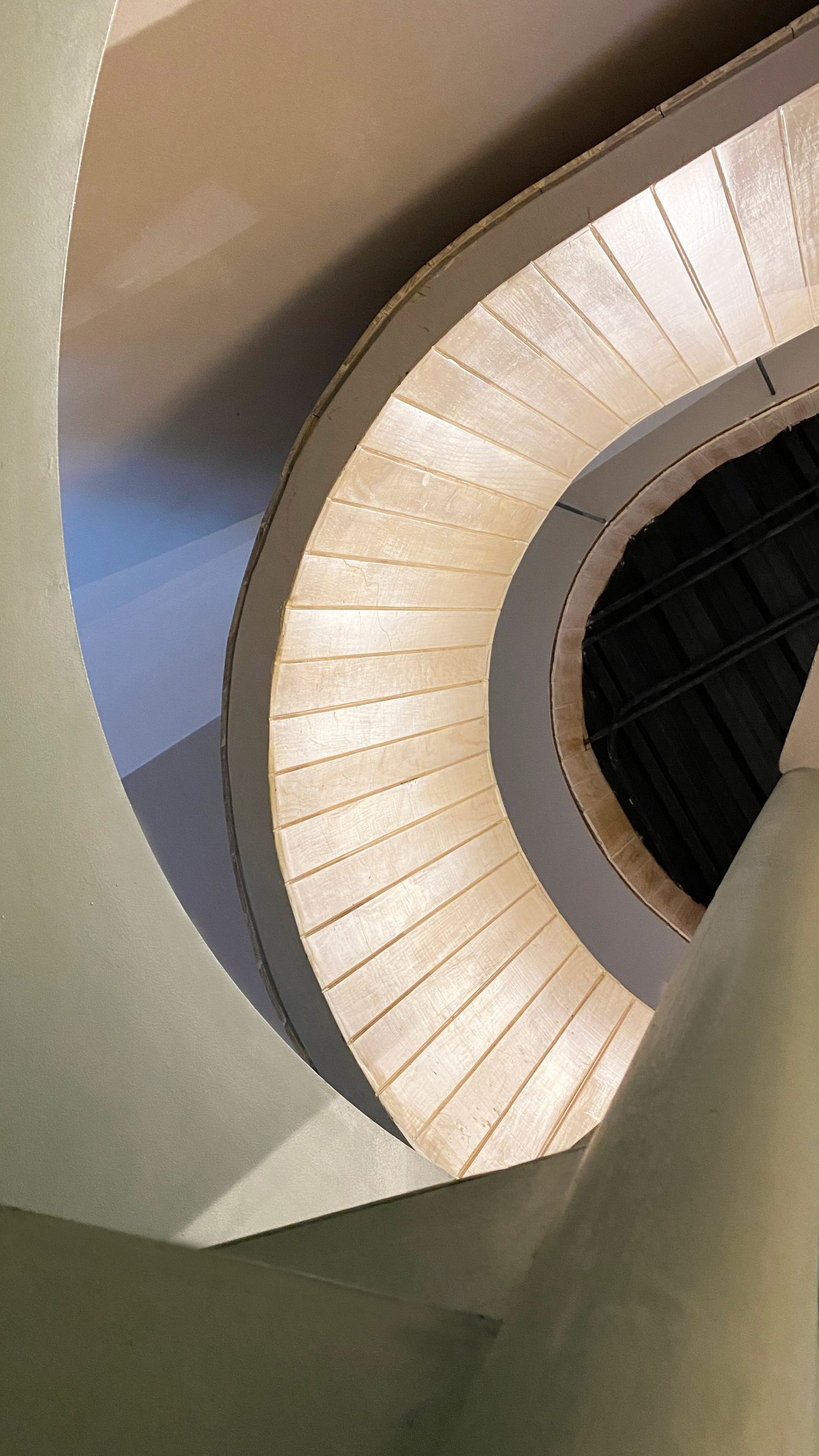 Curved stairs connect Oku's two levels
Curved stairs connect Oku's two levels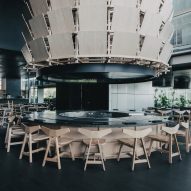
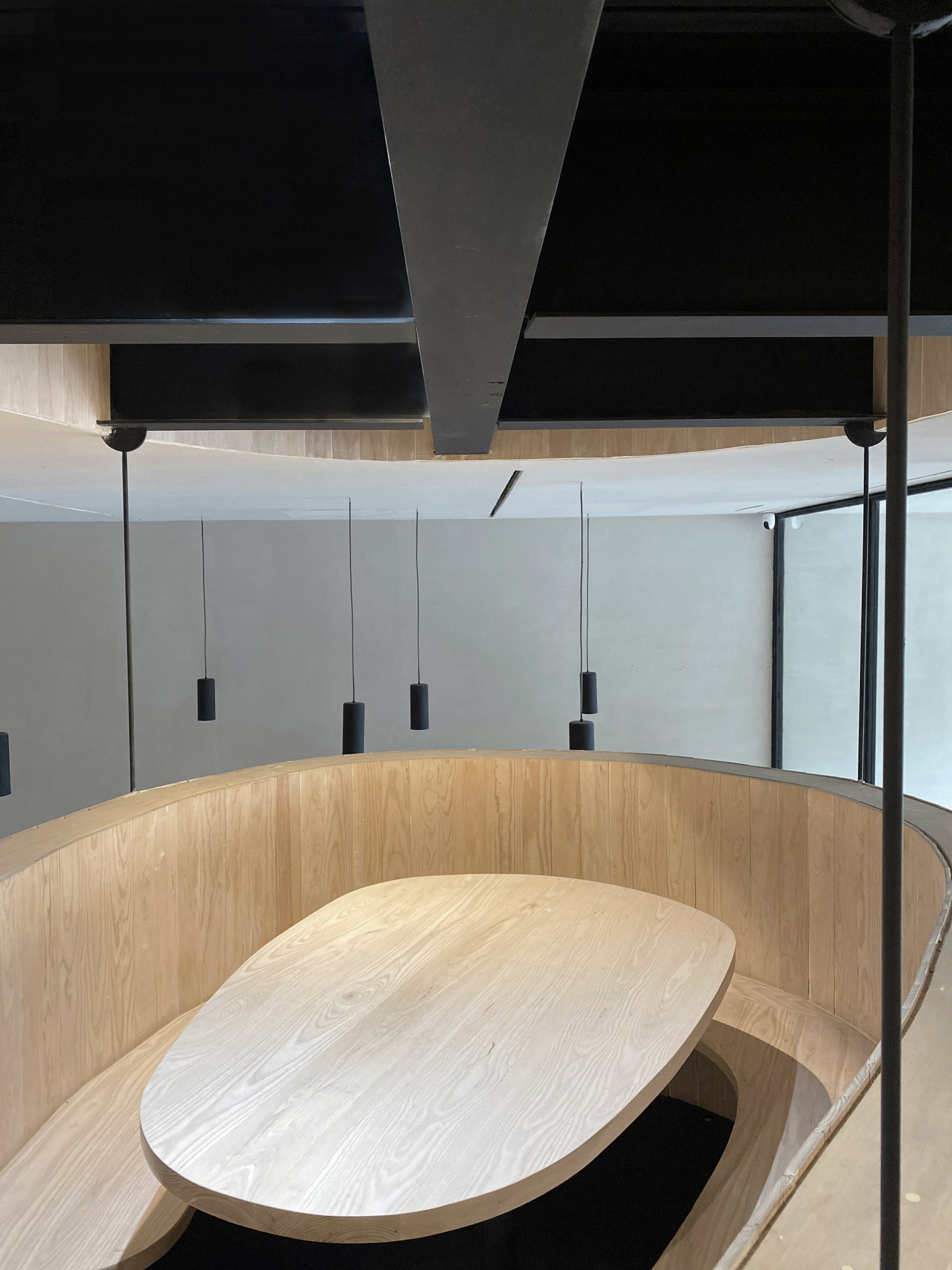 Cylindrical black lighting fixtures hang from the ceiling
Cylindrical black lighting fixtures hang from the ceiling The team used neutral colours and clad surfaces in pinewood throughout Oku
The team used neutral colours and clad surfaces in pinewood throughout Oku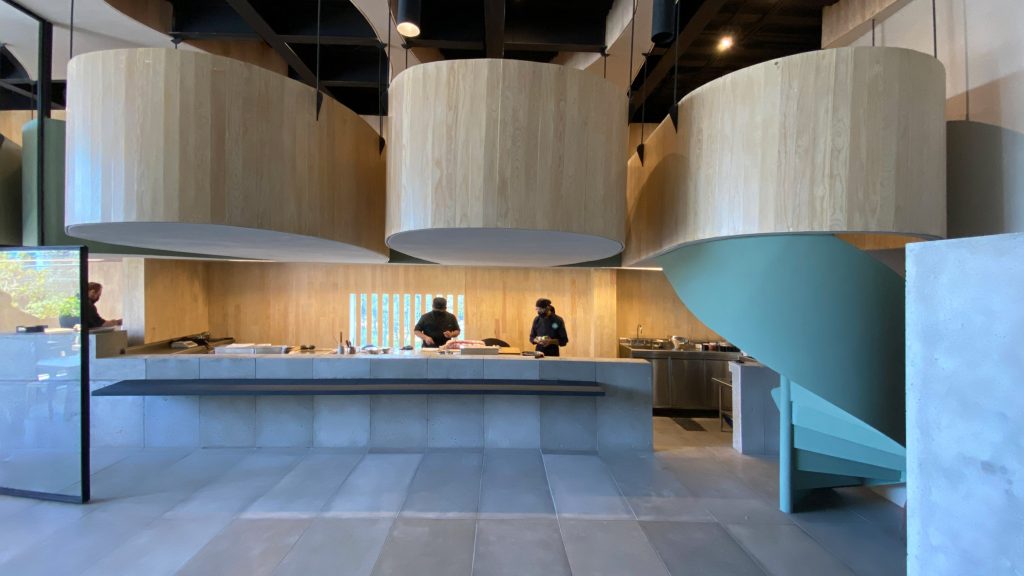
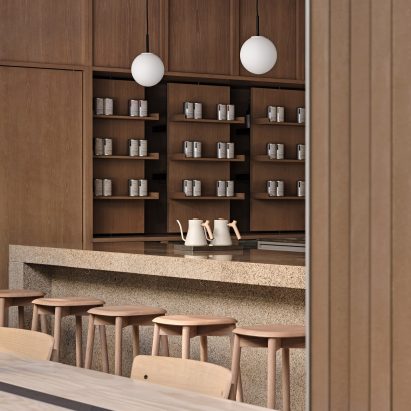
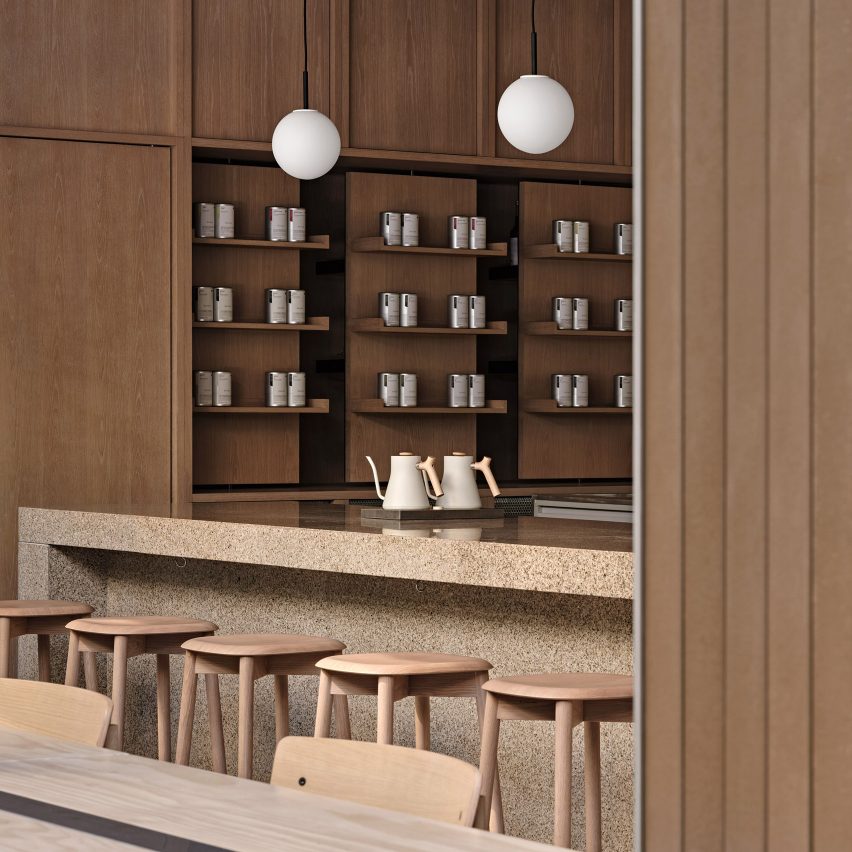
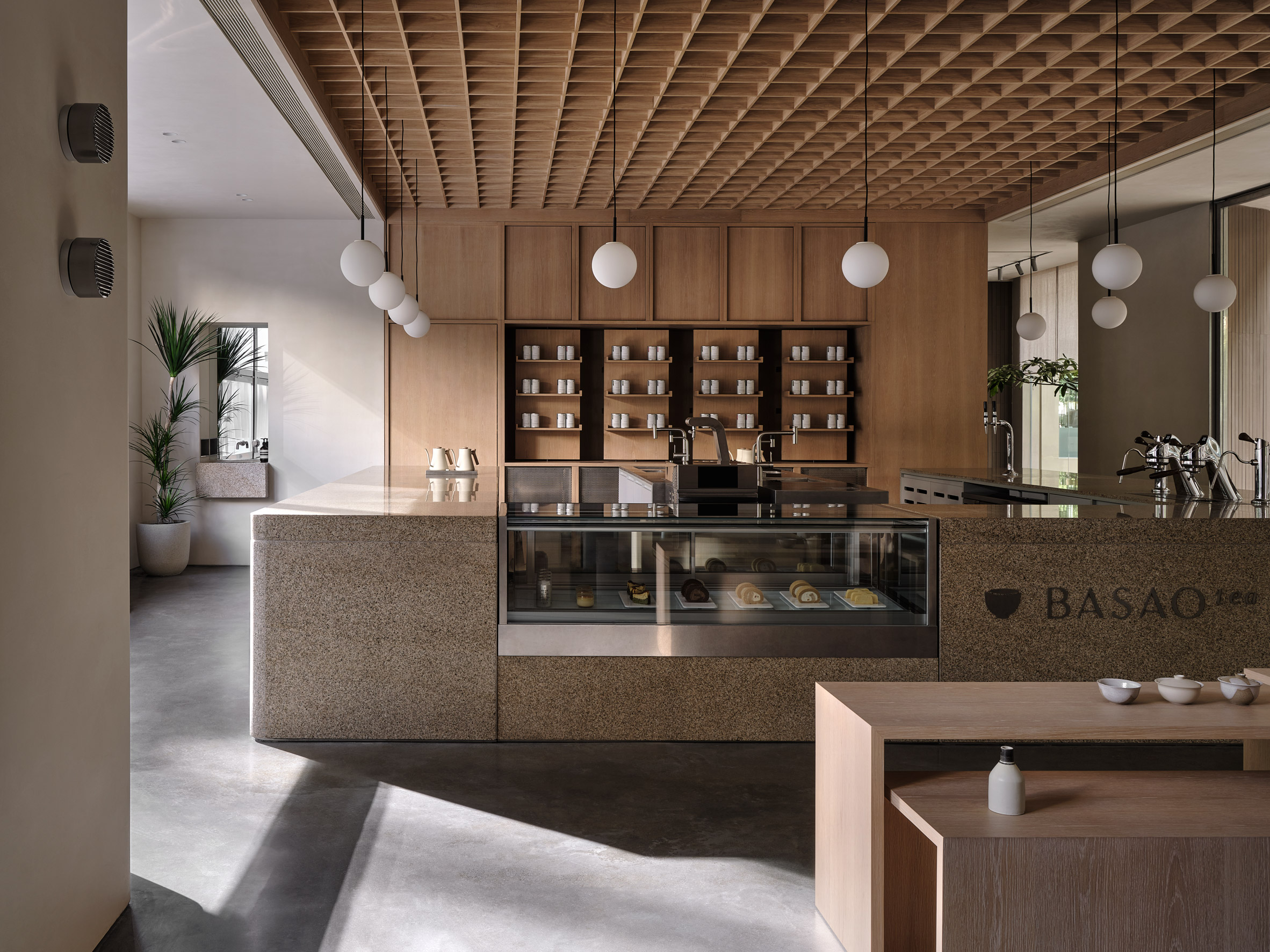 The Basao tea lounge is arranged around a Chinese stone counter
The Basao tea lounge is arranged around a Chinese stone counter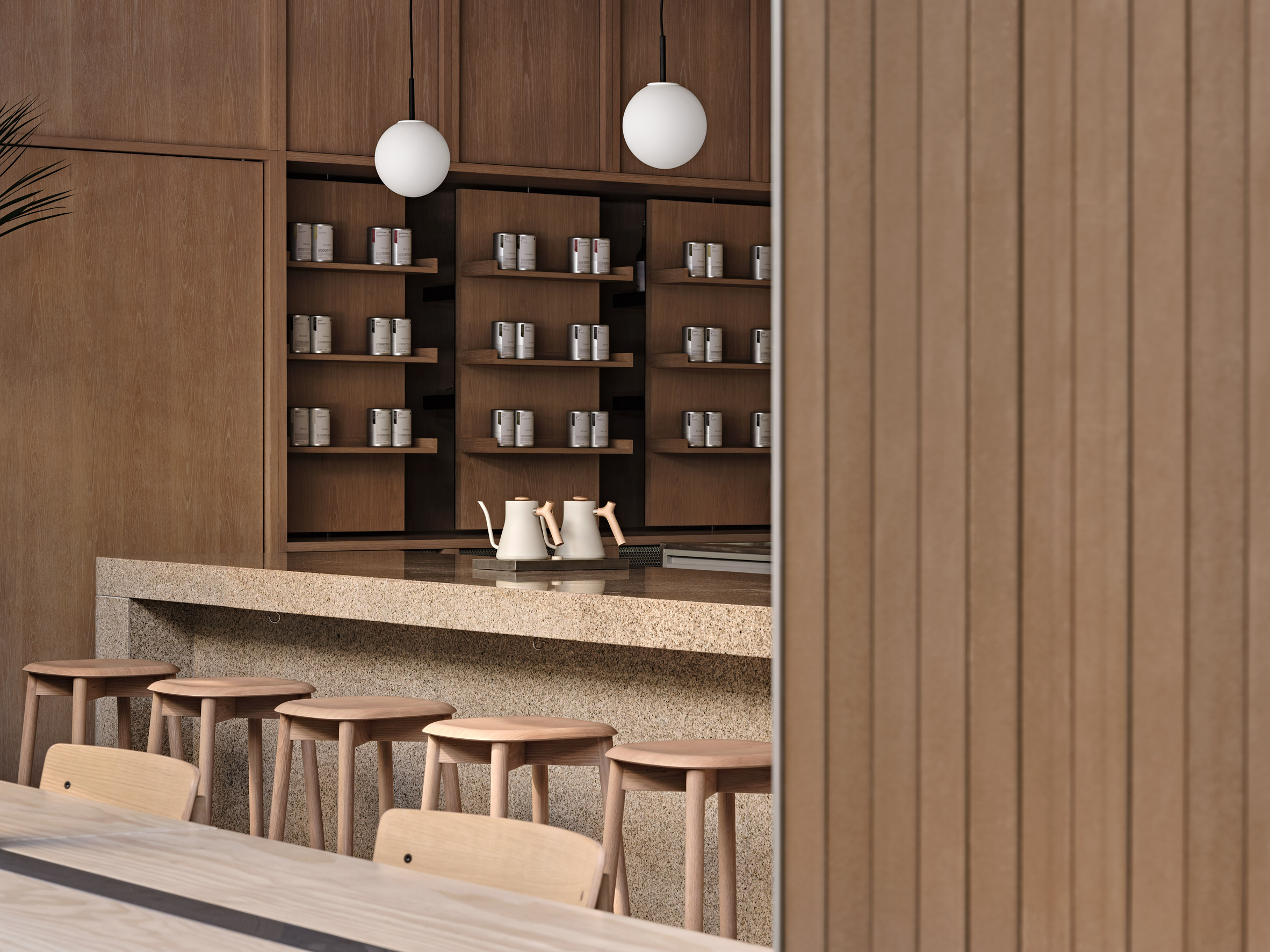 Seating around the counter provides views of the brewing process
Seating around the counter provides views of the brewing process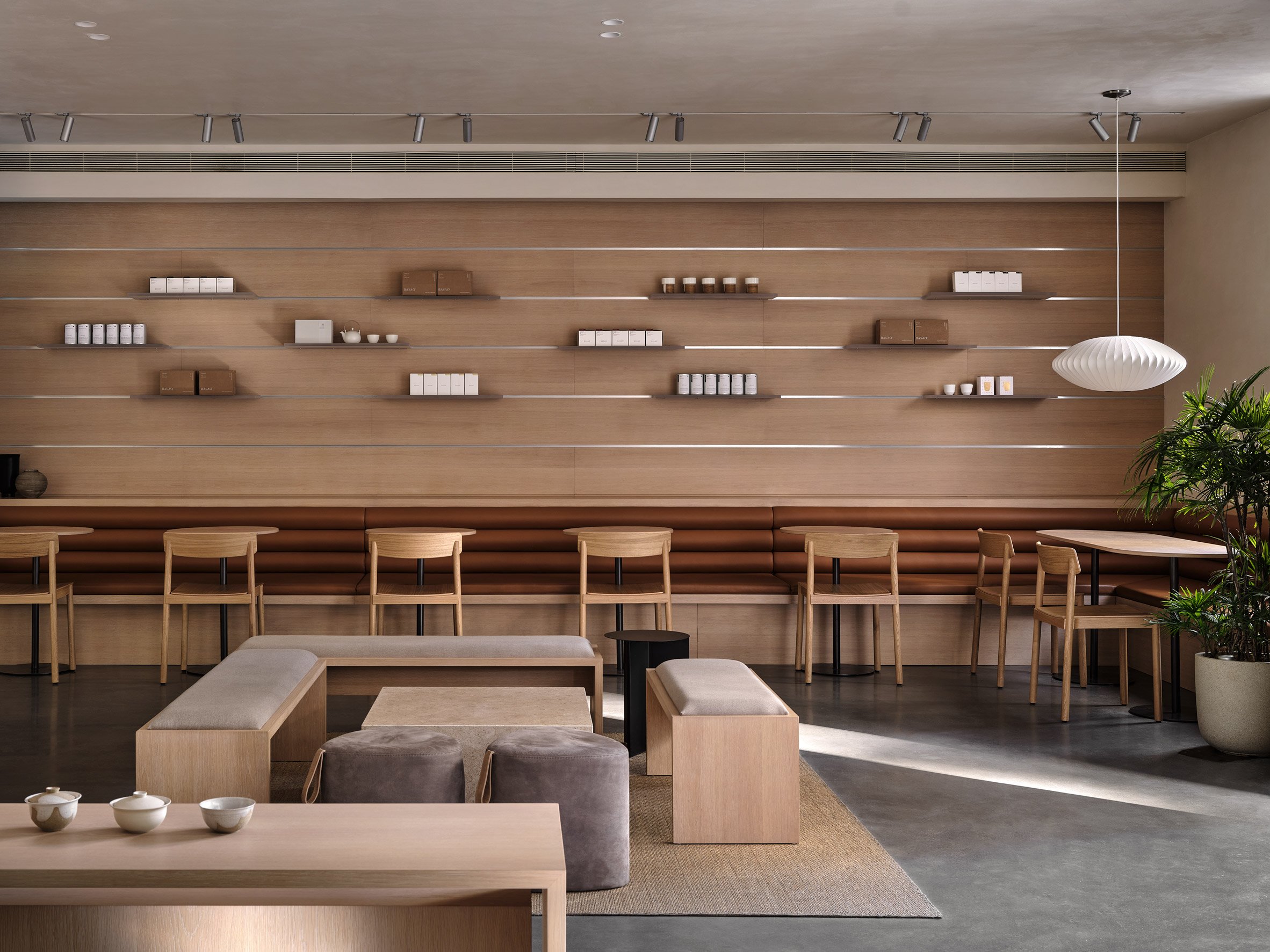 More seating lies at the room's periphery
More seating lies at the room's periphery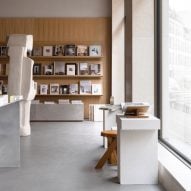
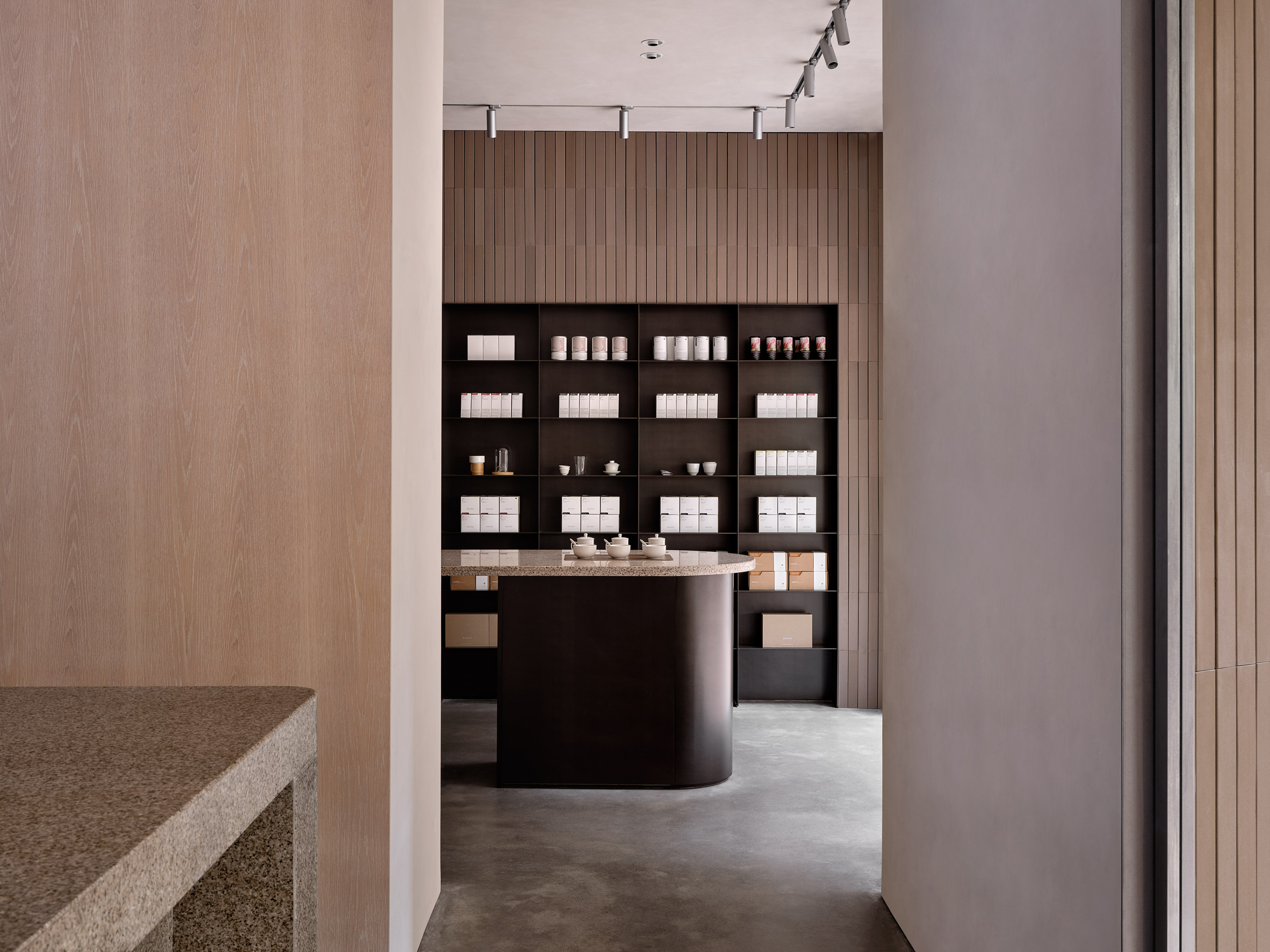 Black steel shelves display Basao's products in the retail space
Black steel shelves display Basao's products in the retail space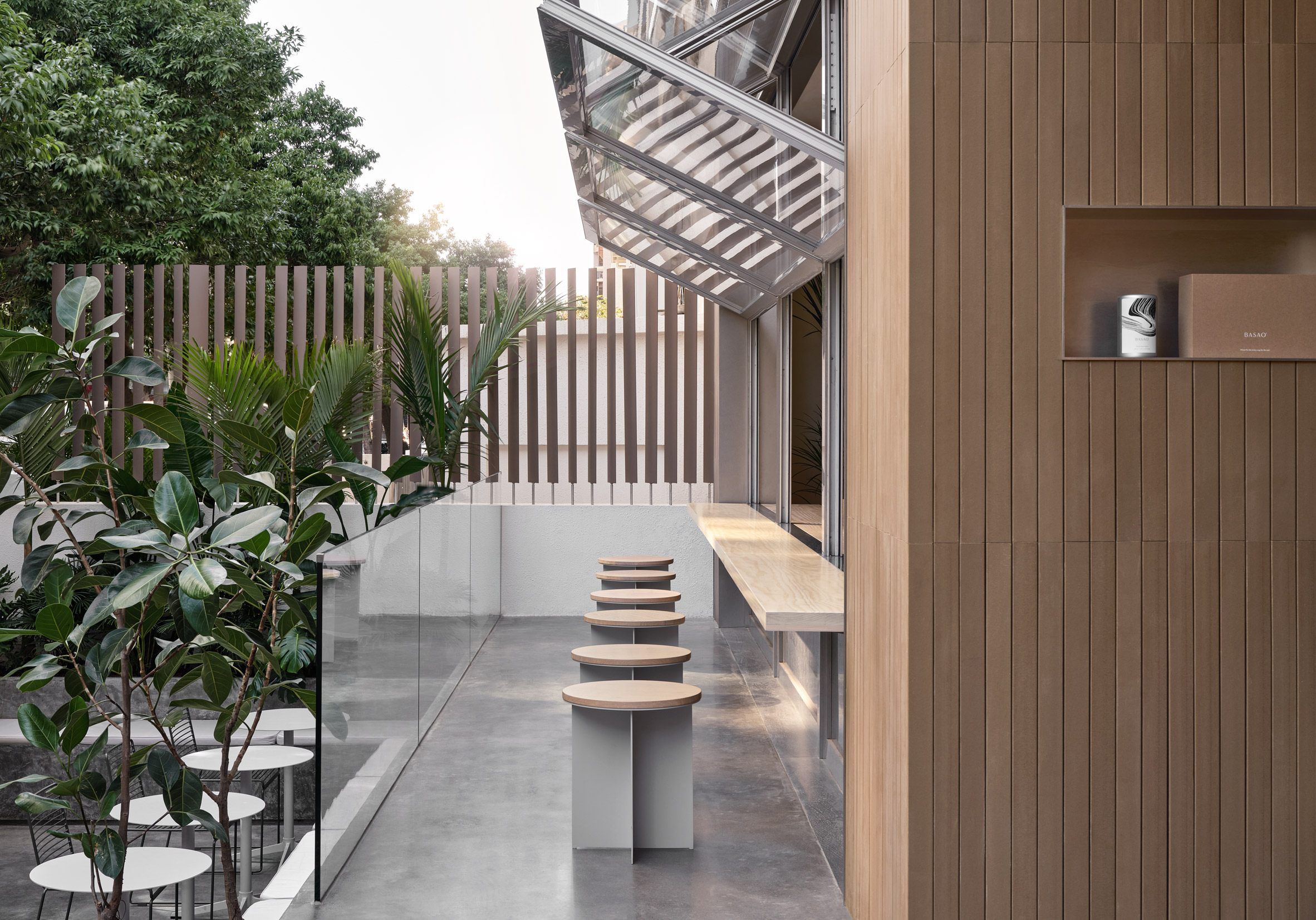 A large window allows the tea parlour's interior to be opened up to the outdoors
A large window allows the tea parlour's interior to be opened up to the outdoors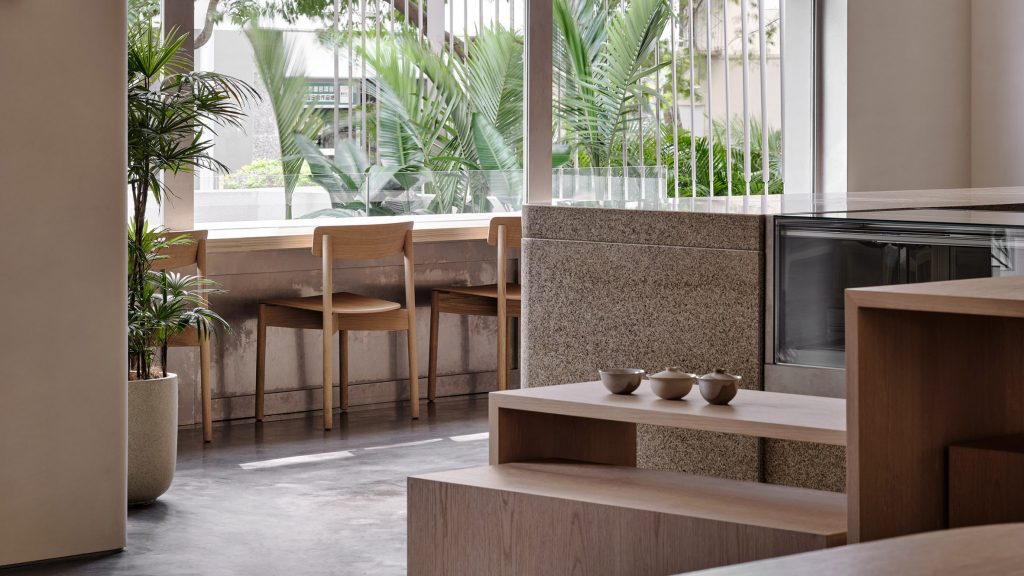
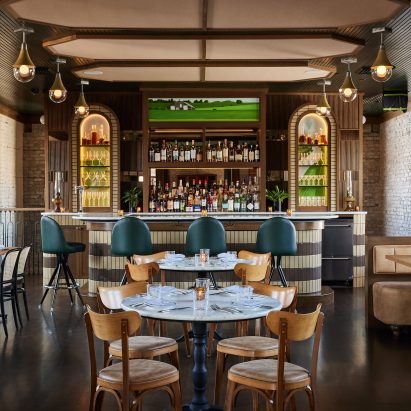
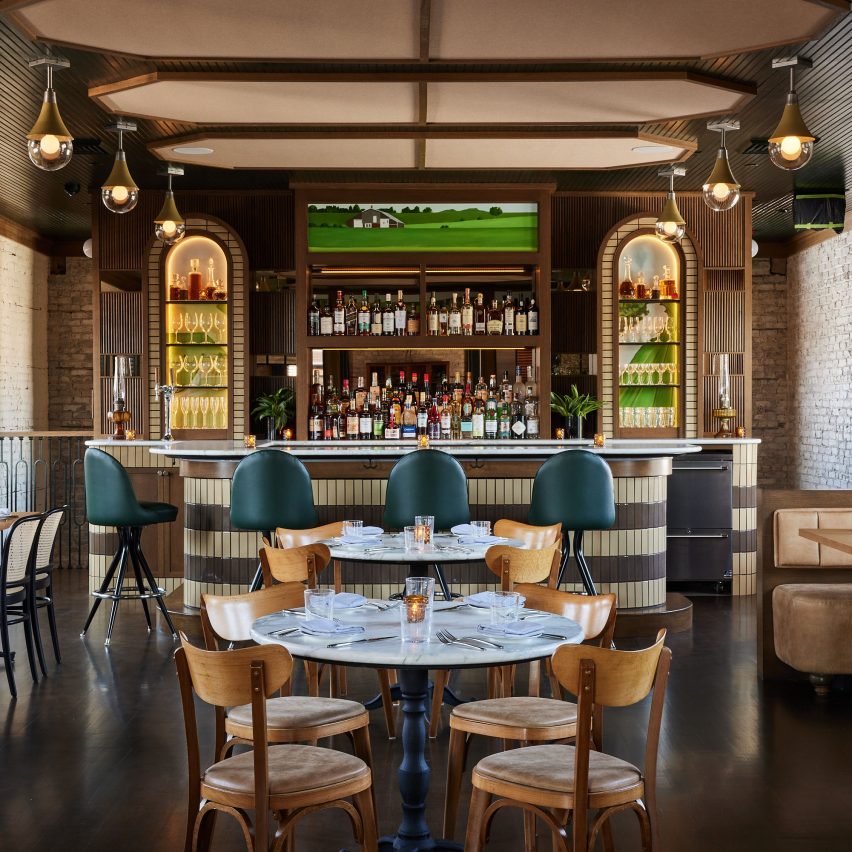
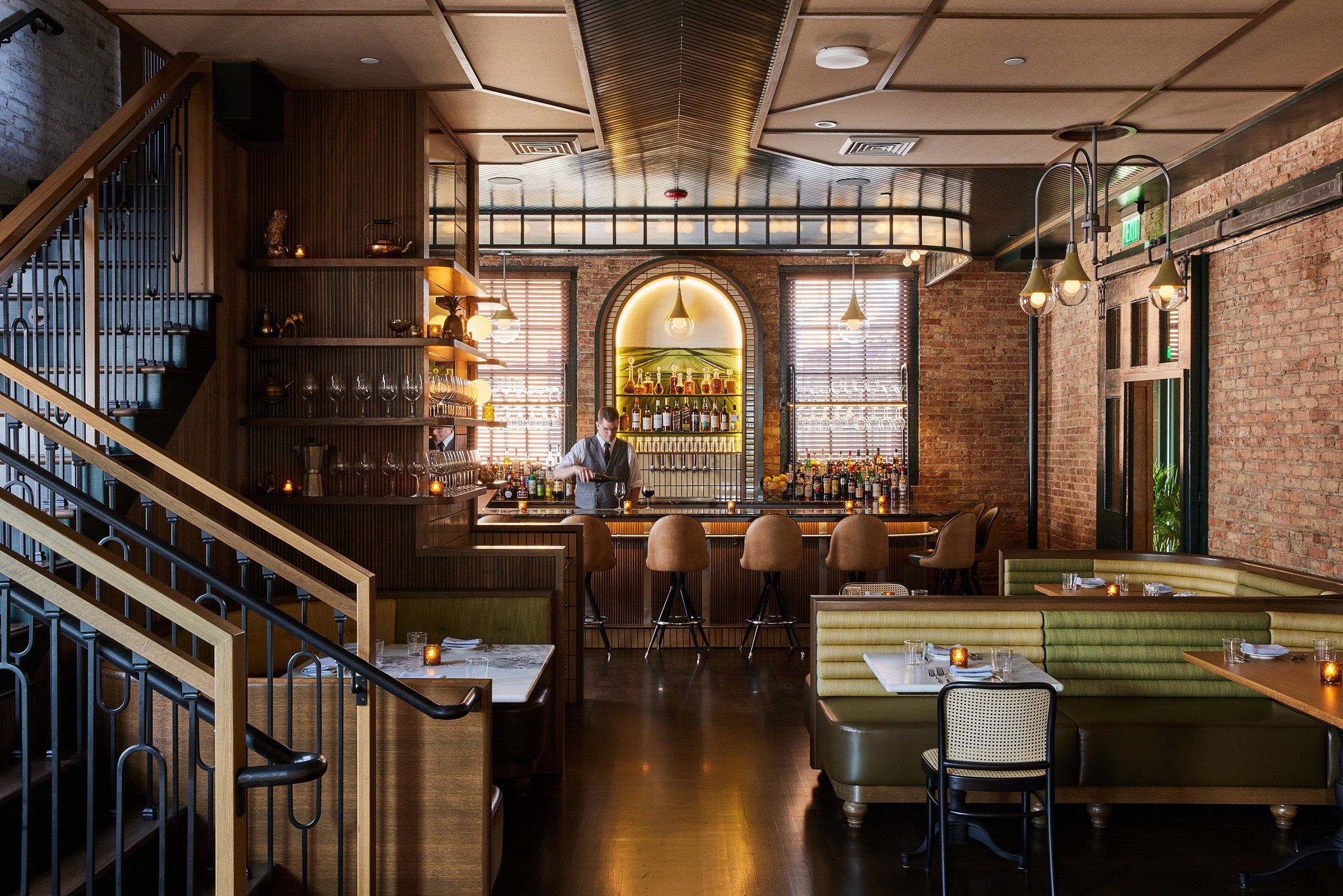 The Harvey House occupies a two-storey baggage claim building at the old Madison train station
The Harvey House occupies a two-storey baggage claim building at the old Madison train station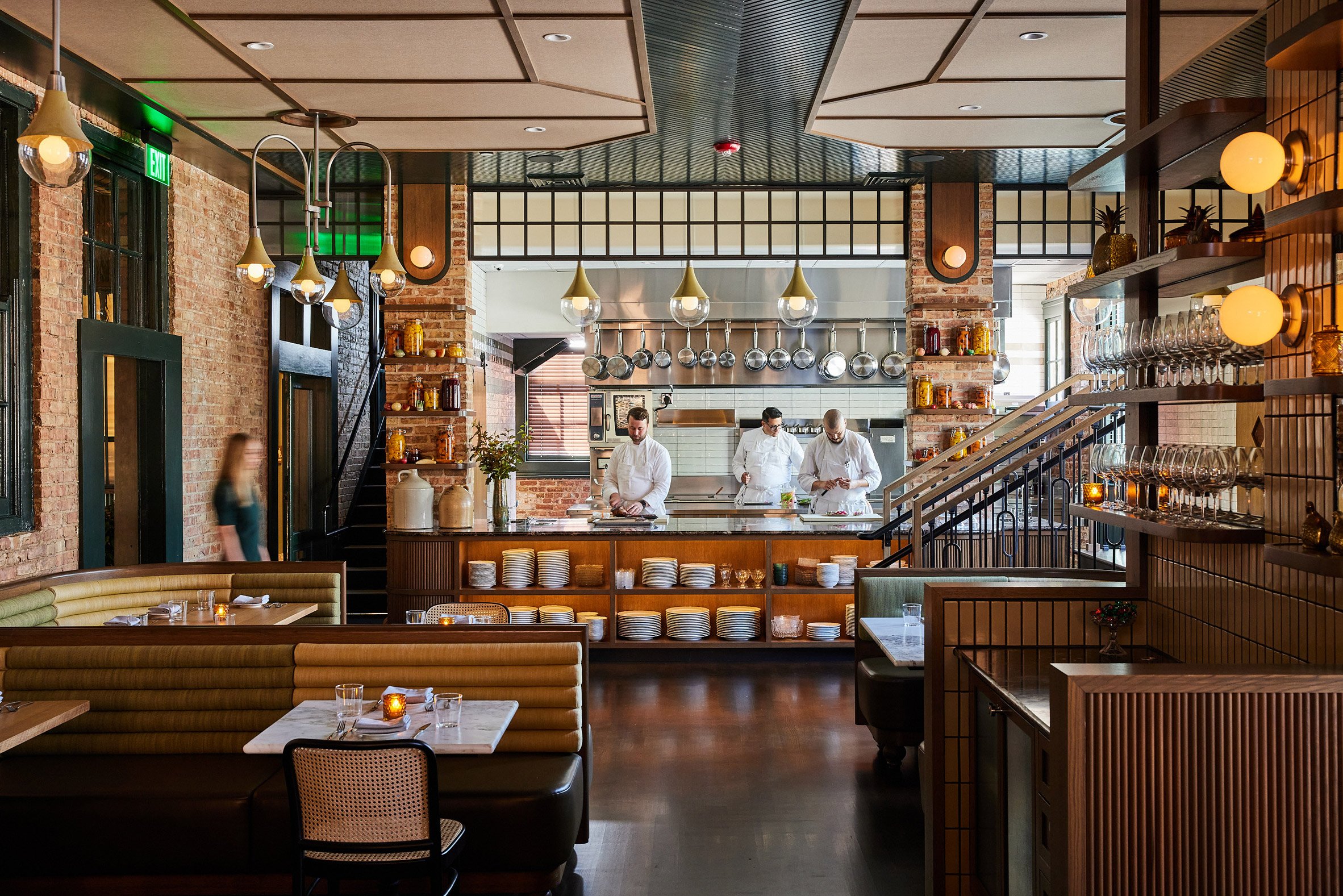 Home Studio retained many of the original features
Home Studio retained many of the original features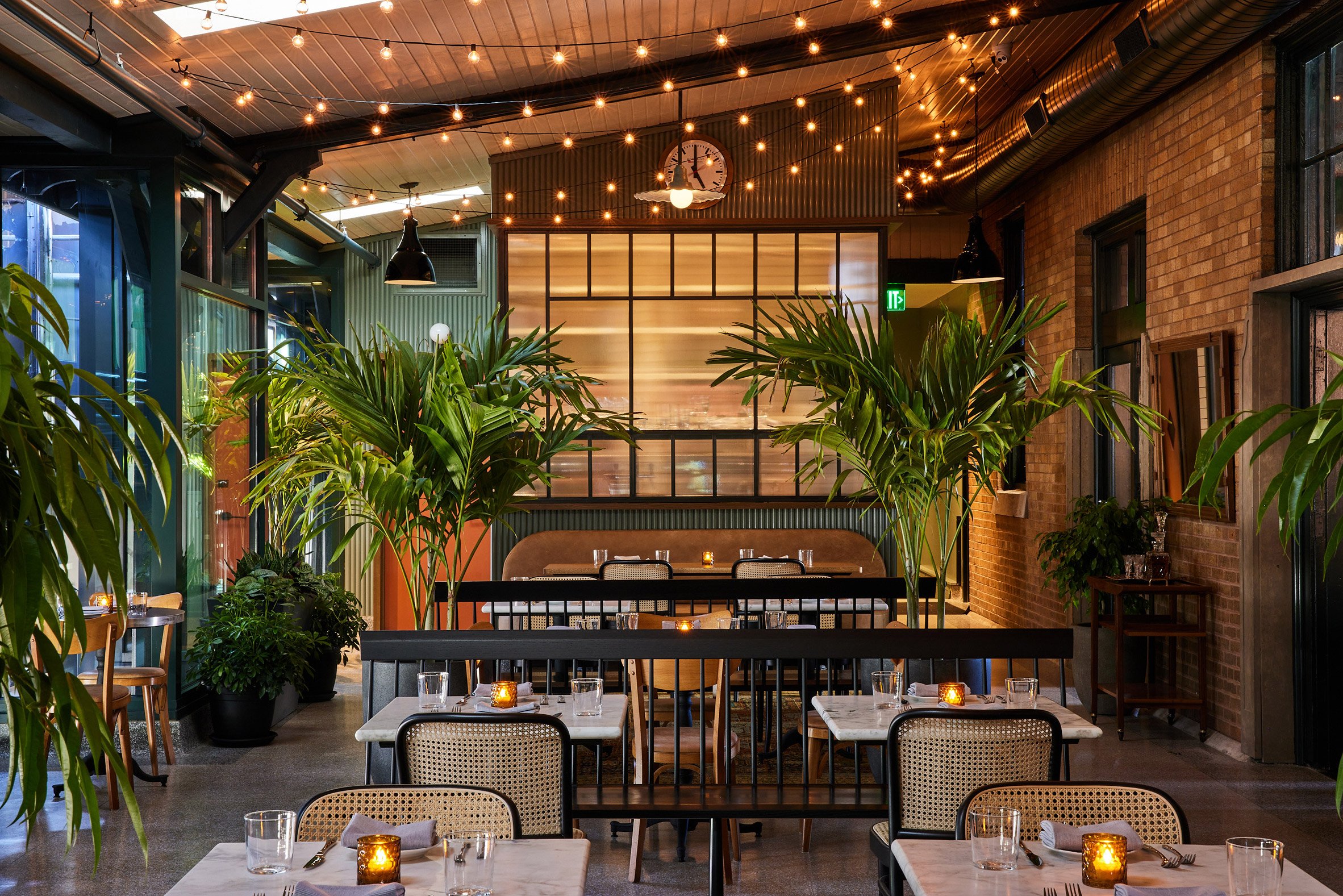 The restaurant includes a dining area on the former station platform
The restaurant includes a dining area on the former station platform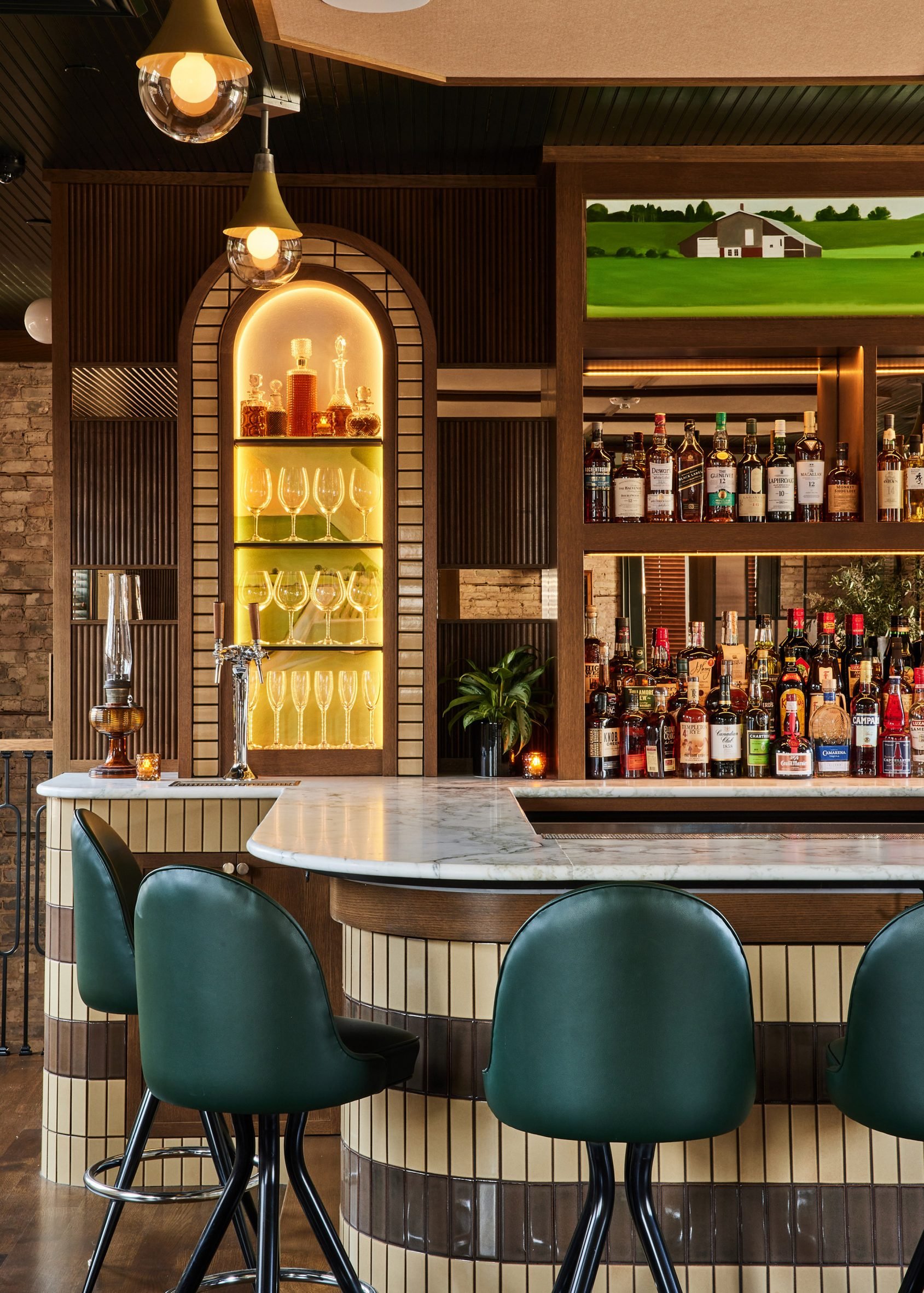 Works by a local artist decorate panels behind the upstairs bar and its equivalent on the floor below
Works by a local artist decorate panels behind the upstairs bar and its equivalent on the floor below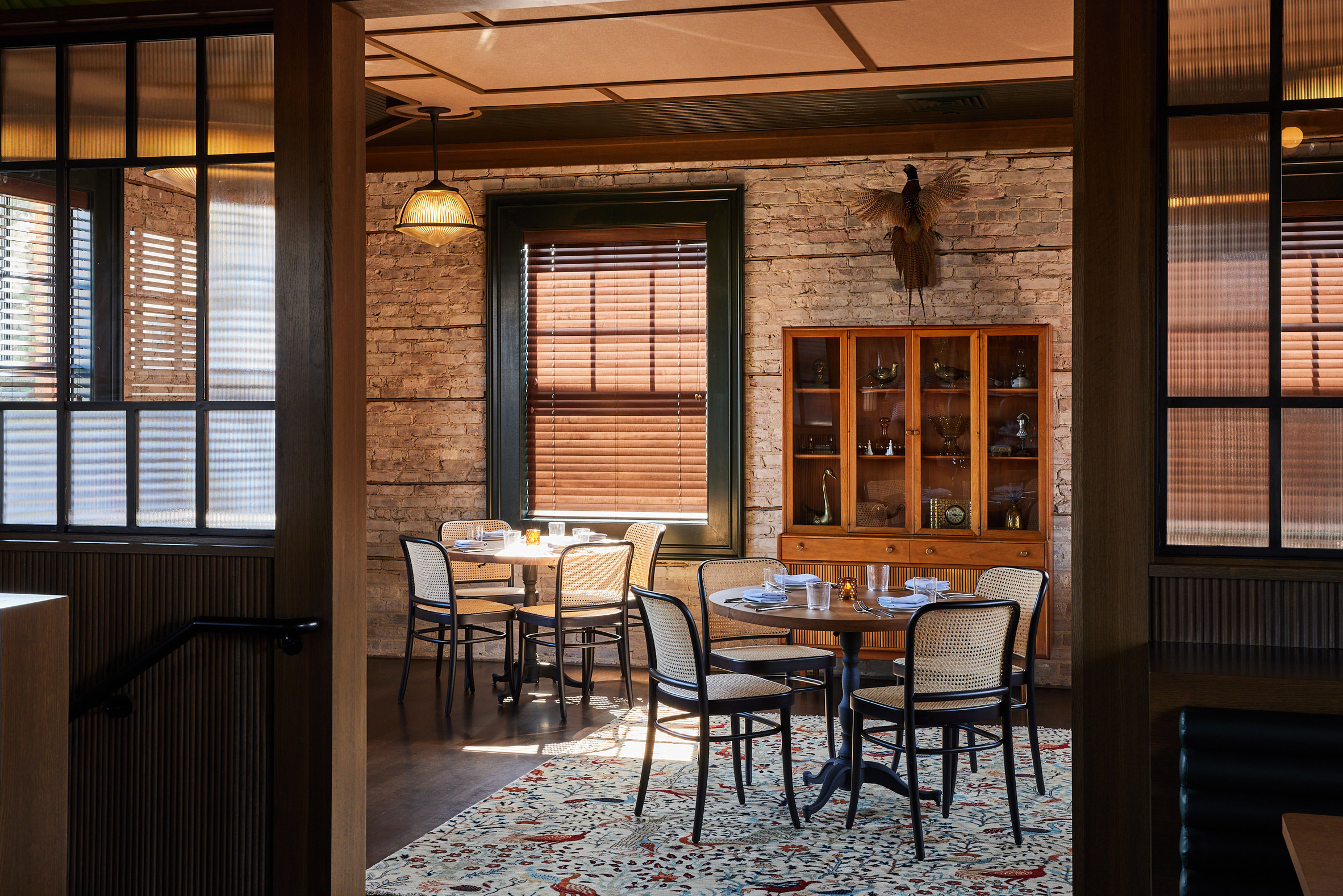 Wood and glass partitions divide the upstairs dining areas
Wood and glass partitions divide the upstairs dining areas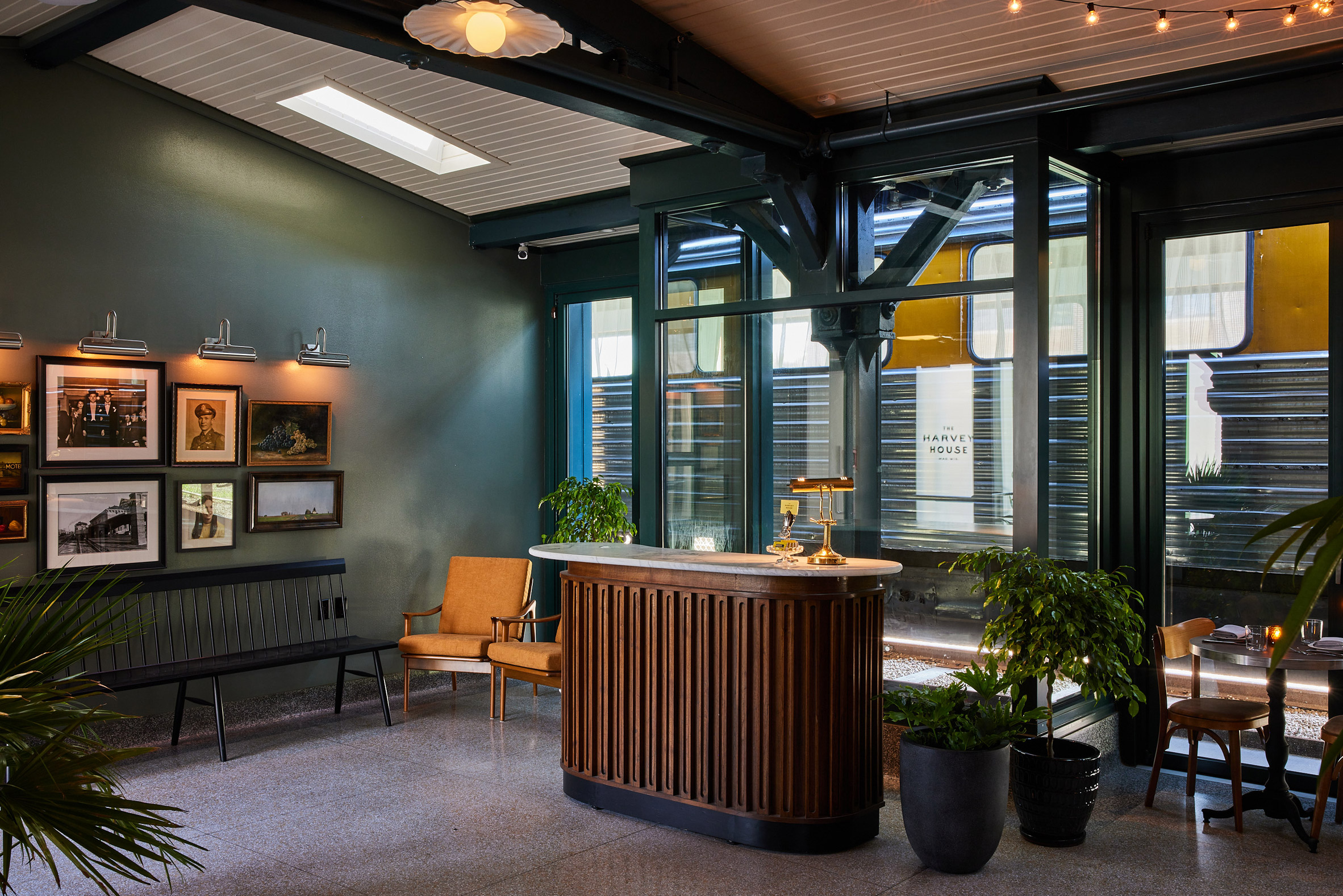 The converted train car can also be seen behind the host stand at the entrance
The converted train car can also be seen behind the host stand at the entrance